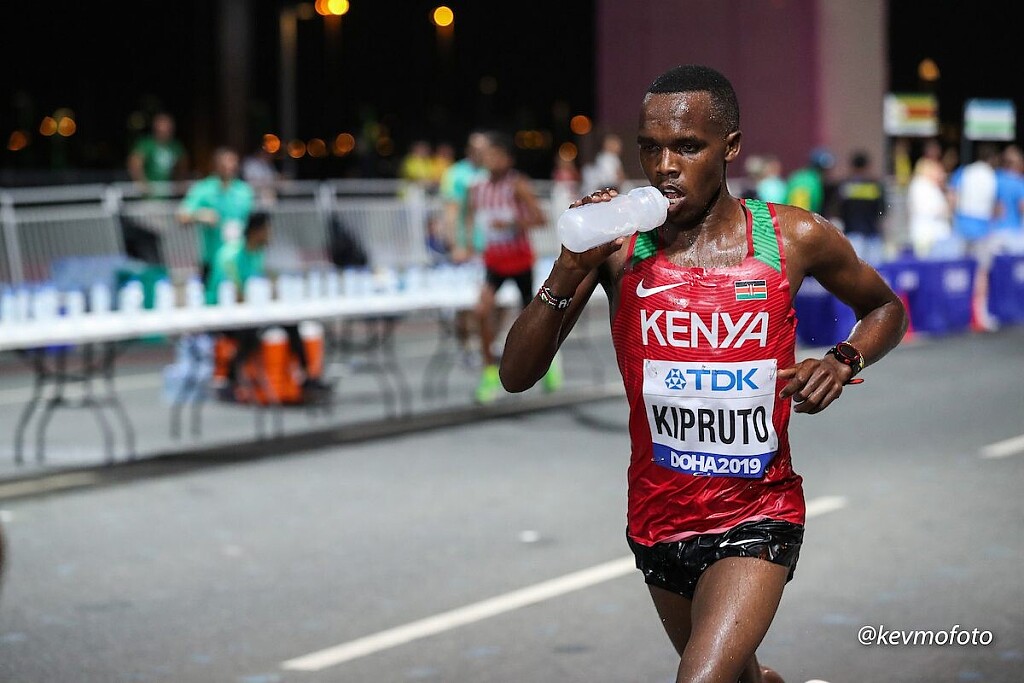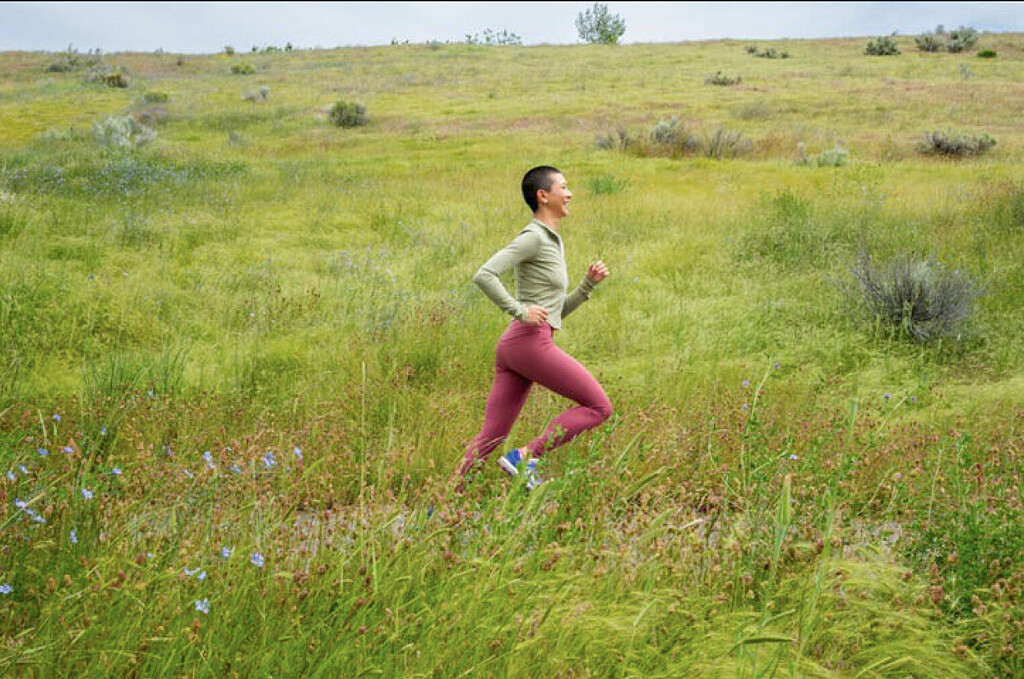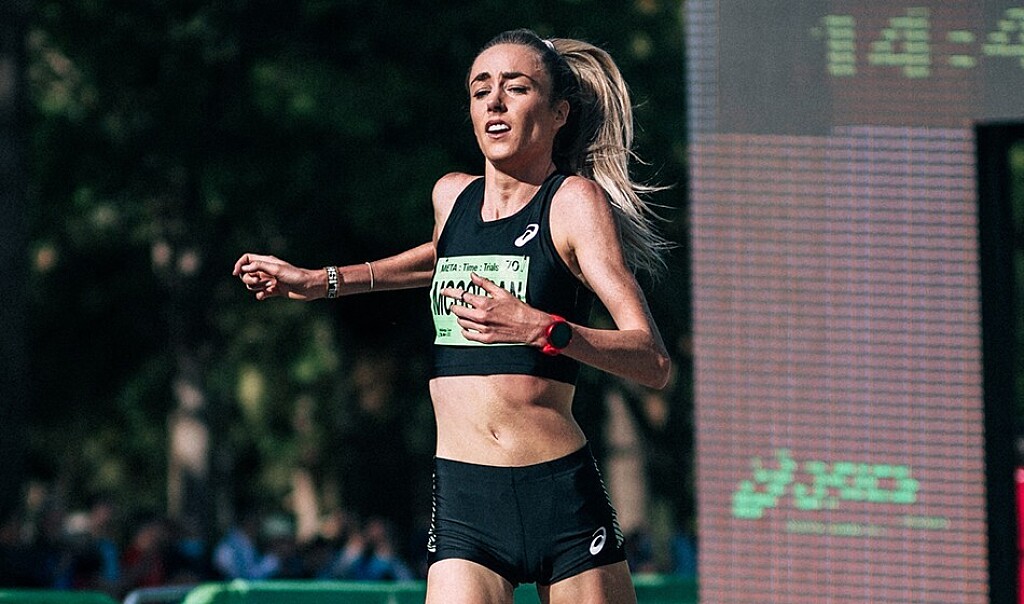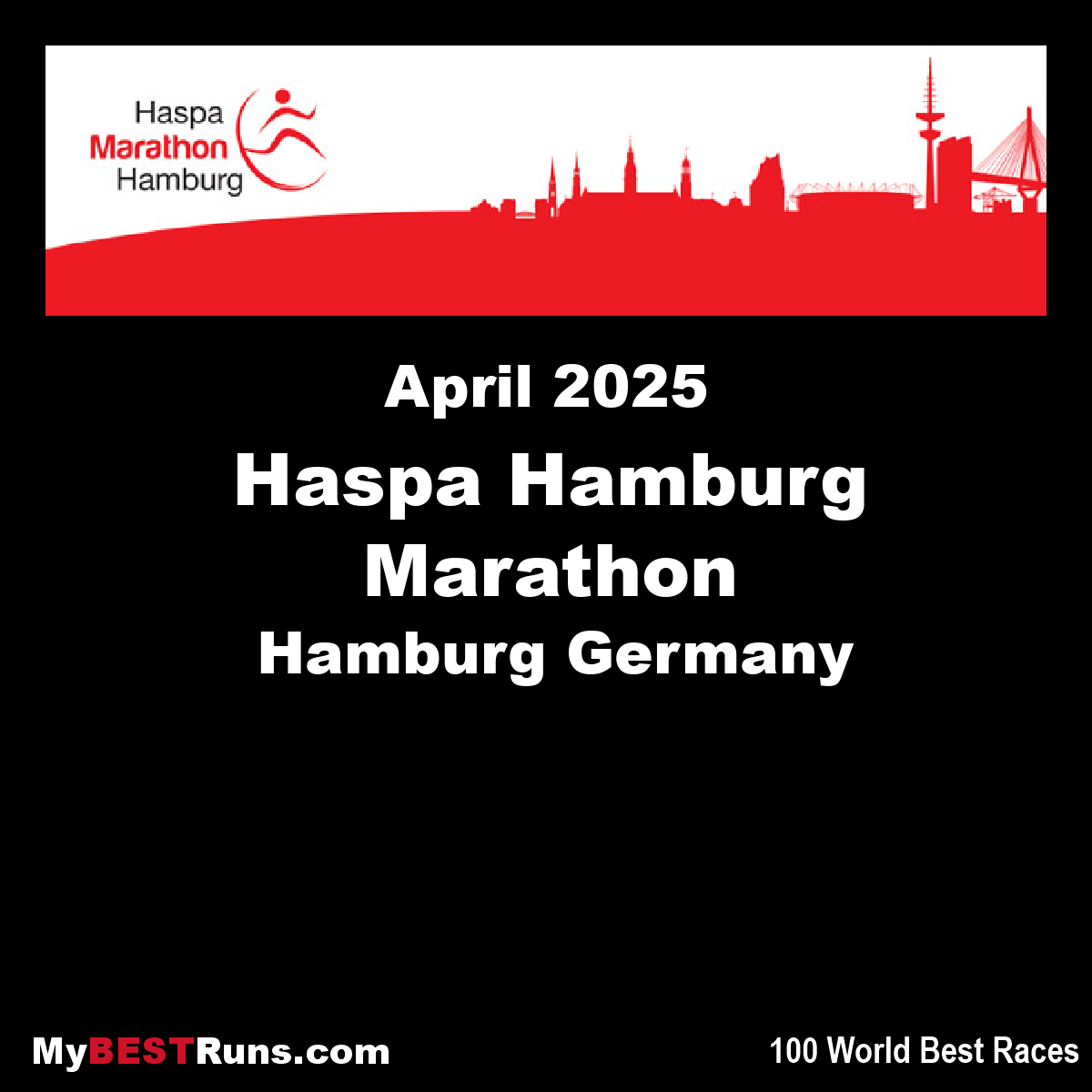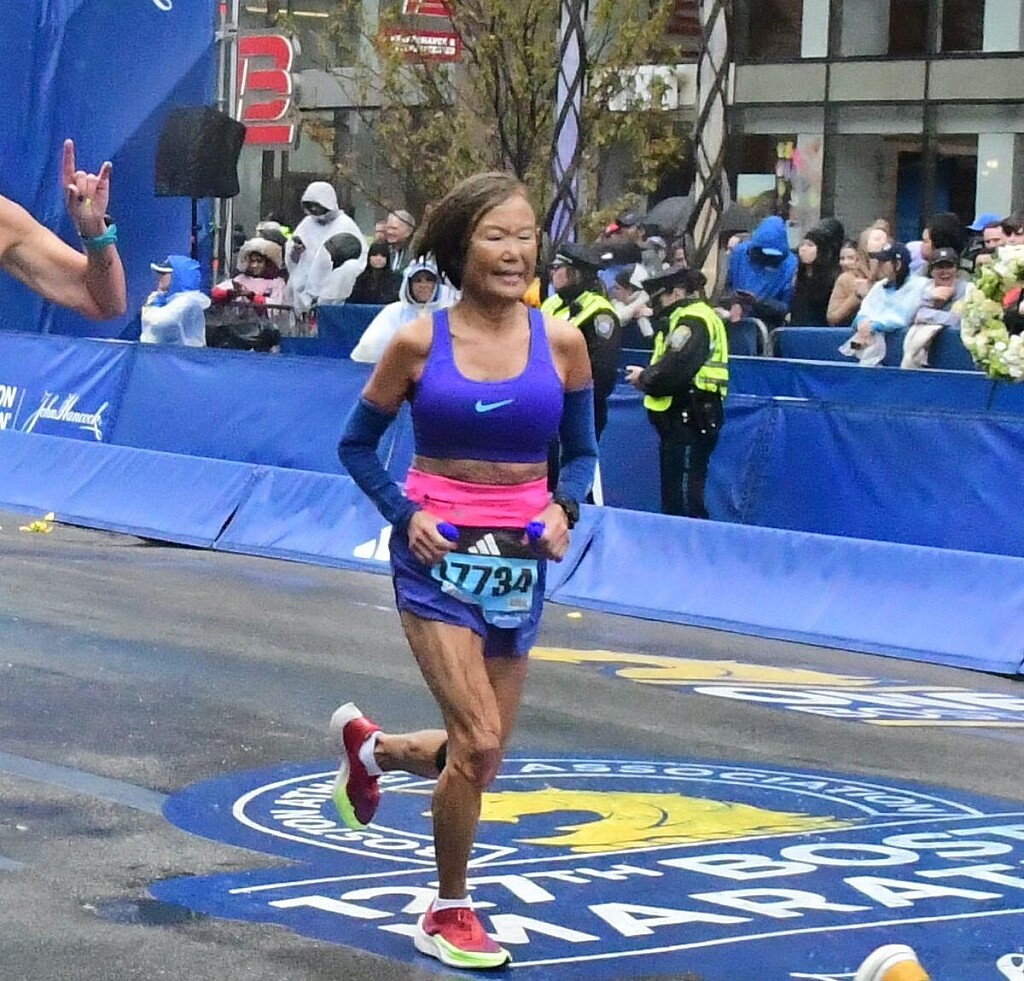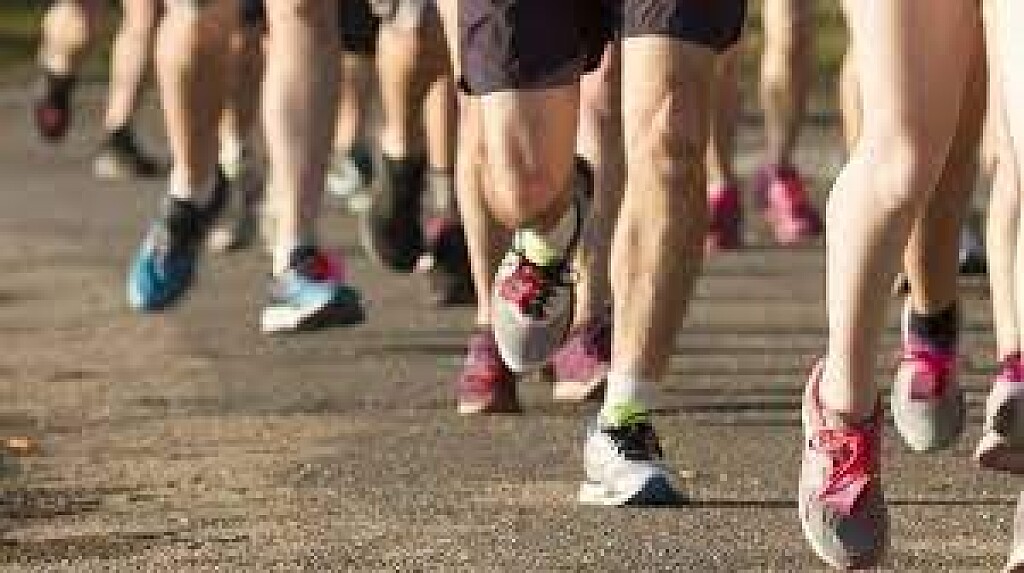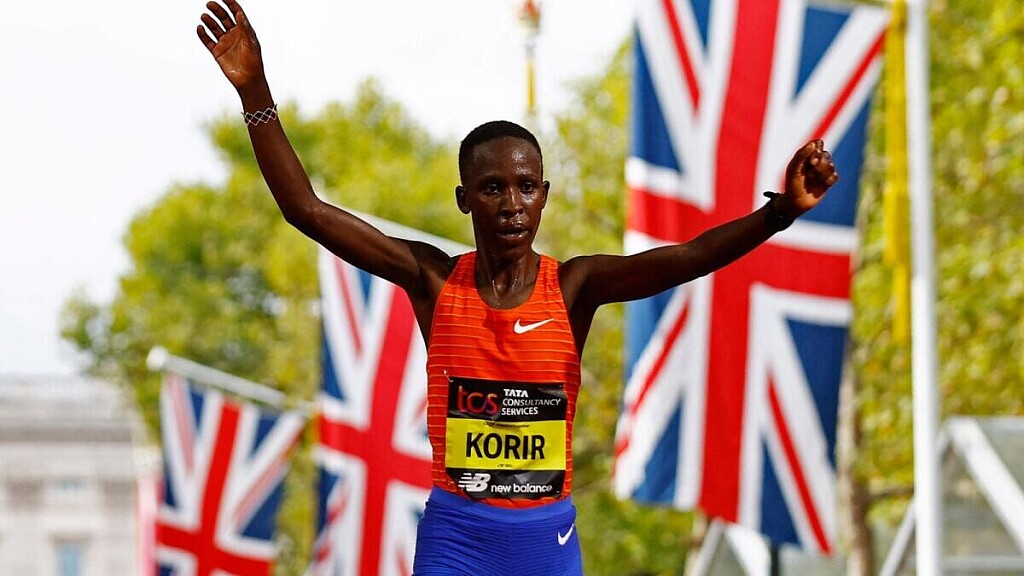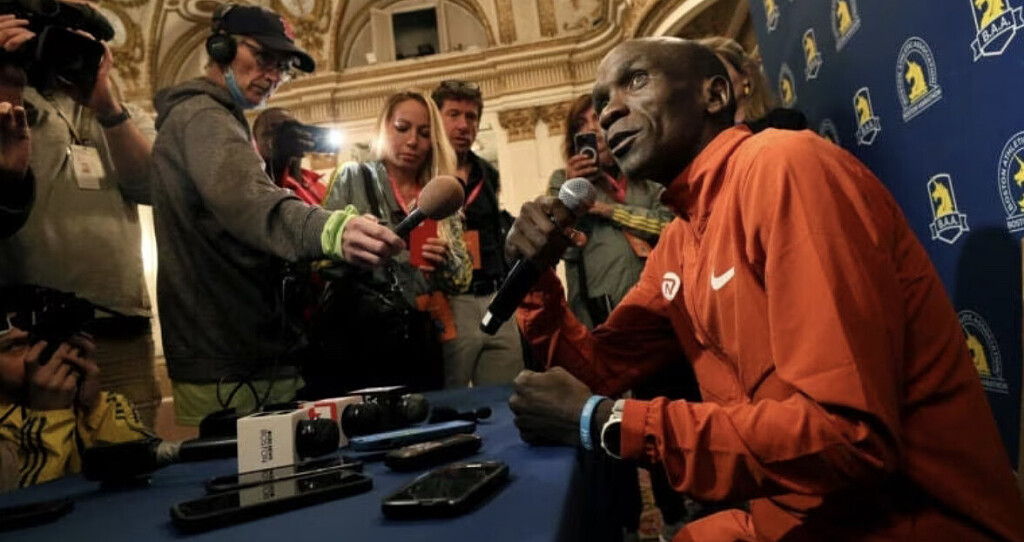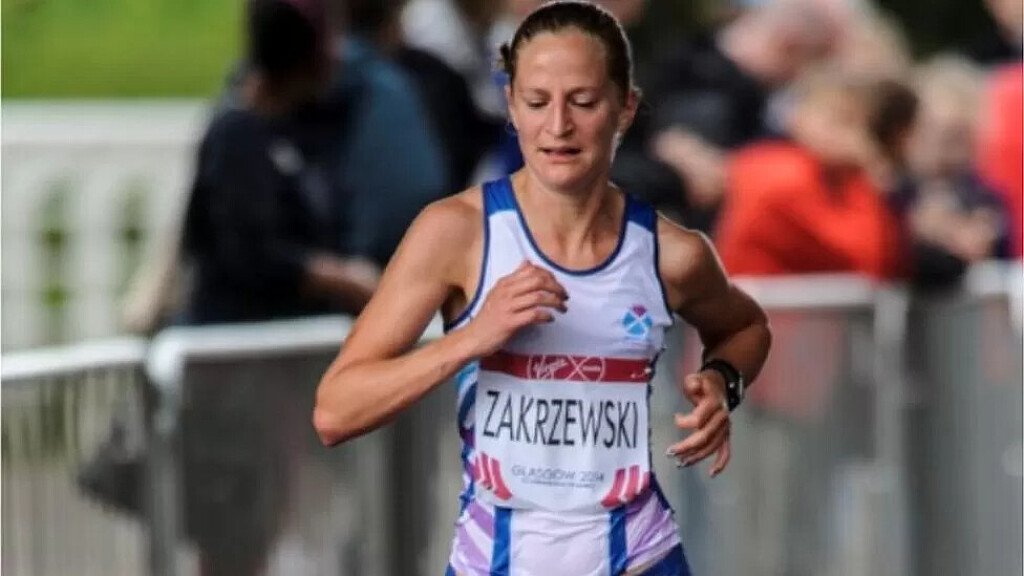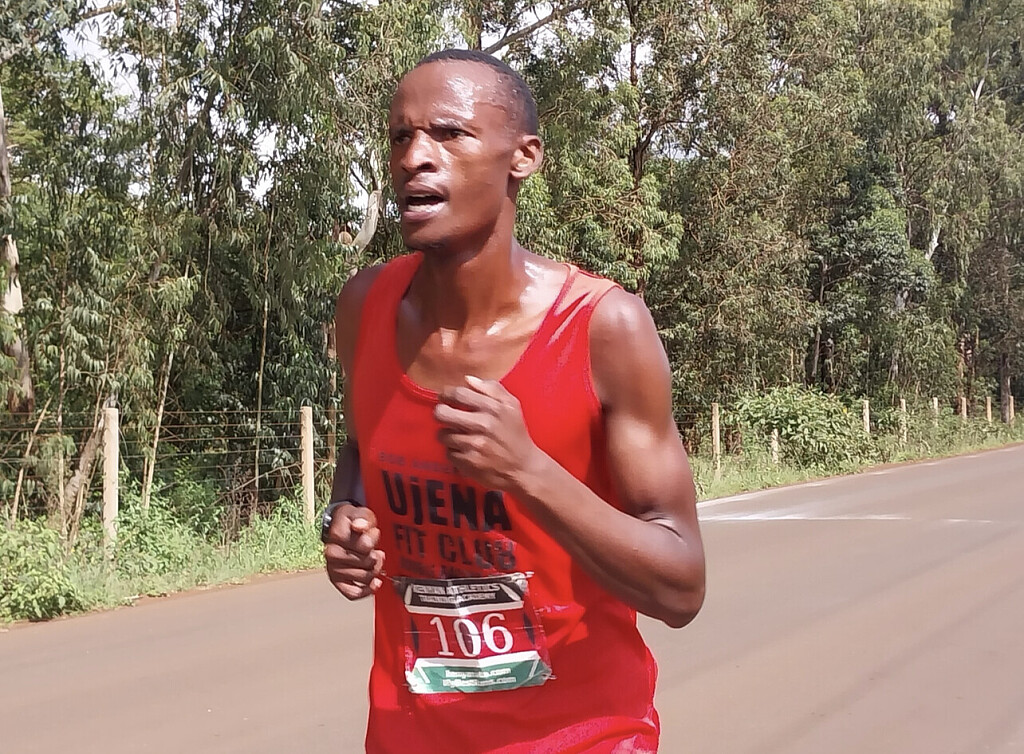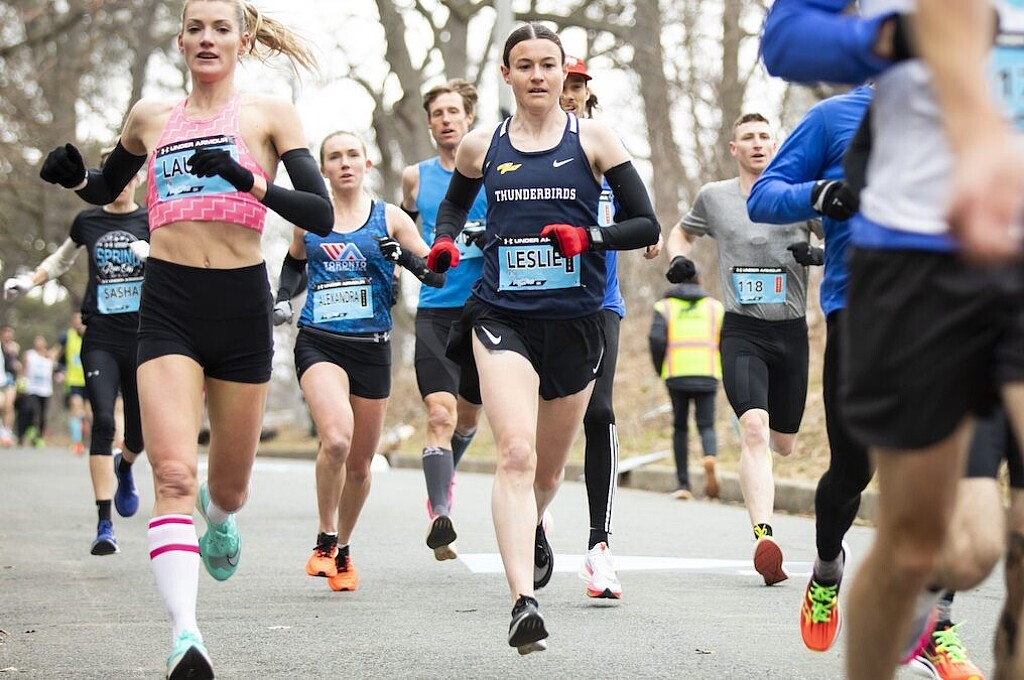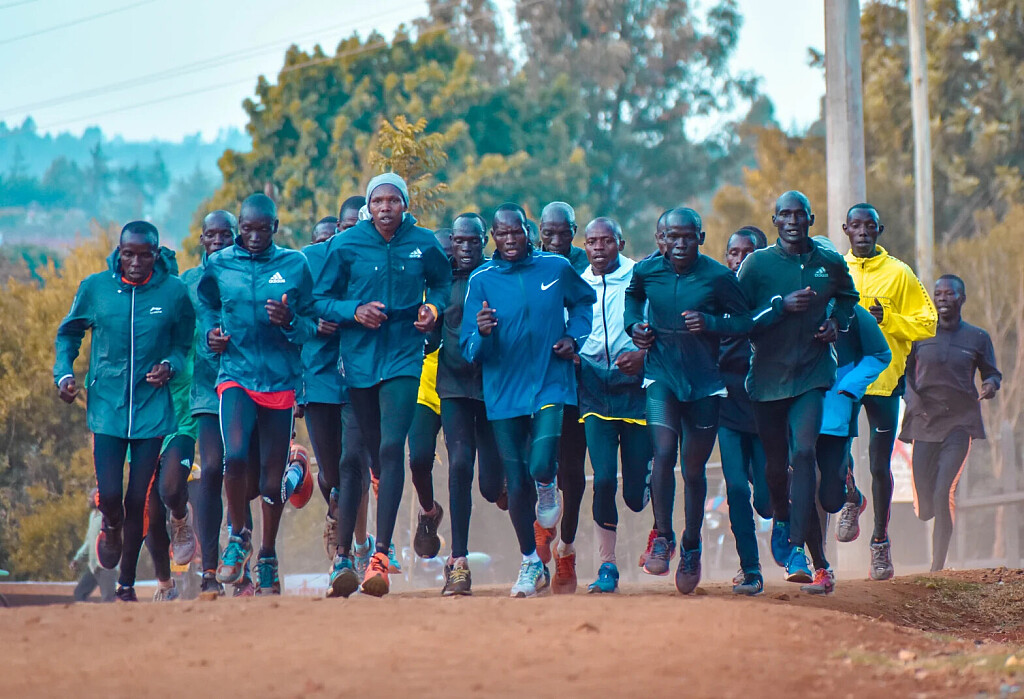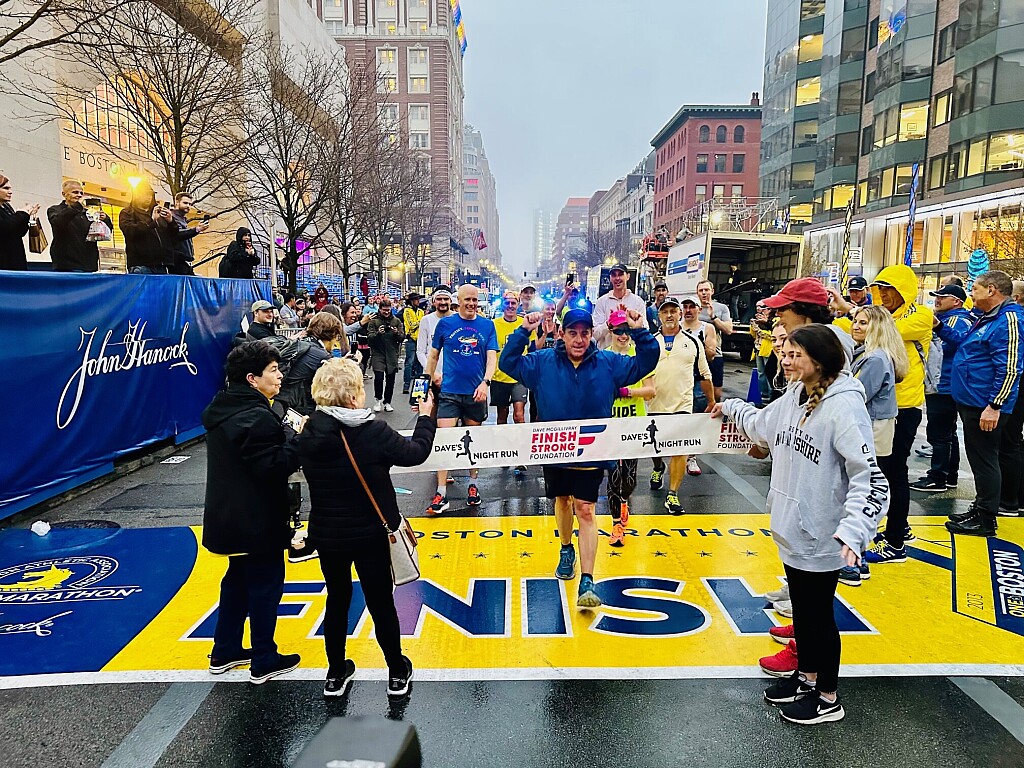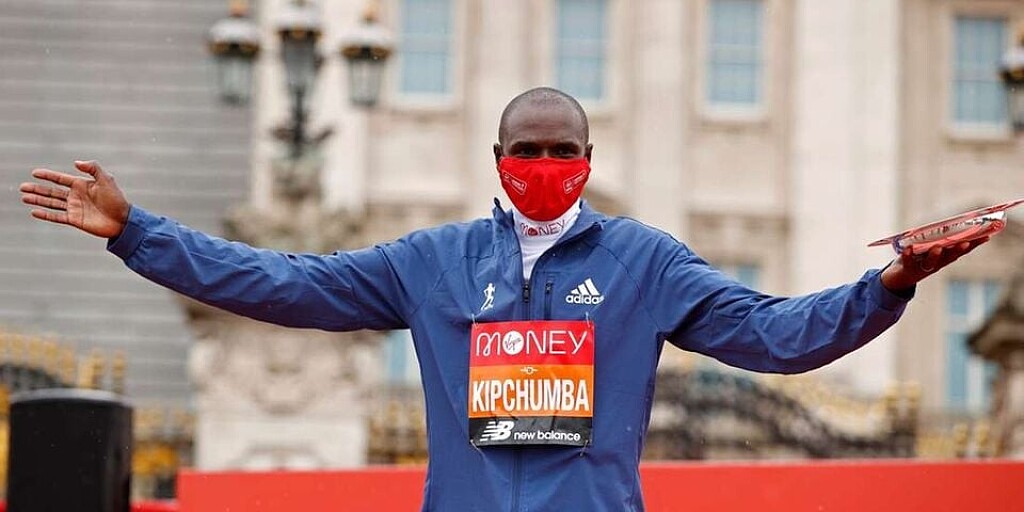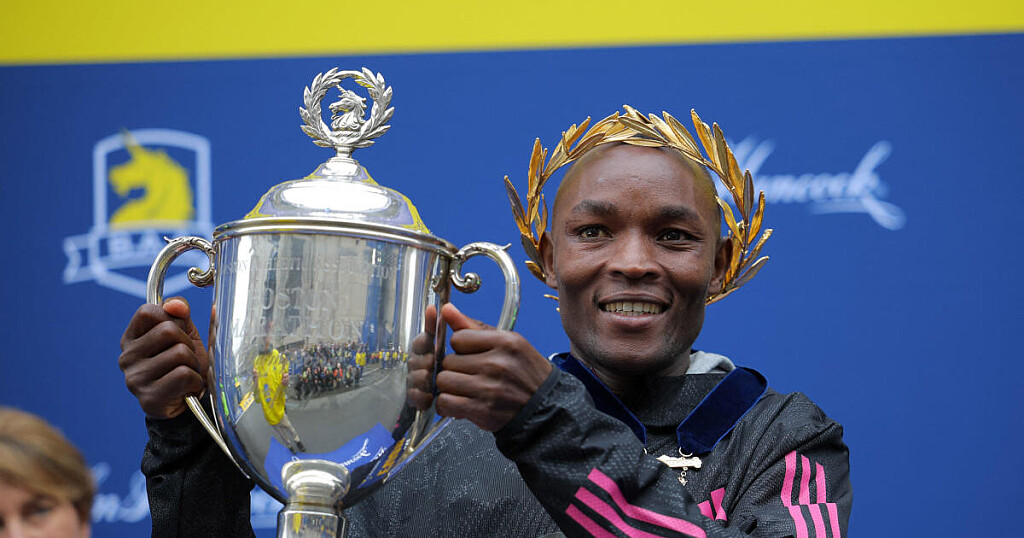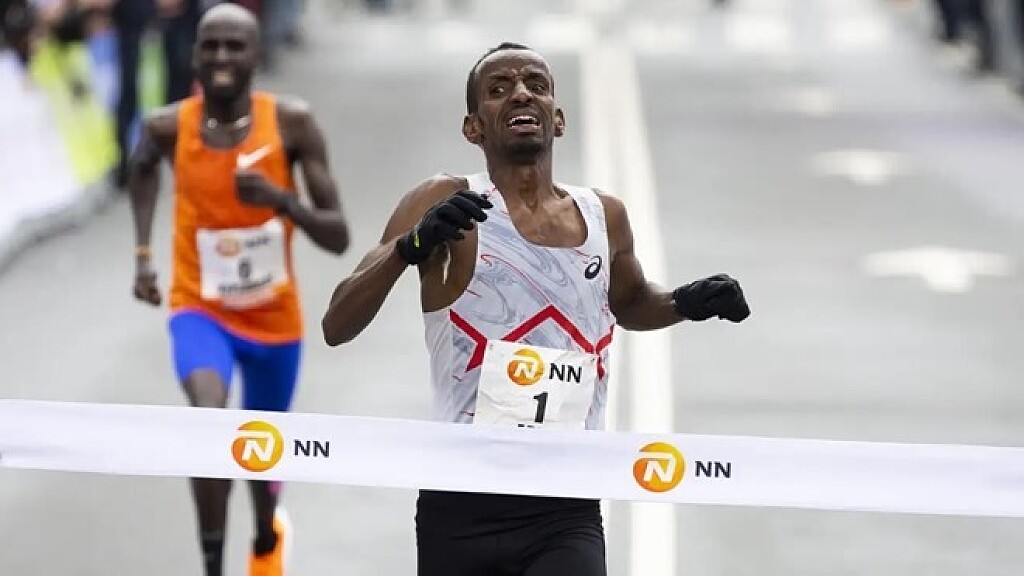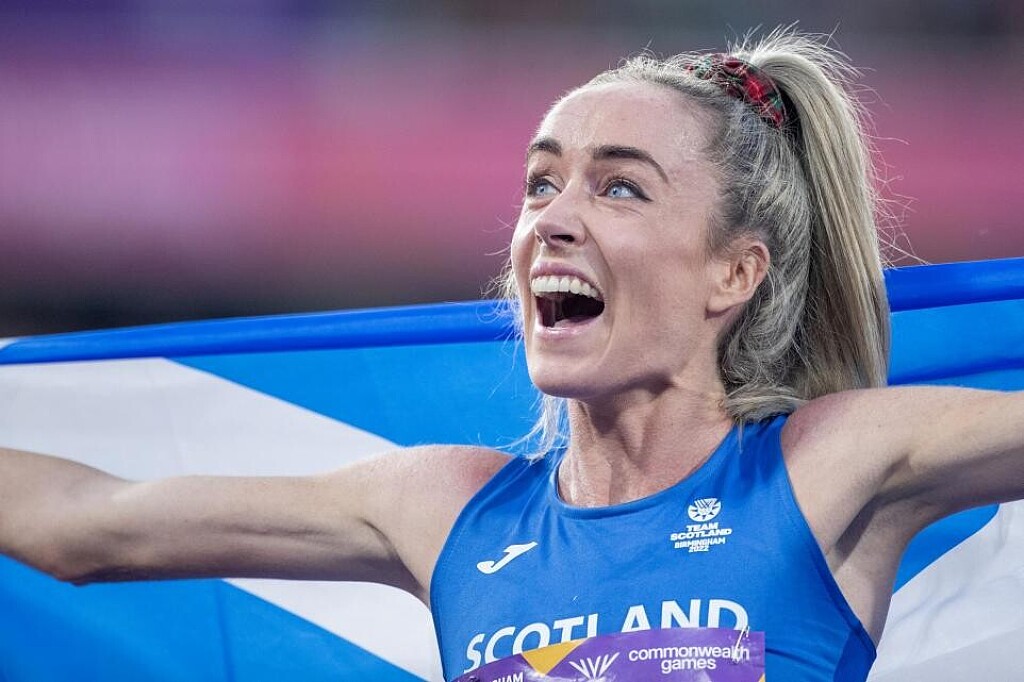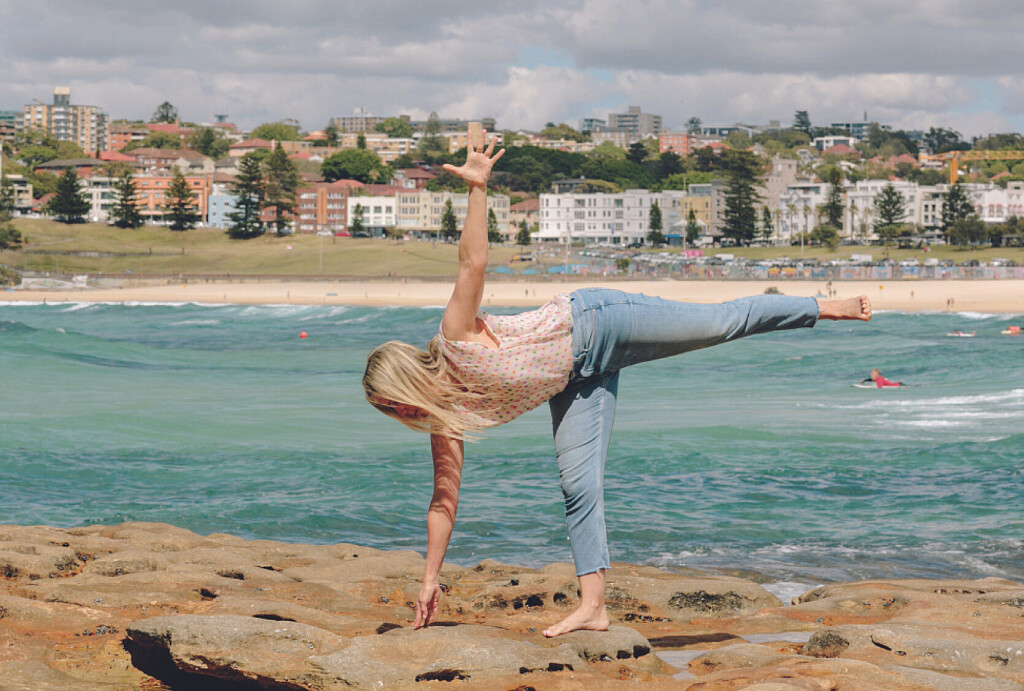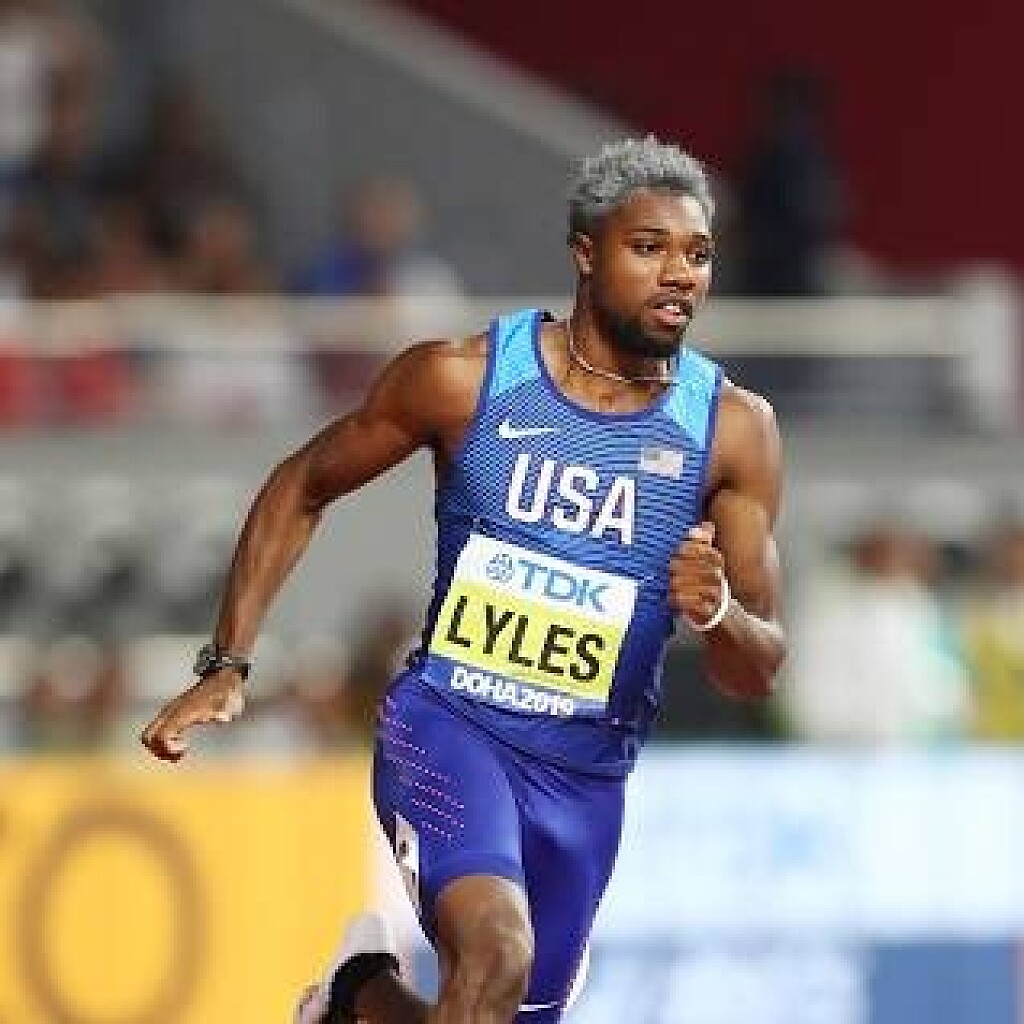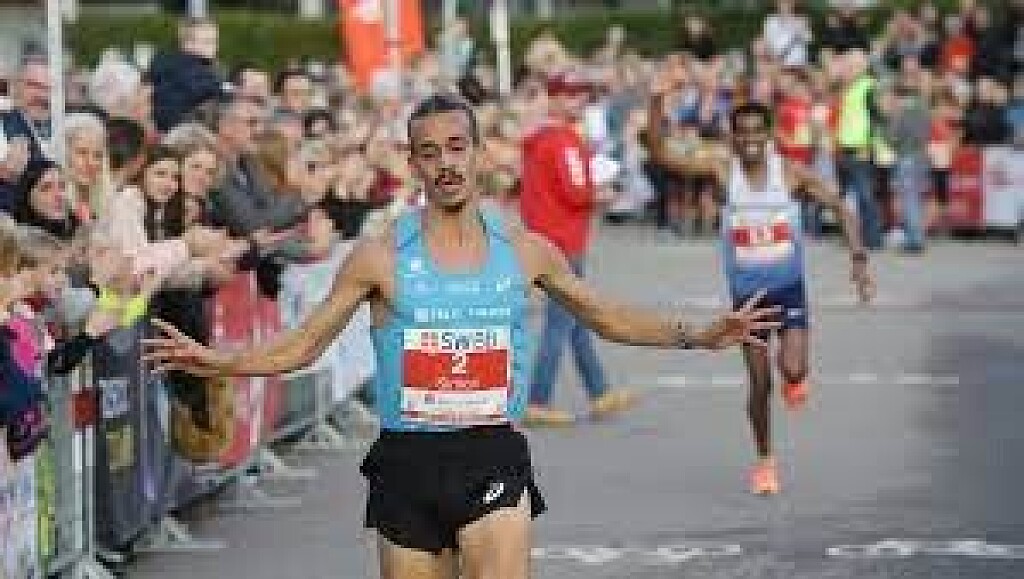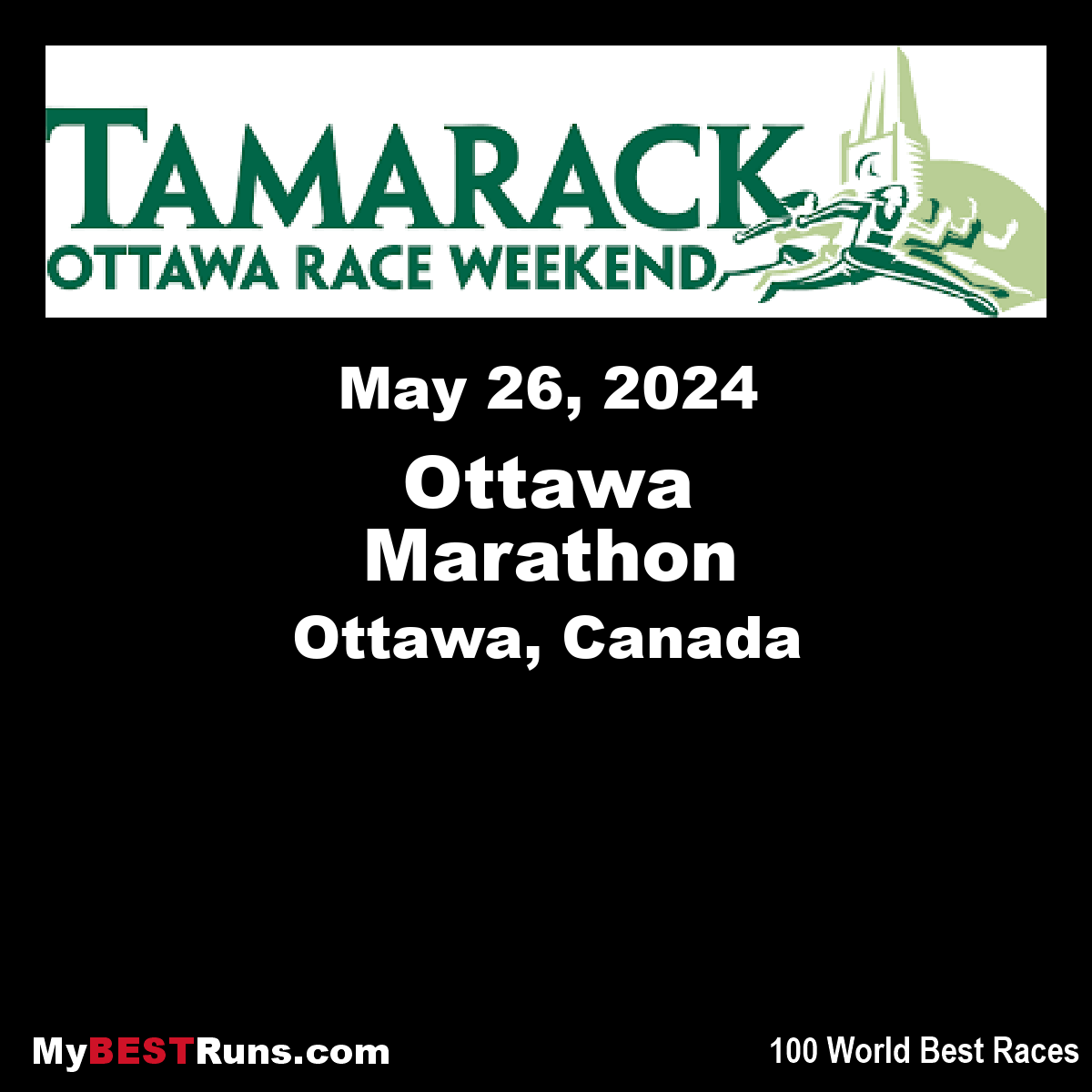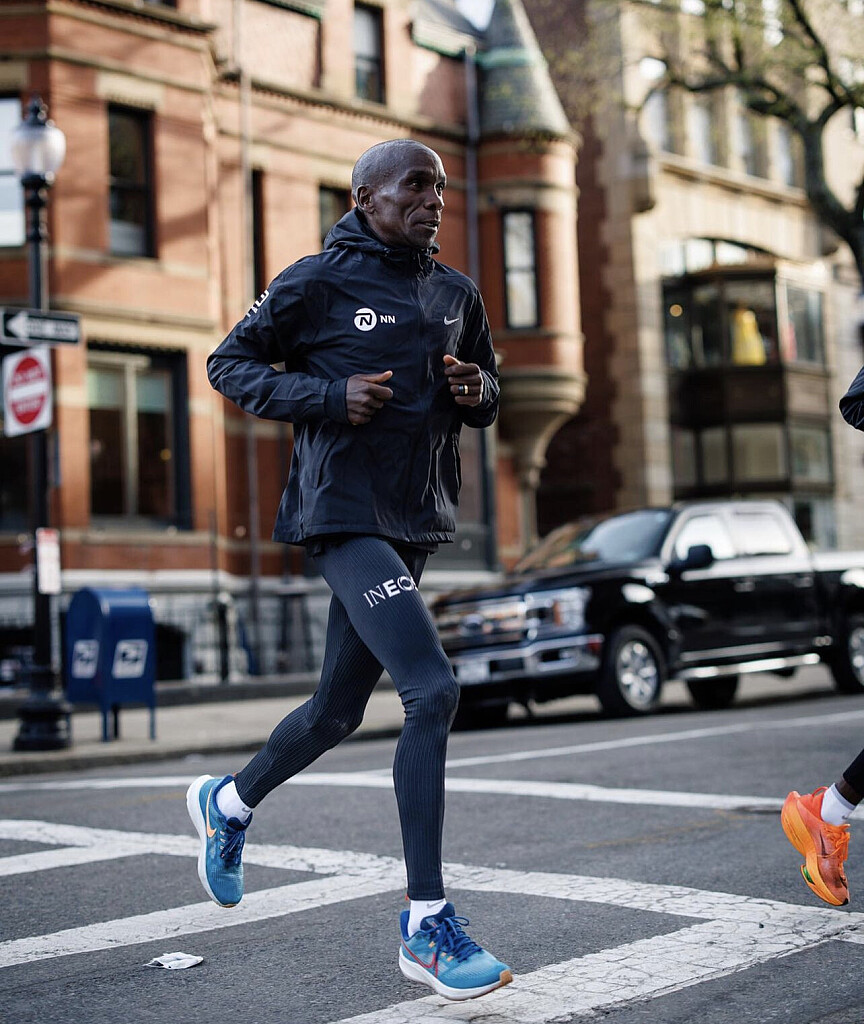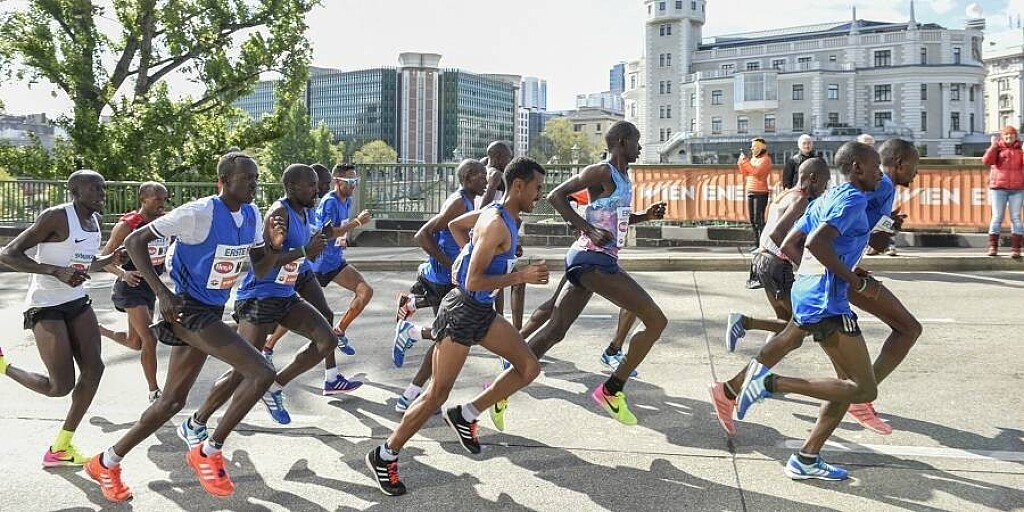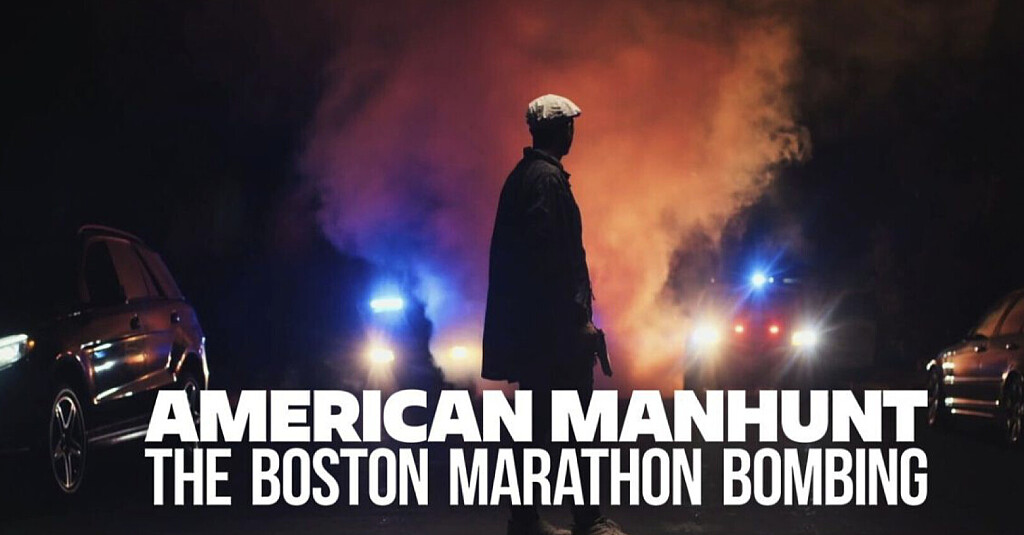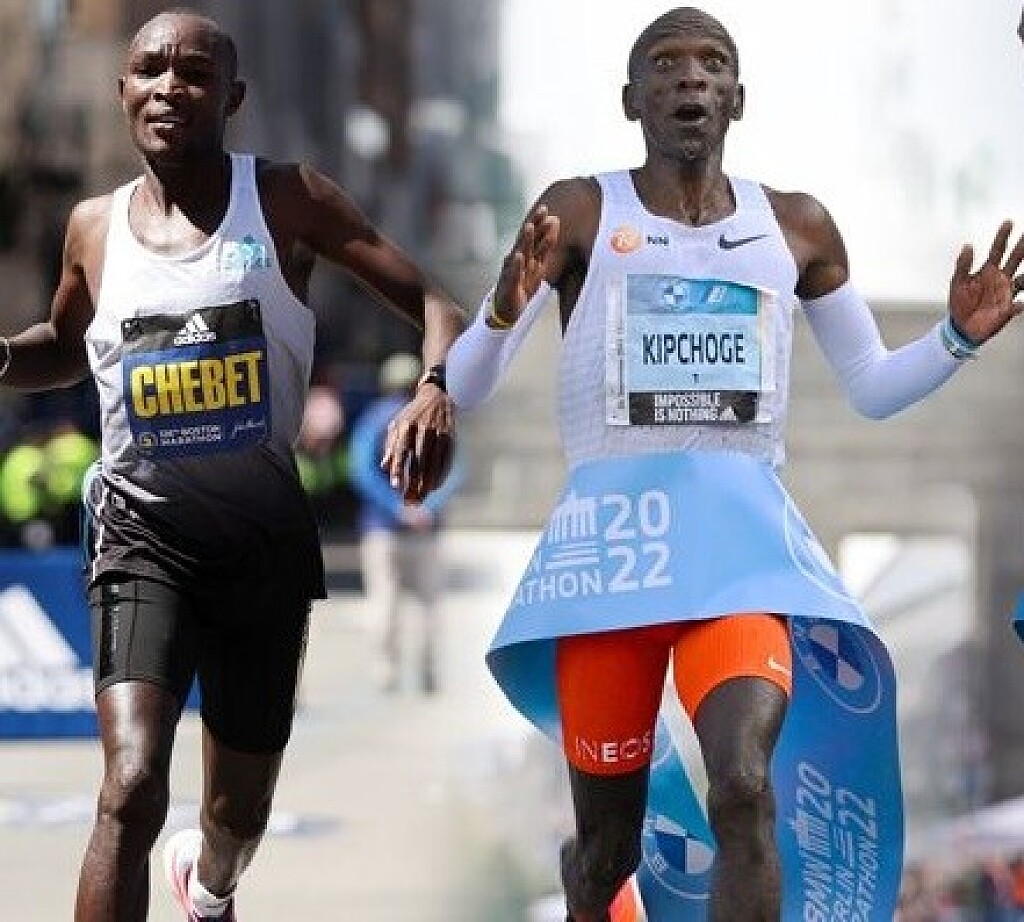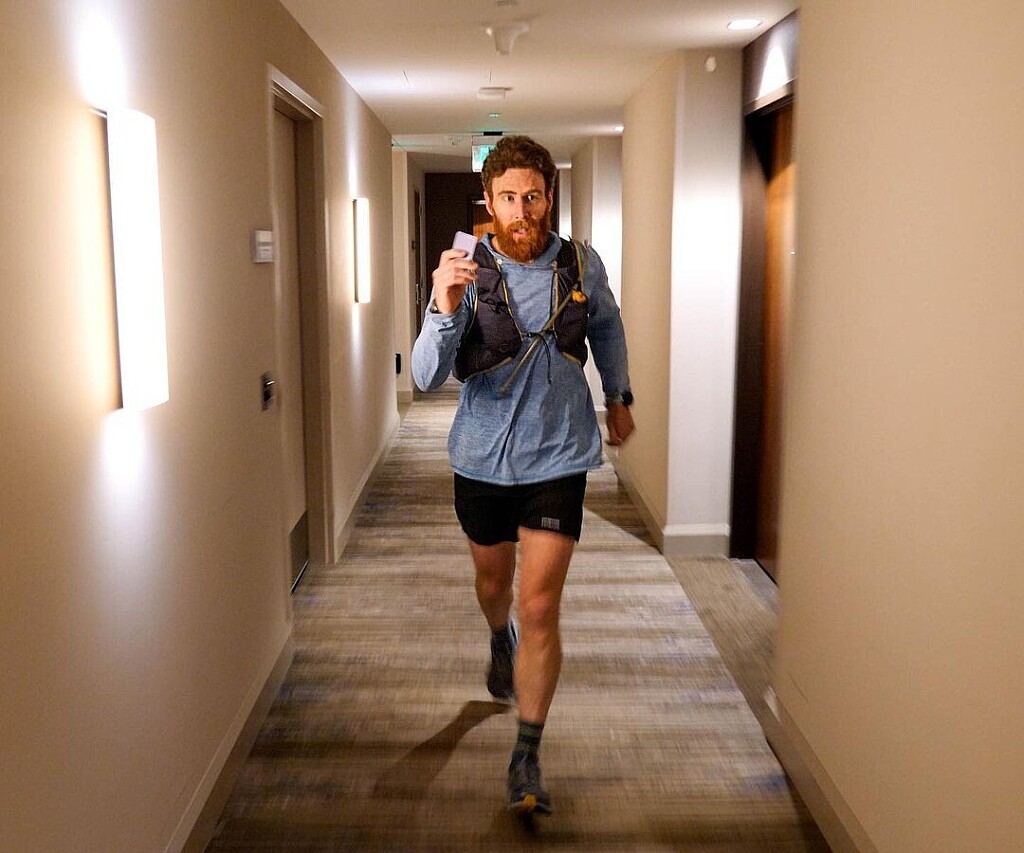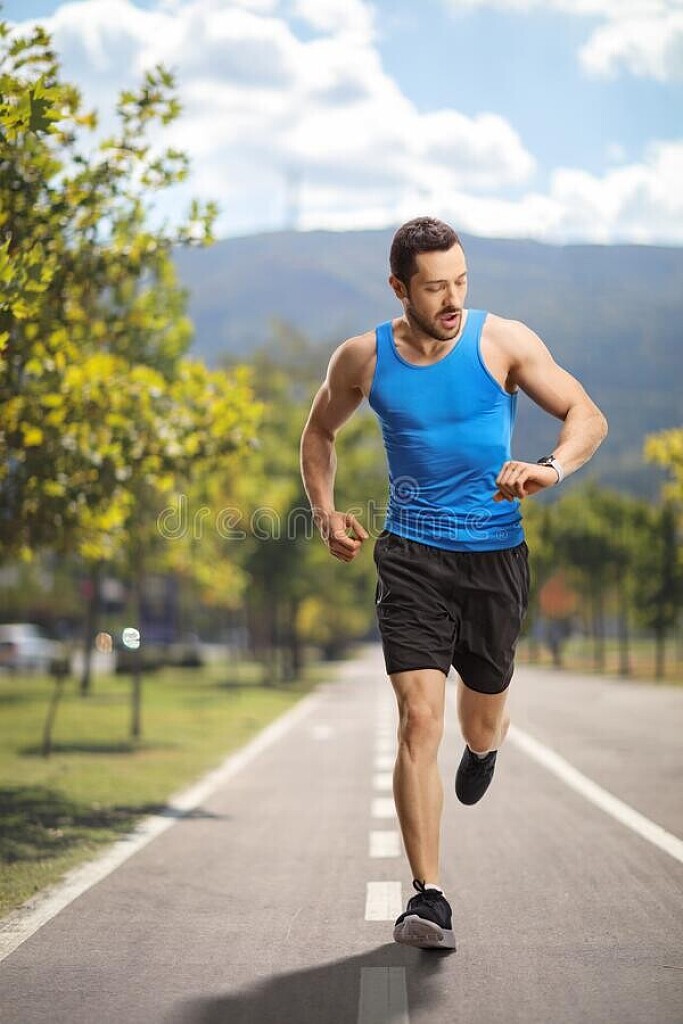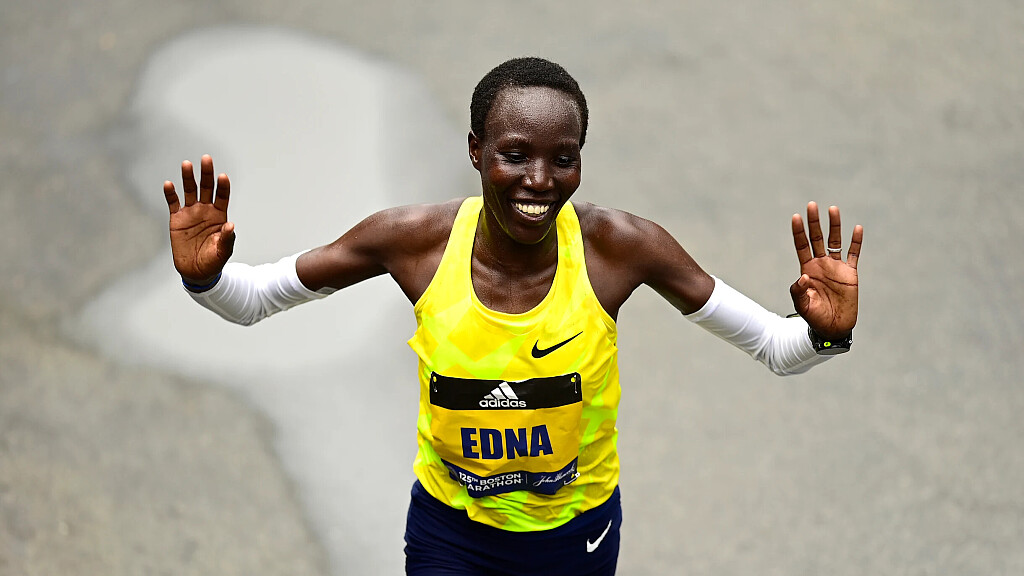Running News Daily
Running News Daily is edited by Bob Anderson in Mountain View, California USA and team in Thika Kenya, La Piedad Mexico, Bend Oregon, Chandler Arizona and Monforte da Beira Portugal. Send your news items to bob@mybestruns.com Advertising opportunities available. Over one million readers and growing. Train the Kenyan Way at KATA Running Retreat Kenya. (Kenyan Athletics Training Academy) in Thika Kenya. Opening in june 2024 KATA Running retreat Portugal. Learn more about Bob Anderson, MBR publisher and KATA director/owner, take a look at A Long Run the movie covering Bob's 50 race challenge.
Index to Daily Posts · Sign Up For Updates · Run The World Feed
Five Recovery Foods That Pro Athletes Can’t Get Enough Of
The best athletes don’t just train hard—they also recover smart. And a big part of effective recovery is the post-workout meal.
A good after-exercise nutrition plan can help an athlete replace the energy they burned during a workout, repair and rebuild muscles, and provide the fuel they need to crush their next training session, according to Jordan Hill, a Colorado-based registered dietitian and certified specialist in sports dietetics with Top Nutrition Coaching. The resulting gains can be significant.


Just ask Lea Davison. When the two-time Olympic mountain biker worked with a nutritionist some 10 years ago to dial in her post-workout fueling plan, she “really noticed the difference,” describing a reduction in rabid hunger and a feeling of being “stronger all around.”
When curating a post-workout snack or meal, folks should look for two main things: carbs and protein, says Hill. Carbs help reduce inflammation, boost immunity, and stimulate the release of insulin, a muscle-building hormone that also helps refill your body’s glycogen stores (your muscles energy source). Protein helps refill your glycogen stores as well, and also halts muscle breakdown and promotes the growth of new muscle, Hill explains. Moreover, when combined, carbs and protein reduce cortisol, a hormone that causes muscle breakdown.
Athletes should consider foods rich in antioxidants like fruits and vegetables, and omega-3s like nuts, seeds, and fish, as they tamp down inflammation and further assist in the recovery process, Hill explains. It’s also important to keep in mind hydration and electrolyte replenishment, especially sodium and potassium.
When it comes to carbs and protein, the amount you consume matters. After an intense workout, look for a three-to-one ratio of carbs to protein, or closer to a two-to-one ratio if your goal is weight loss, says Hill. You can calculate your target amount of protein in grams by dividing your bodyweight in kilograms in half. Then, multiple that figure by two or three to get your carbohydrate value in grams, Hill explains.For example, with the three-to-one ratio, someone who weighs 150 pounds (68 kilograms) would have a target protein goal of 30 to 35 grams and a target carbohydrate goal of 90 to 105 grams. Keep in mind this guidance applies only to intense workouts—the type that leave you sweaty, tired, and potentially sore the next day. Following a gentler workout—say, a yoga session or quick 20-minute strength routine—these specific ratios aren’t as important, says Hill, who recommends folks in those scenarios just follow their general eating patterns for the day.
Last tip: Pay attention to timing. Women should aim to eat their protein amount within 30 minutes of a workout. That’s because certain hormone fluctuations that occur in women post training can accelerate muscle breakdown, explains Hill, and getting in protein quickly can help combat that. Women can eat their carbs alongside the protein, or eat the carbs separately up to two hours after the workout. The guidance is a little less strict for men: so long as they eat both the protein and carbs within two hours of exercising, they’ll reap the benefits.
Need some inspiration for your next post workout meal? We tapped two-time Olympic mountain biker Davison and four other elite athletes to learn what they typically feast on after a tough training session.Pro snowboarder and Olympic silver medalist Julia Marino usually gravitates towards a smoothie with a mixture of frozen fruit, coconut milk, yogurt, and protein powder. “It’s not too heavy,” says Marino of her go-to snack. “When I’m done working out and pretty warm, I’m craving something light and colder that’s easily digestible.”
Meagan Martin, a pro climber and American Ninja Warrior women’s champion, is also a fan of the post workout smoothie. Her concoction often features a mix of frozen fruits and veggies (like banana, pineapple, blueberries and spinach), along with cinnamon, chia seeds, almond milk, almond butter, and sometimes whey protein. “I have this after any workout,” says Martin. “Whether it’s a climbing session or a cardio workout, it’s just the thing my body needs.”
Hill, the nutritionist, endorses these types of smoothies as a great way to get antioxidants, hydration, and protein following a workout. Just be sure to pay attention to portion sizes to ensure you’re hitting a good ratio of carbs to protein, she advises.
During cold months, Davison frequently refuels with a fruit smoothie, similar to the ones described above. But after a long ride on hot days, she favors a DIY slushie: She blends a scoop of unflavored protein powder with lemonade and frozen, locally-picked strawberries.“It’s easy to drink,” she says, adding that the tartness of the lemonade helps counterbalance the sweet chews, bars, and gummies she consumes during her ride. If her workout concludes at home, she’ll quickly whip this up within the 30-minute recovery window, or, if she’s ending a ride at a trailhead, she’ll make it in advance and stash it in a Yeti cooler so it stays chilled.
This concoction, says Hill, offers “great hydration” and electrolytes in addition to protein. The strawberries and lemonade (so long as it’s sugared) provide carbs, she adds. If you’re making this at home, Hill recommends monitoring the portion size to ensure the carb to protein ratio is sufficient.Adidas-sponsored athlete Chris Nikic, who in October became the first person with Down syndrome to finish the Ironman World Championship, is a Chipotle devotee. The 23-year-old athlete’s favorite food is rice, and every day for lunch he orders a heaping burrito bowl with all the fixings: brown and white rice, brown and black beans, chicken, veggies, corn, cheese, and guacamole. The end result is “a four-pound bowl,” says Nikic, who is currently training for the Tokyo Marathon and notes the meal tastes best after a run.
Nikic’s go-to is a “great option,” says Hill. It provides protein, lots of carbs—including both easy-to-digest simple carbs from the white rice and satiating fiber-rich carbs from the brown rice—as well as antioxidants from the veggies.
When it comes to post exercise fueling, Dylan Bowman is a creature of habit. For years now, the professional trail runner has consumed the same recovery meal pretty much every day. He’ll scramble two eggs with greens and onions and then “liberally” butter two pieces of bread. Sometimes, he adds avocado if he’s feeling extra hungry. “I love it because it’s simple and quick,” Bowman explains. “I can get it in quickly and get the recovery process started before I begin the work day.”
This meal hits the big components, says Hill: protein with the eggs, healthy fat with the avocado, and carbohydrates with the toast. If you need more calories depending on the intensity of your workout, Hill recommends either increasing the portion sizes or pairing the meal alongside something else, like oatmeal with berries and honey.When Davison is craving “real” food (i.e. something she can chew, not just sip) she whips up eggs fried over medium with toast, or concocts egg tacos with cheddar cheese, salsa, scrambled eggs, and corn tortillas. “Eggs are my go-to for lunch mostly,” she says.
The breakfast taco option is really similar to Bowman’s staple and provides carbs from the tortillas plus protein from the eggs. The salsa adds antioxidants. Depending on the intensity of the workout, Hill might recommend adding extra carbs to properly refuel—things like orange juice, chocolate milk, or a small cup of fruit.
(04/22/2023) ⚡AMPby Outside
London defending champ Amos Kipruto speaks out on Kenyan doping problem
Kipruto, who used a 4:21 25th mile to win last year’s race, says his preparation has gone well for London, and while he hasn’t done every session with high-powered training mates Evans Chebet and Benson Kipruto (who just went 1-3 in Boston), he has run a number of workouts with them and has finished alongside them. He said his fitness is on par with when he won this race six months ago.
“Last year’s shape and this year is really similar, no change,” Kipruto said.
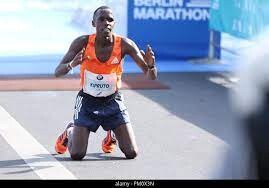
Kipruto was asked in the main press conference about his thoughts on Kenya’s doping problem — the country saw at least 25 athletes suspended in 2022 — and spoke candidly about the issue, calling it “an embarrassment.”
“It’s really killing me sometimes, my heart, because when you see someone has been caught, it’s really raising a lot of questions in your mind,” Kipruto says. “You’re asking yourself why this person go through this? You find someone injecting yourself, you find someone buying some medicine, swallow some medicine and you know [they’re healthy and don’t need it]. So someone is not even thinking about his health.”

Kipruto echoed the comments fellow Kenyan marathoner Mary Ngugi made to the BBC on Wednesday, saying success is the product of patience and time. He believes too many athletes want to take a shortcut to success by doping.
“When you tell someone be patient, they see you like you are talking nonsense,” Kipruto said. “…What kills athletes mostly is impatience, they need to rush. You find someone getting everything. they want to run faster to get money, which is not correct. But if someone is clever enough, you better be patient and your time will come.”
Kipruto is pleased that the Kenyan government has taken action to fight doping, dedicating $5 million per year over the next year toward tackling the issue. He says he believes the AIU is doing a good job by using more sophisticated methods to catch dopers and asked for them to keep pushing.
“The request I have for the AIU and [the Anti-Doping Agency of Kenya] is to tighten up a lot, even to bring more technology how to catch dopers,” Kipruto says. “…If they introduce even more systems how to handle this doping, I’ll be happy.”
(04/22/2023) ⚡AMPby Letsrun
TCS London Marathon
The London Marathon was first run on March 29, 1981 and has been held in the spring of every year since 2010. It is sponsored by Virgin Money and was founded by the former Olympic champion and journalist Chris Brasher and Welsh athlete John Disley. It is organized by Hugh Brasher (son of Chris) as Race Director and Nick Bitel...
more...Kenenisa Bekele Says His Training Ahead Of London Has Been Good, But Not Perfect
On Sunday, 2019 Berlin Marathon champion Kenenisa Bekele of Ethiopia will take on defending champion Amos Kipruto of Kenya in a potentially explosive 2023 London Marathon race.
Last year, he finished fifth in 2:05:19 behind Kipruto (2:04:39). In an exclusive interview with Nation Sport, the two-time Olympics 5,000 metres and 10,000m champion admits that this year’s race features one of the strongest fields. He talked to our writer Bernard Rotich.
Question: Having completed your training for the London Marathon, how have your preparations been so far?

My training has been good, but not perfect. I had minor injuries earlier on in my training programme, but I feel healthy and fit for Sunday’s race.
Where do you train specifically, and what does your day to day programme look like?
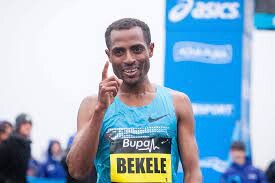
I train around Addis Ababa in Ethiopia. I do runs at altitude, and Entoto Forest Park in Addis Ababa is one good place for that. But I also do low altitude training around Sendafa, a small town located some 38 kilometres to the East of Addis Ababa. Of course, exercise training becomes an important part of my training programme ahead of races.
How does your diet look like when training for races? Do you have special food during that period?
Not any specific food. Most importantly, I like a variety of food. I eat a lot of vegetables, nuts, fruit, some meat, pasta, rice, milk and of course our national food injera which is high in nutrients. For me, just plain food is enough, not too much spices and oil.
Which was your last race and what can you say about your performance in it?
My last race was the 2022 London Marathon. I had hoped for more in the race, but I couldn’t achieve what I set out to do. I was struggling healthwise, having suffered a double Covid-19 infection.
At the 2019 Berlin Marathon, you came close to breaking Eliud Kipchoge’s then world record in the marathon of 2:01:39 by two seconds, but Kipchoge further lowered that time. Is Kipchoge’s new world record of 2:01:09 within reach for you?
Actually, it is what motivates me. Of course I still hope it will happen one day.
When competing against Kenyans, do you come under pressure, or do they help you to push yourself to the limit?
Good competition always helps to motivate me to push myself the extra bit. We need each other to excel in athletics.
You have had a long and successful athletics career. What is your secret to longevity?
My talent is God-given. This is what God chose for me to do. I had dreams, and I still have many goals to achieve. That keeps me going.
How have you invested your earnings from athletics, and what advice can you give upcoming athletes who look up to you?
I built my own synthetic athletics track in Sululta, about 20km north of Addis Ababa. Initially, I built it for my track training. I needed a good soft track surface to avoid injury. Nowadays, almost all Ethiopian athletes train there, which supports athletics in Ethiopia. Next to it, I built a training center and guesthouse where athletes can stay. We need to help each other and build for the community.
What is your message to your fans ahead of Sunday’s race?
I’m very happy with all the support I get from all over the world. The crowds are usually really amazing in London. I really appreciate the support I get from my fans during my preparations. I see it, and it motivates me.
You belong to NN Running Team. How has your experience been so far?
For me, the medical and nutritional support of the team has made the difference. I have access to the best sports doctors, physios, nutritionists and products. I owe them a lot. It has been career extending, and they are the reason I am still chasing my dreams and goals.
What do you think of the 2023 London Marathon line-up? Do you feel pressure to deliver?
Of course in a World Marathon Major, you can only expect a top field of athletes. The competition is really strong this year, but I’m looking forward to getting the most out of myself.
Who are your training partners? What do you think of them?
I train with Leul Gebresilase who will also compete in London Marathon. Training together with other strong athletes motivates me to push the boundaries. I think Leul is strong. He finished second last year, but let’s see what will happen in this race.
(04/22/2023) ⚡AMPTCS London Marathon
The London Marathon was first run on March 29, 1981 and has been held in the spring of every year since 2010. It is sponsored by Virgin Money and was founded by the former Olympic champion and journalist Chris Brasher and Welsh athlete John Disley. It is organized by Hugh Brasher (son of Chris) as Race Director and Nick Bitel...
more...Run Commuting Could Benefit Your Training
First, it was the check engine light in my car.
Then it was the rear derailer on my bike.
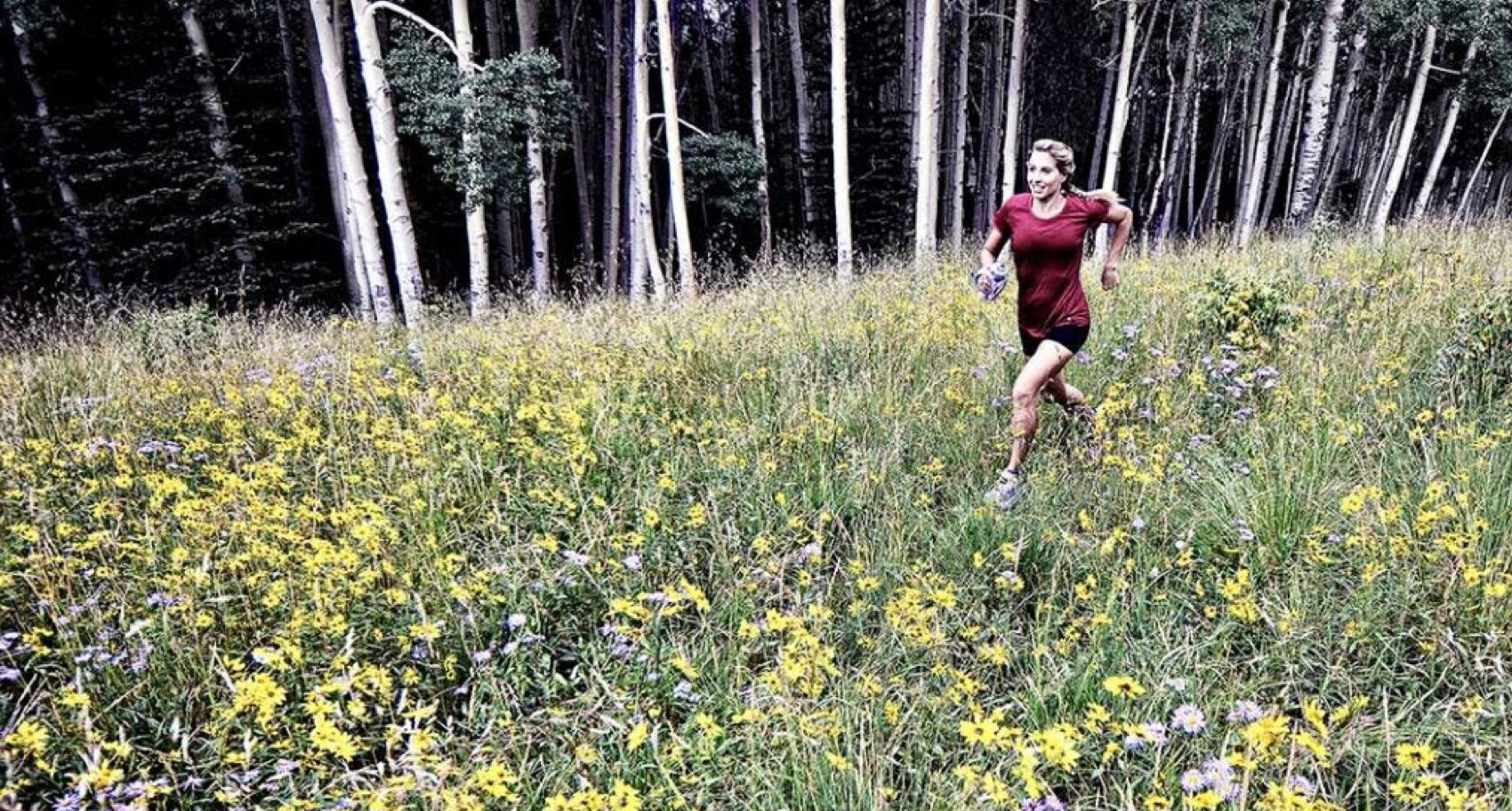
With my two primary modes of transportation out of commission, I decided to take to the streets and try run commuting to work.
It seemed like the perfect way to boost my mileage and revamp my training with new routes. So I laced up my shoes, invested in some dry shampoo and hit the road.
Besides its obvious transportation value, run commuting has many benefits for even the most road-averse trail runners.
"I definitely believe that run commuting helps my trail running," says ultra-champ Michael Wardian, of Washington, D.C. "It takes planning, carrying a load, perseverance and dedication."
Much like packing and planning for a big trail run or race, commuting takes a bit of prep. I cross-referenced Google Maps and Strava for routes that balanced efficiency and less traffic. Find out how long your commute should take you, then give yourself extra wiggle room for clean up. Your office mates will thank you.
"Make sure you can shower at work and have a place to store clean and stinky clothes," says Sharman. "As well as a determination to run rain or shine."
I typically found myself trying to travel as fast and light as possible-just carrying the clothes (and deodorant) that I'd need for the day. However, there were several less-than-ideal trips that found me slogging either a gallon of milk, a laptop or one very unfortunate casserole. As good as most running packs are, I have yet to find one that can accommodate a lasagna.
Carrying a laptop takes some getting used to, as well. After an unfortunate incident involving my computer and some salad dressing, I began to wrap everything in ziploc bags. Because of all the jostling involved in run commuting, I discovered that foods like salads and grain bowls were much more portable than sandwiches, which are prone to disassembly en route.
"I think the attitude needed is just one of adventure and determination," says Wardian. "There will be obstacles that try and derail your run commute, but if you are committed it will be one of the best things ever."
Get in more miles
Run commuting is also an effective way to squeeze in extra miles by breaking up training into bite-sized chunks throughout the day. A three-mile run to and from work made logging consistent double-digit miles much easier than trying to bang out a half marathon right before work.
"Volume is important for training, and in cities it can be difficult to squeeze in enough miles, especially with most professional jobs," says Ian Sharman, four-time Leadville Trail 100 winner. Sharman, who used to run commute in London, believes that run commuting can be hugely beneficial to any trail runner's training with a little bit of planning and a sense of adventure.
"Although the terrain was typically not even remotely hilly, I included running around parks by taking a less direct route home," he says. "That factored in some grass and dirt."
Save gas money and add it to your running fund
Besides investing in a comfy pack and military-grade deodorant, run commuting is cheap. I didn't buy gas, and my legs required less upkeep than my bicycle. Run commuting is also one of the greenest ways to get around, and I found that starting my day with a peaceful jaunt to work was much more pleasant than sitting in traffic.
"Run commuting has opened my eyes to the fact that you don't have to drive everywhere," says Wardian. "There are so many errands that can be done on foot and under your own power, and I love that."
While run commuting is generally mood and energy boosting, it's not without its challenges. I endured rain, wind, hail and plenty of less-than-stellar hair days. However, with minimal gear and a good attitude, I found the benefits of run commuting far outweighed both the scorching heat and sogginess.
Despite several slip ups like forgetting shoes and having to rock my sneaks with a little black dress, or arriving to work hours late after taking a wrong turn, I loved run commuting. I got to know the most efficient and scenic routes from my house to just about everywhere in town. I loved the moments of solitude it granted me at the beginning and end of every day.
Mike Wardian's best advice for newbie run commuters?
"Just start"
Plan Your Run Commute
Gear up, size down. Travel-sized soaps, shampoos or wipes help save space and weight, and leave you feeling fresh after your morning commute. Dry shampoo or baby powder can help alleviate sweaty hairlines. I learned how to blow-dry bangs in a hand dryer.
Map it. Google Maps, Map My Run and Strava are great resources for in-town routes. Be sure to check for construction and account for morning traffic.
Dry-run. Practice your route the night before to work out the kinks, and find coffee along the way.
Pack tetris. Pack heavier items like a laptop towards the bottom and back of your pack, leaving room on top for lighter items or things that you'd rather not smush-like lunch.
Bag it. Protect the things that matter-your laptop, your clothes-from liquid assault, be it in the form of rain or stray salad dressing. Wrap your computer in a plastic grocery sack and put your clothes in plastic baggies.
Cool it. Give yourself plenty of time to cool off before stepping into the office. Stretch, drink water, take five minutes to breathe-or else you'll find yourself sweating right through your shower.
Early Bird: A stress-induced PR is no way to start the day. Map your route and imagine running your slowest splits, hitting every red light and getting shin splints. Add two minutes to that for every mile. Arrive on time, or better yet, early.
(04/22/2023) ⚡AMPHow to Set Your Heart Rate Zones
Your physiology is beautifully unique. I sound like John Mayer if he was a physical therapist. Our bodies are wonderlands, even if our glutes are unmaintained landfills.
The individual uniqueness of athletes creates a problem, though. How can we understand our physiology in the broader context of training theory when every variable is a bell curve across the population? General equations work if you're smack-dab in the middle of the bell curve thiccness, but can be actively wrong and counterproductive as you venture into the standard deviation hinterlands.

Consider the equation that many of you might have heard about heart rate: 180 beats per minute minus age = approximately aerobic threshold, or the intensity level that serves as a top-end barrier for easy/steady running that should encompass around 80% of your training volume. While that equation is generally useful, it can be actively useless for individuals, especially aging athletes who are highly trained and have a much higher aerobic threshold than the equation would predict.
For me, the equation caps my easy runs at 145 heart rate. My actual aerobic threshold is 152 beats per minute in running (and 150 beats per minute in biking). In practice, that's almost a one-minute-per-mile difference in output. Training from a general equation would prevent me from accruing benefits from steadier paces, and I'd probably be slower at everything.
raining zones from your watch can also be atrocious. In the last few months, I have helped a few hundred listeners of our podcast calculate their heart rate zones (our episode on heart rate zones is here). And a lesson I learned is that some of the watch brands use algorithms that are less accurate than U2 in Spanish class. Zone Uno, Zone Dos, Zone Tres, Zone Catorce, Zone Biblioteca, etc. Some of the watch zones are set so low that I have no idea what they could possibly be measuring.
So today, let's look at one simple way to calculate your heart rate zones to help you calibrate your training intensity. Knowing your intensity ranges is helpful because it optimizes your metabolic fitness, allowing the body to burn more fat at higher outputs, while supporting mitochondrial proliferation and efficiency, allowing both higher and lower intensities to take less energy. Disclaimer: exercise physiology terminology is always subject to evolving debate, particularly on Twitter (the world's town square, if the square was also where the town put the raw sewage). Here is my favorite infographic ever on the overlap of these principles, from Fluid Athletics (follow them on Instagram here).
What Are Heart Rate Zones?
We'll be using the traditional Five-Zone model, contrasted with the Three-Zone model used in most training research, but it helps to understand both and how they interact. Heart rate is best thought of as a proxy for lactate concentrations. To simplify it a ton, lactate is produced as our bodies use glucose to fuel ATP production during glycolysis. Lactate is a fuel source for cells, and it's accompanied by a hydrogen ion that changes muscle pH and contributes to fatigue. A 2018 review in Cell Metabolism described the lactate shuttle where the cells use lactate for energy. If this shuttling mechanism is overstressed, lactate levels and fatigue rise and exercise becomes less sustainable. A great overview by Dr. Howard Luks is here.
When lactate concentrations begin to rise, intensity switches from easy to moderate, an inflection point known as LT1, broadly overlapping with aerobic threshold where athletes go from primarily burning fat to primarily burning glycogen. And when lactate levels rise more steeply at higher intensities, intensity transitions from moderate to hard, an inflection point known as LT2, broadly overlapping with traditional lactate threshold (or critical velocity, depending on the method of calculation). That encompasses the 3-Zone model used in research:
Those zones are used in research to determine intensity distribution. While these breakdowns are gross approximations, it can help to put some numbers on paper to get your bearings (all of these numbers have big error bars).
So if we're using heart rate to approximate lactate and the associated physiological impacts of fatigue, why don't we just use lactate? Good question, you article-ruining jerk. In a perfect world, athletes may decide to prick themselves for blood lactate readings with every interval like they're Norwegian vampires. Practically, though, there's a lactate learning curve in the best of times that can lead to inaccurate data, and in the worst of times it can take some of the spontaneous artistry out of daily training. You can probably tell I'm scared of blood, needles, and vampires (whether traditional or sexy).
But have blood-free hope! Using the method in the article, I have approximated zones for professional athletes that have later been validated in lab tests with small enough margins of error to be useful. However, it's key to get a full lab test for truly accurate data. Heart rate without lactate, metabolic, and/or ventilatory lab tests is like determining the time from where the sun is in the sky. With context clues, you can be close, but you wouldn't want to use it to cook a turkey.
Five-Zone Training Model
Now, let's finally get to the Five-Zone heart rate model that is used in most training approaches. The Three-Zone model is overlaid with green, yellow, and red (again, there is debate around the exact breakdown, particularly with the Zone three/Zone four delineation).
There are a few ways to set the zones, but I see the most repeatability and accuracy with the Lactate Threshold Heart Rate method pioneered by legendary coach Joe Friel. As outlined in Training Peaks, he suggests that athletes "do a 30-minute time trial all by yourself (no training partners and not in a race). Again, it should be done as if it was a race for the entire 30 minutes. But at 10 minutes into the test, click the lap button on your heart rate monitor. When done, look to see what your average heart rate was for the last 20 minutes."
I like athletes to do the test on uphills, where they won't be limited by neuromuscular and biomechanical factors if they don't have a ton of speed training. If it wasn't a truly hard effort or your heart rate takes a lot of time to increase across an effort, you can take the average heart rate from a section as short as 10 minutes. Because this isn't an exact measurement like in a lab test, think of it as an art that is useful in understanding your body, rather than attempting to find a correct answer like high school algebra.
For an easy way to scrub complex data files with HR variation, you can use the Strava Sauce browser plug-in, highlight the area you want to examine, and it will give averages without ever lapping the watch. When I calculate zones for athletes, I have found that you can also approximate LTHR from almost any hard workout with intervals 3 minutes or over by looking for spots in the file where heart rate stabilizes for 15-30 seconds before rising to less sustainable levels (and sometimes falling back toward that baseline in longer efforts). Be careful about using data from very hot days or long races over 90 minutes, when heart rate can sometimes be sustained above Friel's LTHR in ways that are not mirrored by the underlying physiology.
A big key here: the data needs to be accurate. Chest-straps are ideal for these purposes, and if you are doing a workout to set heart rate zones, it's worth using the chest strap even if it feels like you're getting the heimlich maneuver from a weak octopus. While wrist-straps are rapidly improving in accuracy, there is extreme variation among athletes/watch brands. For example, my Garmin 745 seems to work really well in most circumstances (see this beautiful graph of a threshold workout). But other athletes don't have that success, and sometimes they send me heart rate files that look like Bitcoin price graphs (we are not sure why it's going up and down, but we can be pretty sure it's nefarious).
How to Set Your Heart Rate Zones
Once you have the LTHR number, it's time to set those elusive zones. We're at another controversial point where the exact percentages are subject to extreme debate. The problem: when you validate heart rate data with lab tests, individual physiology varies substantially. LTHR narrows down that physiological variation to get an idea of zones, but the exact delineation depends on training history, muscle fiber typology, metabolic context, astrological sign, etc. Don't even get me started on Scorpios.
Here are the percentages that Megan and I like to use:
Let's dig into an example from my data. In February, I did a virtual bike race up a mountain. Using the Strava Sauce plug-in and highlighting the final 20 minutes of that hard effort, my LTHR was 172. While there is variance across sports and my heart rate is higher with running, that means my current zones for biking are approximately:
Your LTHR may increase with training and it will drop with age. Athletes are often between 165 and 175, though in professional athletes, I have seen numbers as high as 189 and as low as 152. You can see why dialing in your unique physiology is so important. An athlete with an LTHR of 160 needs to cap most of their easy runs at 140 heart rate (top end of Zone 2). Meanwhile, an athlete with an LTHR of 180 can go all the way up to 157! Often, everything about those athletes can look the same from the outside-same age, same PRs, same training, same potential. But they have very different hearts.
How To Use Your Heart Rate Zones
There are two places where having a general feel for your personal heart rate zones can be most helpful: understanding your Zone 2 (with LT1 as a cap) and determining the sustainability of longer efforts. First, let's break down how to think about each of the zones:
Knowing that Zone two cutoff can help calibrate an athlete's effort so they understand what terms like "easy," "steady," and "moderate" actually mean. Spot-checking heart rate periodically on harder efforts can ensure that athletes aren't going too hard, pushing everything into Zone five and reducing aerobic adaptations. I love athletes to get a feel for how high their heart rate gets on uphills especially, since excessive effort on ups can lead to reduced endurance and race performance. Zone 3 is your friend, in moderation. Zone four is your acquaintance. And spending too much time with Zone five will end with you folded up in a car trunk somewhere outside Las Vegas.
Takeaway
The big takeaway is that heart rate is just a proxy for fatigue processes, especially when calculated outside of a lab. The numbers can vary by the day, and they change across training blocks. Temperature, stress, caffeine, and political news all impact the numbers enough that caring too much about a few beats per minute is unhelpful. The day I first heard the nickname "Meatball Ron," I was in Zone three while sitting on the couch.
Instead, view heart rate as a way to calibrate your physiology in a general way, spot-checking your perceived exertion so that you know what you think your body is doing generally aligns with what your body is actually doing. Once an athlete dials in heart rate, I like them to look at it once every couple weeks during a run, and solely after-the-fact on other runs (if at all), never investing too much in small changes. Heart rate sometimes takes a while to respond, so I find it's rarely useful on shorter intervals.
If you train within the correct general range of intensities, whether guided by heart rate, lactate, and/or perceived exertion, you can improve output at Zone two and Zone three heart rates in particular, and because those efforts are more sustainable metabolically, you'll excel in races. You definitely don't need to have a heart rate monitor to achieve those goals. But you do need to have a good feel for your unique physiology.
All of our bodies can be well-calibrated wonderlands. We sometimes just need a little bit of the sexiest thing of all: data.
(04/22/2023) ⚡AMPby Trail Runner Magazine
How to get back into running after a long break
Dusting off your running shoes after a break can be intimidating. If an injury, pregnancy or busy work schedule got in the way of your passion for running, you may wonder if you’re now too out of shape. Will your body even remember how to run a certain pace? Or will your legs feel weak and wobbly? And how many times do you have to pound pavement or hop on a treadmill before it feels fun again?
The good news is that your muscles retain a memory of their former strength, which can make it easier to bounce back than if you were starting from scratch. If you were sidelined for only two or three weeks, you may not even notice a significant change in your running performance, especially if you remained physically active during your time off.
If it has been longer, you may not want to rush back to several-mile runs. Mix running with walking, take time building up strength in unused muscles, and use a few tricks to motivate and reward yourself.

It can take about two months for a new behavior to become automatic. Once it does, it also becomes less taxing. But until then, you want to minimize the potential for injury and frustration. Use these expert-backed tips to get past the annoying retraining period so you can hit the open road with passion.
Ease into a routine.

You are more likely to stick with a running habit if you start with small goals. That may mean holding yourself back a bit, both in terms of pace and distance. “Slow and steady wins the race,” said Karena Wu, a physical therapist and owner of ActiveCare Physical Therapy in New York City. Slow down until you can pass the talk test, which means carrying on a conversation while running.
Try to do two to three short, easy runs per week. You could also follow a couch to 5K training plan designed for beginner runners and those who are returning after a long break. Alternatively, you may use a strategy that incorporates walking breaks into your runs.
Whichever plan you pick, be sure it has elements of strength training, stretching and resting. The point is to stay consistent and remember that you are using this time to recondition the muscles, tendons, ligaments and connective tissues in your legs, Dr. Wu said.
Build in immediate rewards.
You may think you can muscle through the first few weeks or months of running, but research suggests that motivation alone is not always enough. Pairing small, immediate rewards to a task — like watching Netflix while on the treadmill or treating yourself to an Epsom salt bath after a long trail run — can make it easier and more enjoyable to continue doing these activities.
“People repeat behaviors that they enjoy,” said Wendy Wood, a research psychologist at the University of Southern California and the author of “Good Habits, Bad Habits.” “If you hate running to begin with, there’s probably not much you can do to motivate yourself to repeat it.”
Short-term rewards can carry you through the days when your motivation is lagging. And they may even accelerate the formation of your new running habit.
Research shows that you can also get psychological rewards from running with a group of friends, affirmations from a coach or listening to your favorite music. Some studies have shown that people who listen to music are able to run faster, perform better and feel less exhausted.
Start strength training.
Strength training helps prepare your body for running again and can keep you injury free for the long haul. Many physical therapists and running experts even recommend strength training a few weeks before returning to running to build up muscle strength, increase flexibility and improve overall biomechanics.
“I think a lot of people use running to get in shape, but I would really recommend getting in shape to get back to running,” said Irene Davis, an expert on the biomechanics of running at the University of South Florida.
Runners tend to be weak in their feet and ankles, as well as their hips and glutes, Dr. Davis said. To strengthen these areas, try weight lifting, yoga, calisthenics or plyometrics at least two days per week.
Dr. Davis and Dr. Wu recommended exercises that train multiple muscles at the same time, like single and double leg calf raises, lateral band walks (or monster walks), planks, lunges, squats and step-ups.
Stretch.
A well-designed warm-up can also get your blood flowing and prepare your muscles for running. Dr. Wu and Dr. Davis recommended dynamic stretches, in which you move your joints and muscles through full ranges of motion, mimicking the movement you’re about to perform without holding them in place. For runners, they are often the same exercises used in strength training, like lunges and squats, as well as butt kicks and high knees.
Research has offered mixed and often contradicting results regarding the benefits of cooling down after a workout. But many athletes and physical therapists, including Dr. Wu, recommend static stretches, in which you hold a position for a period of time, after a run. She also recommended bringing your knee to your chest, pulling your ankle toward your glutes, leaning against a wall to stretch your calves or going into a deep lunge and moving your hips in a circle. Experiment with stretching and see if it makes you feel more flexible or helps you regain energy for the next run.
Get enough rest.
Just because your body remembers how to do a five-minute mile doesn’t mean your muscles and joints are ready for the toll running can take. While you are rebuilding stamina and strength during runs, you’re also breaking your body down in many ways, like opening microscopic tears in your muscles. Taking at least one day off a week will help avoid injury and let you come back stronger, allowing your body time to recover.
During each run, your body also depletes its stores of glycogen, a type of carbohydrate saved in the muscles and liver. Resting and refueling helps replenish these reserves so that you can use them as energy when you run again.
Remind yourself that you are making progress throughout the whole process. Running is an invigorating way to exercise with the breeze in your hair and the ground at your feet. So dust off those shoes and head out the door.
(04/21/2023) ⚡AMPby Knvul Sheikh
Eilish McColgan withdraws from London Marathon due to knee injury
Eilish McColgan has pulled out of the London Marathon on Sunday because of a knee problem.
Event organisers announced on Thursday evening that McColgan delayed her travel to London to give her the best chance of competing, and would not be attending a scheduled pre-event media conference on Friday morning.

The 32-year-old Scot, who won her first major title on the track at the 2022 Commonwealth Games in Birmingham, had hoped to see how the injury responded, but confirmed she had not been able to shake off the issue in time to run.
“I was sort of hopeful to be honest,” she said. “I have had a bit of knee bursitis back in February, March time and it was something I could run through.
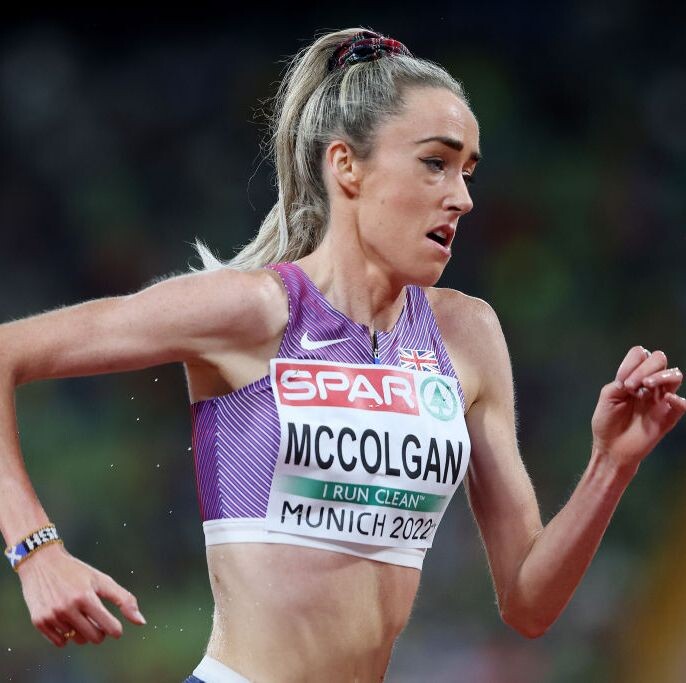
“But I couldn’t run through this. I’ve tried, trust me, but it has just got to the point where it is not going to be feasible to run a marathon this weekend.”
McColgan had planned to run the 2022 London Marathon last October before being forced to withdraw due to a medical issue.
The problem was identified as rebound hypoglycaemia, a common occurrence among endurance athletes which leads to reduced blood sugar levels and not enough glucose in the blood to meet the body’s needs.
McColgan, whose mother Liz won the London Marathon in 1996, said: “There are a few factors that have come together to lie a bad storm. A whole host of things in the last three weeks have built up and this knee thing has been the final crack in the armour.
“I’m disappointed. I know I’m ready to run a good marathon. I’d have loved to have given it a go and see what happens.
“These things happened for a reason. There will be another marathon, they’ll be another London Marathon in my future which hopefully I’ll get the chance to perform well at.
“I’ve shed a lot of tears in the last two days. It feels tougher because I’ve missed two now, for two entirely different reasons.
“All elite athletes go through this, I hope one day I will be on that start line. I know I can run a good marathon and I know one day it will be in London.”
(04/21/2023) ⚡AMPTCS London Marathon
The London Marathon was first run on March 29, 1981 and has been held in the spring of every year since 2010. It is sponsored by Virgin Money and was founded by the former Olympic champion and journalist Chris Brasher and Welsh athlete John Disley. It is organized by Hugh Brasher (son of Chris) as Race Director and Nick Bitel...
more...Geoffrey Kamworor ready to glide on London roads
Two-time New York City Marathon winner Geoffrey Kamworor declares he is in his best shape ever and promises fireworks in England.
Kamworor, fondly referred to as the man of all surfaces, was hit by a motorcycle while training in Kaptagat on June 27, 2020, fracturing a tibia. He underwent surgery to mend the injury.
Things suddenly changed for Kamworor as his career in athletics turned upside down.
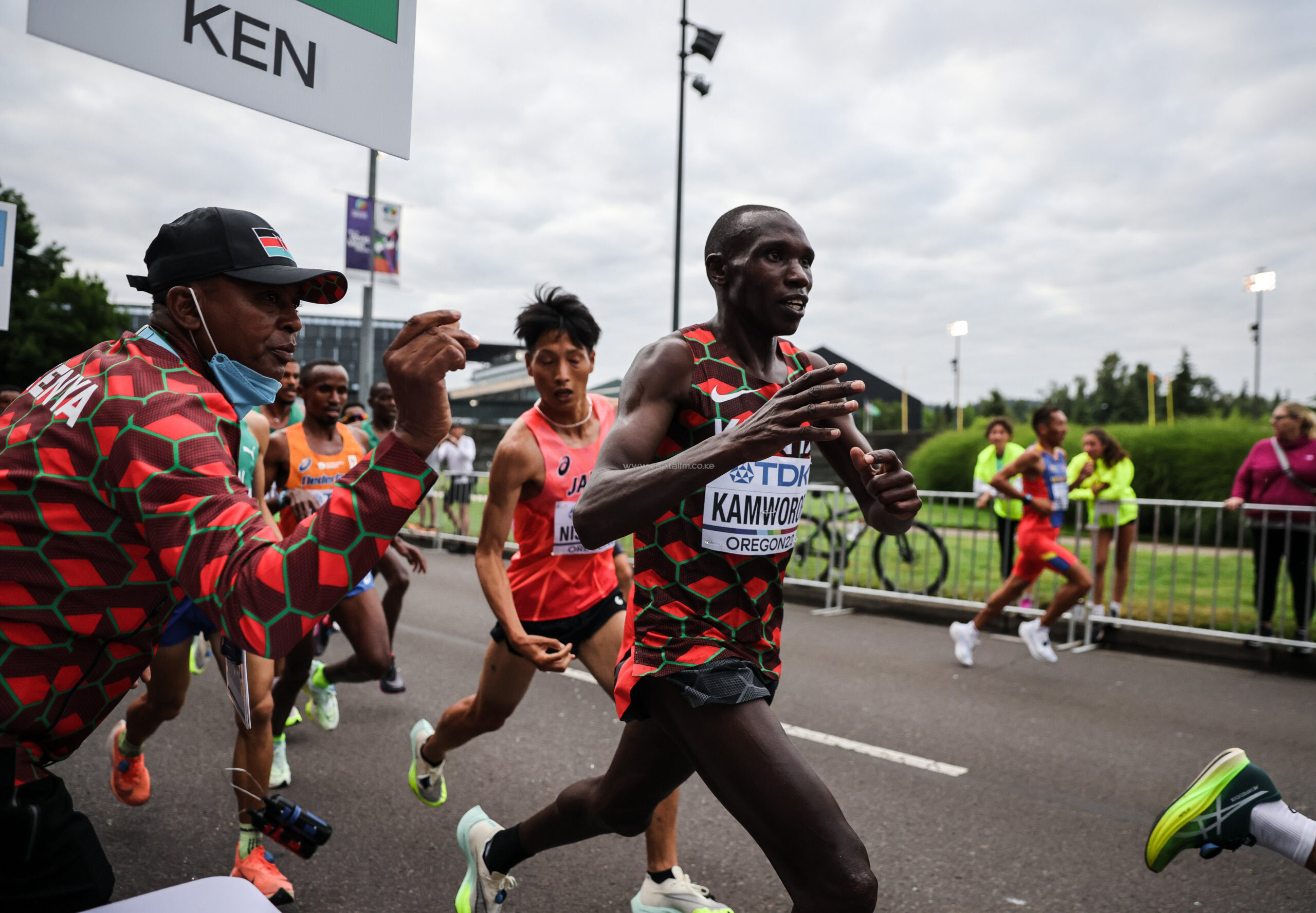
He was then gunning for his fourth consecutive World Athletics Half Marathon Championships title, but injured he failed to defend the crown on October 17, the same year in Gdynia, Poland.
Kamworor, who had the previous year recaptured the New York City Marathon title he had won in 2019, would embark on a frustrating long period of recovery. He eventually bounced back after 18 months to claim silver at the Istanbul Half Marathon on April 4, 2021.
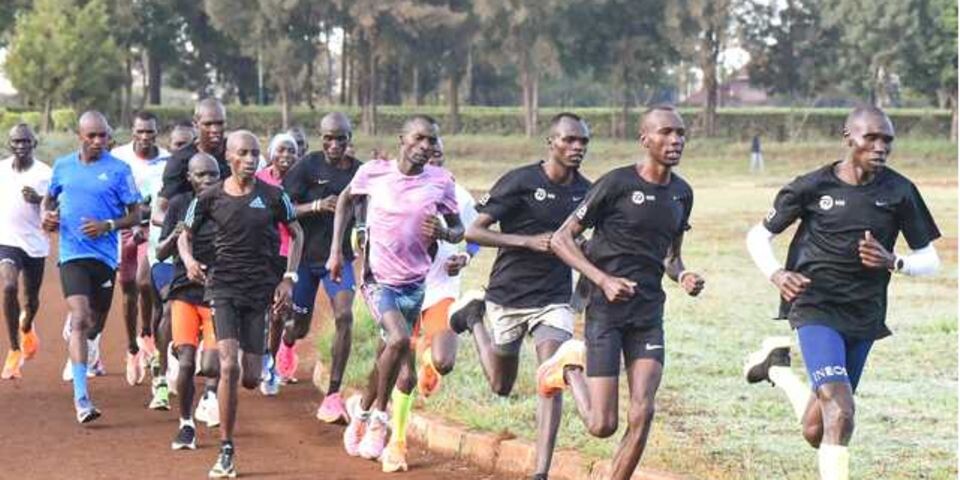
Amidst a series of injuries Kamworor, the 2014 world 10,000m silver medalist, was still good enough to run the fastest time on Kenyan soil as he won the Kenyan Olympic Games trials 10,000m in 27 minutes and 01.06 seconds at the Moi International Sports Center, Kasarani.
The man of all surfaces’ dream of returning for the Tokyo Summer Olympic Games went up in smoke with an ankle injury.
The fighter he is, he returned for the Valencia Marathon on December 5, 2021 where he finished fourth in a personal best time of two hours, five minutes and 23 seconds.
He opened the 2022 season with an 18th place finish in the Boston Marathon on April 18 as a recurring ankle injury put paid to his title ambitions.
Kamworor still earned a place in the Kenya marathon team for the World Athletics Championships held on July 17 in Oregon, United States where he battled to a credible fifth place.
“For sure the last two years have been frustrating for me since the accident, injury after another crept in,” said Kamworor, as h3 announced that he was back into his best shape and ready for his debut in the London Marathon on Sunday.
“I am now running and conducting my training without any discomfort. I feel like I am back to the shape I was in 2017 to 2019 before all these misfortunes happened,” said Kamworor, the 2015 and 2017 world cross country champion.
He went through his last speed work on Tuesday in Eldoret ahead of his departure to London yesterday.
Kamworor said that it’s a dream come true for him to finally compete in the London Marathon.
“I want to thank the organizers for giving me this opportunity. I can promise a beautiful race in the British capital,” said Kamworor. He predicted a tough race owing to the quality entries.
“It will depend on how you wake up but I am ready for any weather conditions,” said Kamworor.
He said he is ready for any pace and whatever tactics that will be thrown into the race by his opponents
Among the top cream of athletes Kamwowor will battle on the streets of London are fellow countrymen Amos Kipruto, who is the defending champion, and Kelvin Kiptum, 23, who produced the fastest marathon debut in history when he claimed victory in Valencia in 2:01:53 in December. This is, in fact, made him the third fastest man in history.
The Kenyans are up against home athlete Mo Farah and Ethiopian legendary distance runner Kenenisa Bekele among others.
(04/21/2023) ⚡AMPby Ayumba Ayodi
TCS London Marathon
The London Marathon was first run on March 29, 1981 and has been held in the spring of every year since 2010. It is sponsored by Virgin Money and was founded by the former Olympic champion and journalist Chris Brasher and Welsh athlete John Disley. It is organized by Hugh Brasher (son of Chris) as Race Director and Nick Bitel...
more...Tiruye Mesfin targets Hamburg Marathon course record and Daniel do Nascimento intends to bounce back this Sunday
Very fast times and thrilling races are expected at the Haspa Marathon Hamburg on Sunday. Just a year after Yalemzerf Yehualaw set a sensational course record of 2:17:23, which at that time was an unofficial world debut record as well, a fellow-Ethiopian will be at the start line, hoping to smash the mark: 20 year-old Tiruye Mesfin announced at the press conference in Hamburg that she targets a world-class time of sub 2:17.
Brazil’s Daniel do Nascimento is among the men’s favorites. The South American record holder wants to bounce back after disaster struck in New York in November. After taking the European marathon gold in Munich in sensational style last summer Hamburg will be the first race at the classic distance for Germany’s Richard Ringer. Around 12,000 runners have registered for the marathon event while the total number including shorter races is over 30,000.
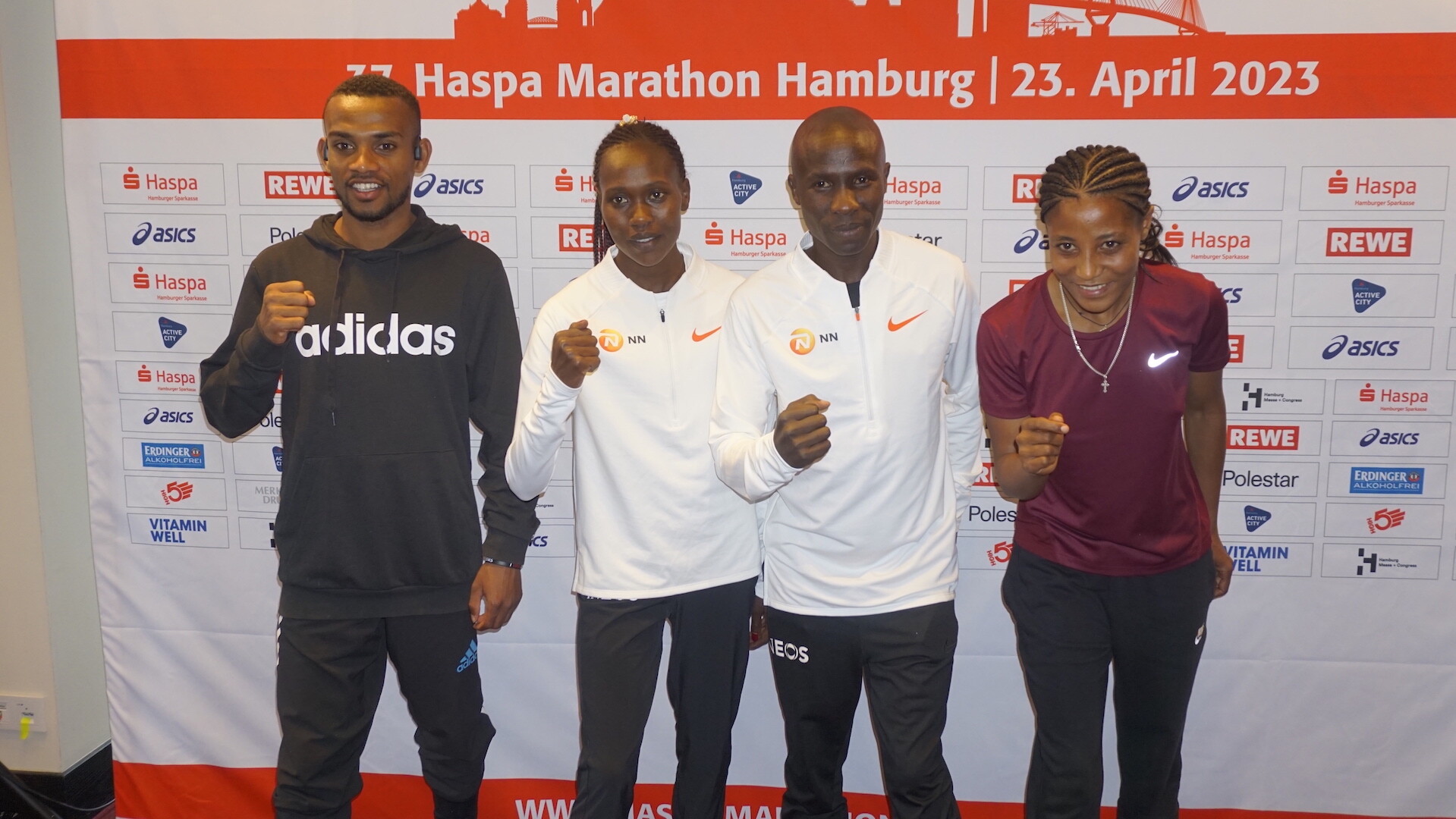
A live stream of the race will be available worldwide at www.haspa-marathon-hamburg.deon Sunday. The race starts at 9.30am local time and the coverage will begin at 8.45am. While the commentary will be in German the Twitter account of the Haspa Marathon Hamburg will carry English elite race updates.
Tiruye Mesfin could indeed be in a position to break the course record on Sunday if weather conditions will be suitable. At the moment the forecast looks good, however there might be some wind. The Ethiopian youngster ran a superb 2:18:47 debut at the Valencia Marathon in December and believes she can run considerably faster in her second marathon on Sunday.
“I am in fine form and my preparations went very well. I will try to break the course record, but at least I want to run a personal best,“ said Tiruye Mesfin, who hopes to be in the mix for Olympic qualification. „My plan is to run the first half in 68:00.“ While this would lead towards a world-class time of 2:16 she knows that it will probably not be enough to secure an Olympic spot. “I think I would have to go even faster, but there is some time left and I could do it in a later race.“
Qualifying for the 2024 Paris games will probably be easier for Stella Chesang since the competition for places in Uganda is not as tough as in Ethiopia. Running her debut marathon in Hamburg she is ready for an adventurous pace.
“I want to go with the first and see how it goes for me and what is possible. I hope to achieve Olympic qualification,“ said Stella Chesang, who chose Hamburg for her first marathon “because of the fast course“. Her half marathon PB of 68:11 indicates that she could break the Ugandan record of 2:23:13. And her tenth place at the World Cross Country Championships in Bathurst, Australia, in February shows that she is probably in very good form.
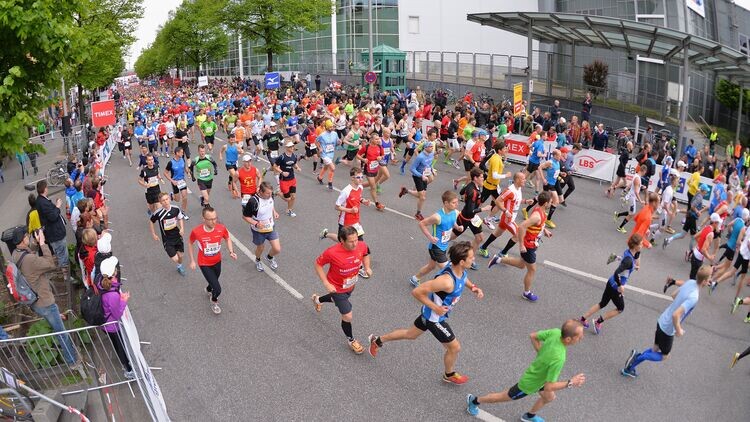
Kenya’s Bernard Koech is the fastest runner in the field with a PB of 2:04:09. He did not make it in time for Thursday’s press conference because of a strike at Hamburg airport. South American record holder Daniel do Nascimento arrived a day earlier and was present when the conference fittingly began in room Sao Paulo at the Radisson Hotel.
A year ago the Brazilian, who recently trained in Uganda for a longer period, stunned with a time of 2:04:51 in Seoul. However the 24 year-old then collapsed with ten kilometers to go at the New York Marathon in November. Daniel do Nascimento ran world record pace in the first part of that race and was ahead by well over two minutes at half way. “I made a mistake in New York, it was not a good strategy. After 30k I felt sick and got stomach problems. For me marathon is a bit like a marriage - there are difficult times and better times,“ he said. “I will run more intelligently on Sunday and will surely finish this time.“
If he should succeed in breaking his personal best he would then most probably break the course record as well. Last year Cybrian Kotut improved the mark to 2:04:47, which is just four seconds quicker than do Nascimento’s South American record. Unfortunately the Kenyan is among a number of withdrawals the organisers have to cope with. Ethiopians Mule Wasihun and Muktar Edris, who wanted to run his debut in Hamburg, had to cancel their starts due to an injury as well.
After his sensational gold medal performance at the European Championships in Munich last summer Richard Ringer returns to the classic distance for the first time. Olympic qualification is his next major goal. “Preparing for Hamburg everything went really well, even better than expected,“ said Richard Ringer, who will choose a more conservative approach on Sunday.
"I don’t want to take too many risk now as I really want to make sure that I achieve the Olympic qualifying time and go under 2:08.“ Richard Ringer’s PB stands at 2:08:49. “At the moment I hope that a time between 2.07:30 and 2:08:00will be enough to qualify for Paris.“ Another German runner who will go for the Olympic standard in Hamburg is local runner Haftom Welday. The former Eritrean surprised with a 2:09:06 in Berlin last year and now hopes to run well under the Olympic qualifying time of 2:08:10. Since he will choose a more aggressive approach than Ringer there could be an interesting German battle in Hamburg as well.
Elite Runners with Personal Bests
MEN:
Bernard Koech KEN 2:04:09
Tsegaye Kebede ETH 2:04:38
Daniel do Nascimento BRA 2:04:51
Martin Kosgei KEN 2:06:41
Masresha Bere ETH 2:06:44
John Langat KEN 2:07:11
Henok Tesfay ERI 2:07:12
Joshua Kemboi KEN 2:08:09
Daniel Mateo ESP 2:08:22
Richard Ringer GER 2:08:49
Martin Musau UGA 2:09:04
Haftom Welday GER 2:09:06
Derlys Ayala PAR 2:10:11
Jeisson Suarez COL 2:10:51
Ernesto Zamora URU 2:11:26
Andy Buchanan AUS 2:12:23
Arttu Vattulainen FIN 2:13:29
Joshua Belet KEN Debut
Moses Koech KEN Debut
Demeke Tesfaye ETH Debut
Simon Debognies BEL Debut
WOMEN:
Tiruye Mesfin ETH 2:18:47
Sintayehu Tilahun ETH 2:22:19
Giovanna Epis ITA 2:23:54
Dorcas Tuitoek KEN 2:24:54
Marion Kibor KEN 2:25:15
Kumeshi Sichala ETH 2:26:01
Tsigie Haileslase ETH 2:27:08
Paolo Bonilla ECU 2:27:38
Obse Abdeta ETH 2:27:47
Rosa Chacha ECU 2:28:17
Zenebu Bihonzg ETH 2:28:59
Katja Goldring USA 2:29:01
Tereza Hrochova CZE 2:29:06
Molly Grabill USA 2:29:17
Loreta Kancyte LTU 2:30:48
Fabienne Königstein GER 2:32:35
Tabea Themann GER 2:33:51
Stella Chesang UGA Debut
Mekdes Woldu FRA Debut
Mary Granja ECU Debut
Ana Ferreira POR Debut
(04/21/2023) ⚡AMPHaspa Marathon Hamburg
The HASPA MARATHON HAMBURG is Germany’s biggest spring marathon and since 1986 the first one to paint the blue line on the roads. Hamburcourse record is fast (2:05:30), the metropolitan city (1.8 million residents) lets the euphoric atmosphere spill over and carry you to the finish. Make this experience first hand and follow the Blue Line....
more...Three days after her 75th birthday, Jeannie Rice runs 3:33 at Boston Marathon
Three days after her 75th birthday, Jeannie Rice of Mentor, Ohio, added the women’s 75+ age group world marathon record to her impressive resume, winning her age category at the 2023 Boston Marathon by 20 minutes and crossing the line in 3:33:15.
Rice not only beat the previous record of 3:38:56, held by Norway’s Vera Nystad. She also beat Nystad in the race, who finished second to Rice in 3:53:52. Nystad is three years older than Rice, and originally set the record at age 77, when she ran 3:38 at the 2022 Berlin Marathon.

This masters record isn’t Rice’s first over the marathon distance. She also holds the women’s 70+ record of 3:27:50 from the 2018 Chicago Marathon. Her time of 3:38 is remarkable, and it shows that age really is just a number.
Rice averaged a mind-blowing five minutes per kilometre pace for 42.2 kilometres at age 75. That’s eight and a half consecutive 25-minute 5 Ks.
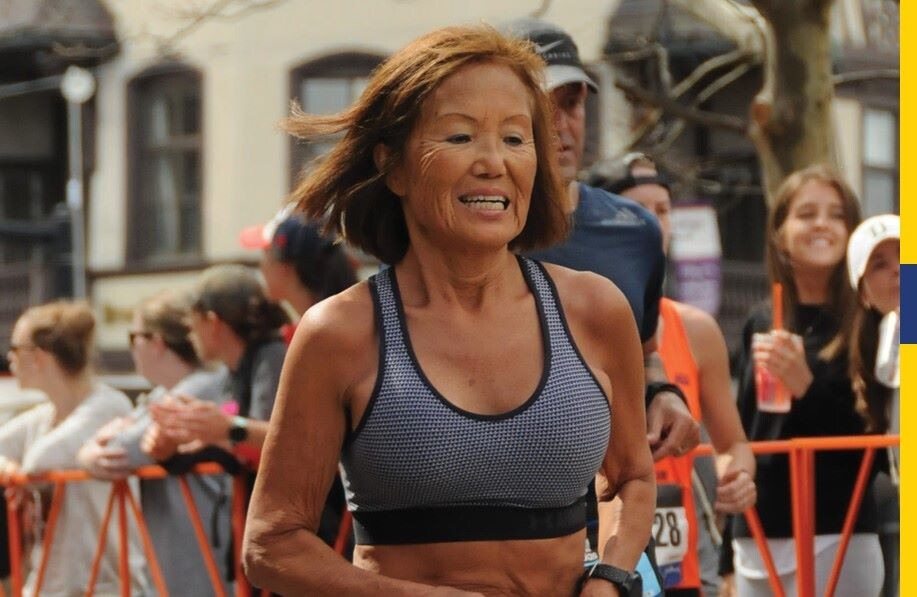
Rice considers herself a snowbird, as she lives and trains in her hometown of Mentor, Ohio for six months of the year before heading to Naples, Fla., for six months every winter.
This is Rice’s second marathon in the last six weeks. In March, she won the women’s 70+ age category at the 2023 Tokyo Marathon in 3:31:22 to receive her six-star finisher medal–completing all six Abbott World Marathon Majors.
(04/21/2023) ⚡AMPby Marley Dickinson
Boston Marathon
Among the nation’s oldest athletic clubs, the B.A.A. was established in 1887, and, in 1896, more than half of the U.S. Olympic Team at the first modern games was composed of B.A.A. club members. The Olympic Games provided the inspiration for the first Boston Marathon, which culminated the B.A.A. Games on April 19, 1897. John J. McDermott emerged from a...
more...How to conquer your very first 10K
HOW TO PREPARE FOR A 10K RUN FOR THE FIRST TIME
10k runs are super popular because the distance is manageable for most people. Many people choose 10k as their first running event distance. Here are some tips to prepare for the first attempt at a 10k run:
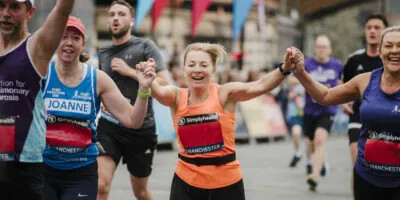
1. CONSISTENCY IS KEY
Ideally, pick a 10k run at least eight weeks away. This gives plenty of time to get in enough running to train the body (especially the legs) to tolerate running for an extended period of time.

Beginner runners may be running (and walking) for over an hour. Working up to this duration/distance requires running at least three times per week. Speed and duration of the runs are less important than just getting out and running or walking a couple of times a week since polarized training can improve performance for recreational runners. Don’t add more than 15 percent more total distance per week.
2. BUILD UP LONG RUN DISTANCE
Work up to at least 75 percent of the distance (7.5 km) for the long runs. Try to get in a long run once a week or at least every other week. The long runs will help develop the muscular endurance to tolerate running for 10k. They will also help build confidence that the distance is doable.
An easy way to add distance to the long run is to add 500m – 750m to the longest runs usually done. It may not seem like much, but it will add up!
3. DON’T WORRY ABOUT SPEED
One does not burn considerably more calories by running faster. Speedwork like HIIT and other forms of interval training can add too much intensity for new runners to tolerate. If the goal is just to finish the first 10k run, don’t worry about doing hard runs (unless you want to because they’re “fun”). Instead, just make sure to consistently train and avoid injury.
4. TAKE RECOVERY SERIOUSLY TO AVOID INJURY
Beginner runners might be tempted to run through the soreness and pain that comes from training consistently for their first 10k. Knowing when to ignore the pain and push through comes with athletic experience—beginner runners don’t have this luxury.
Novice runners are at a higher risk for injury than others, as noted in The American Journal of Sports Medicine. Here are some indicators that one should stop or drastically reduce training:
Sharp pains that come on suddenly mean stop running immediately or risk getting injured.
Prolonged soreness and swelling are likely from an overuse injury. Get in some RICE (rest, ice, compression, elevation) to reduce swelling and speed up recovery. Don’t keep running on the injury, or it could get much worse.
Sickness symptoms below the neck are not worth continuing to train.
5. FOLLOW A 10K TRAINING PLAN
adidas Running Premium Members can create a training plan suited to their ability level, goal finishing time and race distance. The training plan guides training runs so new runners never run too fast and stay motivated to finish their run strong! Download adidas Running to check out other unique features like Live Cheering!
HOW TO PREPARE FOR A 10K RUN (INTERMEDIATE-ADVANCED)
Intermediate or advanced runners are looking to improve their 10k time. They may also use 10k runs to build speed for a longer event like a half marathon or marathon. 10k is a great distance to build speed and endurance without adding tons of fatigue. It requires good endurance, a high threshold and maybe even a good sprint at the end. In other words, it’s a great distance to develop into a well-rounded runner. Follow these tips to try for a new 10k PR:
1. MASTER PACE CHANGES
Running a faster 10k requires training to run a faster 10k. Plan to include HIIT sessions and other types of interval workouts in the leadup to the race. Long runs with several kilometers run at or slightly above race pace are key workouts for race-specific intensity. Tempo and threshold workouts should be a staple in a quality, intermediate to advanced running plan.
2. STRENGTH TRAINING
Advanced runners and intermediate runners looking to jump to the next level should likely be doing strength training. As found in Medicine and Science in Sports and Exercise, specific strength training can improve running performance. This doesn’t mean going to the gym to bulk up. Instead, bodyweight and functional training are sufficient. Check out adidas Training for a running-specific strength training program alongside a running training plan.
3. RECOVER HARD TO TRAIN HARDER
Intermediate runners might be tempted to skimp on recovery to get in another hard training session. This is what separates intermediate runners from unlocking advanced running performance. Elite runners know when it’s time to take it easy and put their feet up on the couch for an afternoon nap.
4. GET A GOOD TRAINING PLAN
Following a training plan tailored to specific goals and abilities is vital for intermediate to advanced runners. adidas Running even has customizable plans to help achieve a 40-minute 10k. Become a Premium Member and start a plan to set a new PR in just a few weeks!
5. WARM UP
Make sure to warm up properly on race day. Learn how warm-ups can optimize performance and find the perfect warm-up routine.
Consult a medical professional when in doubt.
(04/20/2023) ⚡AMPby Morgan Cole
Mo Farah expects his final London Marathon to be emotional
Mo Farah expects there to be tears on Sunday when he runs the marathon in the city he calls home for one final time.
The four-time Olympic gold medallist turned 40 last month and has confirmed this weekend’s London Marathon will be his last race over that distance. He then plans to run in just two more events before he retires at the end of this year.
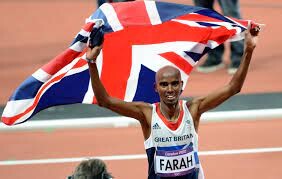
This will be Farah’s fourth marathon in the capital, after finishing eighth in 2014, third in 2018 – when he broke the British record - and fifth in 2019.
And he thinks it will be an emotional farewell in the city he was smuggled to from Somalia aged eight – and where he enjoyed his greatest glory by winning golds in the 5,000m and 10,000m at London 2012.
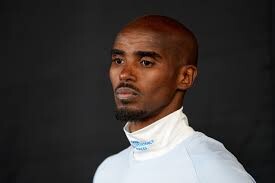
‘This is it. It will be my last marathon,’ said Farah in London on Thursday. ‘When you know it’s the end of the road, you always get emotional. I think it will get to me. Maybe after the race there will be tears.
London is my home. This is where my journey started as a young boy who took part in the mini marathon, won that, and watched the senior race thinking, “One day I’m going to run the London Marathon”.
‘Also the memory of 2012 and that Super Saturday. That still motivates me to keep going. All the people in the UK have been a big part of my career and I owe them.’
Farah, who has been training in Ethiopia and finished seventh in a 10km race in Gabon earlier this month, has not run a full marathon in three years and pulled out of last year’s race with a hip injury.
‘I don’t know if my body can do it but I have to finish,’ he said. ‘It has definitely been quite emotional these last couple of years. As an athlete, you always want to go out there and do the best you can, but my body hasn’t allowed me to do what I needed to do in training.
‘That’s been the hardest thing. For many years, I tended to take it for granted. As you get older, that totally changes because you can’t do what you did. That is the most frustrating thing. Age does catch up with you and your body.’
Farah’s legacy has, of course, been tarnished by his relationship with his former coach Alberto Salazar, who was banned for four years in 2019 for doping violations. The American has since been banned for life for sexual and emotional misconduct.
Asked if he had any regrets in his career, Farah insisted: ‘Not at all. I wouldn't have done anything different. I just took that journey and kept going and kept grafting. As an athlete you go out there and deliver and win races. That’s what I’ve done.’
(04/20/2023) ⚡AMPby David Coverdale
TCS London Marathon
The London Marathon was first run on March 29, 1981 and has been held in the spring of every year since 2010. It is sponsored by Virgin Money and was founded by the former Olympic champion and journalist Chris Brasher and Welsh athlete John Disley. It is organized by Hugh Brasher (son of Chris) as Race Director and Nick Bitel...
more...Sifan Hassan is set to make her marathon debut at London
Sifan Hassan’s 2023 London Marathon challenge: “I’m going to finish the distance or the distance is going to finish me” the Netherlands’ Sifan Hassan said in February when announcing she would race in 23 April’s London Marathon.
While the words were delivered with a customary laugh, there’s a real element of the unknown about Hassan’s jump from the 10,000m on track to a distance of over four times that where many runners' dreams have been scuppered.
Heck, even the marathon race itself is based on the legend of an ancient Greek messenger who drops stone cold dead after running it.
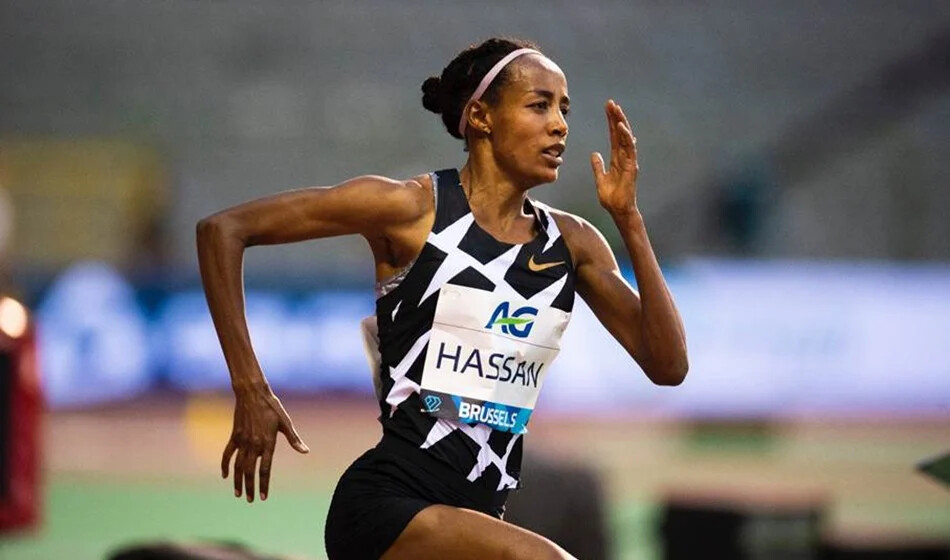
But if there’s one thing Hassan is known for above anything else, it’s her love of a challenge.
“Many people say I’m crazy,” she said of her previous big challenge of racing in three distances at the Tokyo 2020 Olympics that took place in 2021. “Believe me, I think I’m crazy too.”

Sifan Hassan: From refugee to the elite athletics star with energy to burn
In many ways, Hassan’s decision to run the London Marathon is reminiscent of her first big distance race in Eindhoven in 2011.
Just three years after arriving in the Netherlands as a refugee from Ethiopia, she told her coach, Ton van Hoesel, that she wanted to run a half marathon - even though she hadn’t trained for the race.
“I told her OK but do not start too fanatically because you might get injured. Well, she won the race!” recalled Van Hoesel in an interview with thenationalnews.com.
With the London Marathon, Hassan will once again be stepping into the unknown. However, this is an athlete who has faced and overcome fierce challenges both in running and in life.
While Hassan doesn’t talk about the reasons she left Ethiopia as a teenager, her experience after arriving in the Netherlands, which included being housed in a centre for minors for eight months in Zuidlaren where she “cried every day”, was one of the hardest challenges of her life.
Soon after, her introduction to the world of athletics gave her a new focus. After borrowing used spikes and kits from her local club, she began a journey that would take her to even more challenges - one of which is among the most breathtaking in Olympic history.
The London Marathon 2023: Hassan steps into the unknown
Hassan’s attitude to life so often mirrors her success in running - and she’ll need to draw upon her own mantras more than ever when she takes on her first-ever marathon in London.
“I tell people, when life is hard you will see yourself like you never imagined,” she said after her history-making showing in Tokyo. “Never give up.”
There is a playful curiosity about Hassan, who seems to peek over at new challenges and ask herself the question, “why not?” when so many others would get stuck on the “why”.
“I just want to see what I can do in the marathon,” Hassan said when announcing she would race in London, as if ticking off another item on a whimsical bucket list.
While the London Marathon doesn’t mark a permanent transition to the longer distance for the 29-year-old, who has said she plans to return to the track in time for Paris 2024, it does open up yet more possibilities for someone who is once again pushing the boundaries of track & field.
This is an athlete whose satisfaction comes from achieving the extraordinary. Even when some, including herself, think that borders on the preposterous.
As she herself said in Tokyo: “The last two weeks, sometimes I woke up from a nightmare and I asked: ‘Why do I have to make myself so stressed? But something inside me said to keep on going. I think I was kind of crazy, but now I am really happy."
(04/20/2023) ⚡AMPby Sean McAlister
TCS London Marathon
The London Marathon was first run on March 29, 1981 and has been held in the spring of every year since 2010. It is sponsored by Virgin Money and was founded by the former Olympic champion and journalist Chris Brasher and Welsh athlete John Disley. It is organized by Hugh Brasher (son of Chris) as Race Director and Nick Bitel...
more...UTMB World Series introduces new pregnancy policy
Organizers of the UTMB World Series—billed as the world’s ultimate trail-running circuit—say they have committed to supporting mothers and their partners by introducing a new pregnancy policy that will apply to UTMB World Series events in the 2023 season.
The policy (which includes deferral and priority entry guidelines for athletes who are pregnant, athletes with a partner who is pregnant and athletes who are adopting or birthing via surrogacy) encourages runners to return to the trails in a safe way and within a timeframe that is considerate of individual circumstances following birth.

For events with an entry lottery, including UTMB Mont-Blanc, Lavaredo Ultra Trail by UTMB and Eiger Ultra Trail by UTMB, the policy states women will be given a full refund and priority entry to be used within five years for races in the 50K, 100K and 100M categories, and within two years for 20K races.For all other events, the policy allows for women who become pregnant after registration to defer their entry for up to two years for the same race, or receive a full refund.
Partners of pregnant women as well as parents who are adopting or birthing via surrogacy will have the option to defer their entry for up to two years or receive a full refund.
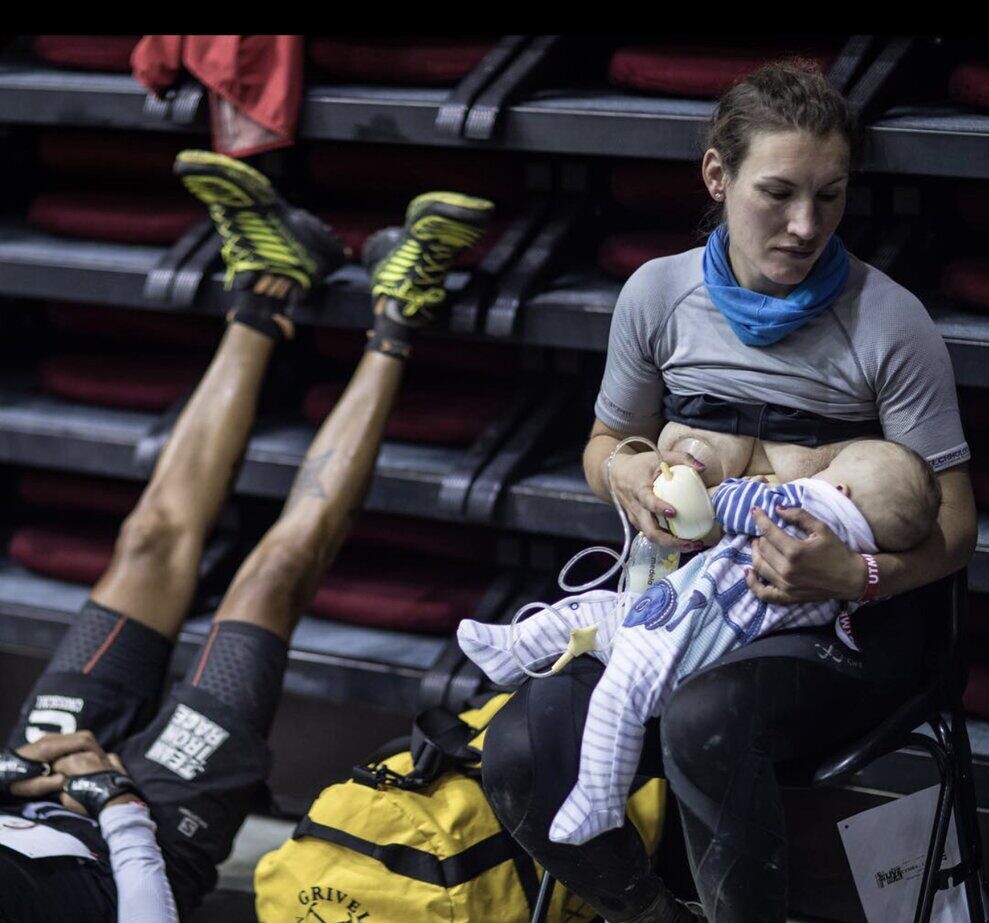
Organizers say the policy was created following a lengthy consultation process, which included gathering expertise from sports and medical professionals, the Pro Trail Runners Association, and athletes such as Sophie Power, who made headlines in 2018 when a photo of her breastfeeding midway through UTMB went viral.
“I’m delighted that UTMB World Series is launching a world-leading pregnancy deferral policy that supports all women to return to racing when they are ready,” said Power, founder of SheRACES. “At SheRACES we look forward to continuing to work with UTMB World Series going forward, sharing our insights to ensure more women from all backgrounds participate in these iconic events.”
UTMB World Series organizers say the new policy comes as part of an effort to encourage more women into the sport and to build on UTMB Group’s commitment to equal opportunities. In line with the actions put in place in previous years, in 2023, male and female elite athletes will be equally represented on the start line of all three UTMB World Series Finals races at the sports pinnacle event UTMB Mont-Blanc, thanks to the new sports system, which sees elite athletes qualify through a series of events throughout the year.
UTMB World Series adds it also remains committed to equal media coverage and representation on communication platforms including UTMB Live, as well as equal prize money for male and female athletes.
UTMB is one of several prominent races—including Western States, the London Marathon and the Calgary Marathon—to have recently introduced policies aimed at supporting mothers and pregnant athletes.
(04/20/2023) ⚡AMPby Paul Baswick
North Face Ultra Trail du Tour du Mont-Blanc
Mountain race, with numerous passages in high altitude (>2500m), in difficult weather conditions (night, wind, cold, rain or snow), that needs a very good training, adapted equipment and a real capacity of personal autonomy. It is 6:00pm and we are more or less 2300 people sharing the same dream carefully prepared over many months. Despite the incredible difficulty, we feel...
more...World marathon silver medalist Judith Korir motivated for London race
World marathon silver medalist Judith Korir believes she has what takes to secure a podium place in the 43rd London Marathon in the United Kingdom on Sunday.
But it will be a tall order for her as she faces a formidable field that has her compatriots, reigning Olympics marathon champion Peres Jepchirchir and Olympics marathon silver medallist Brigid Kosgei, who is also the world marathon record holder.
The runners will be targeting the course’s best time, which is a women’s only world record time set by Kenya’s Mary Keitany in 2017.
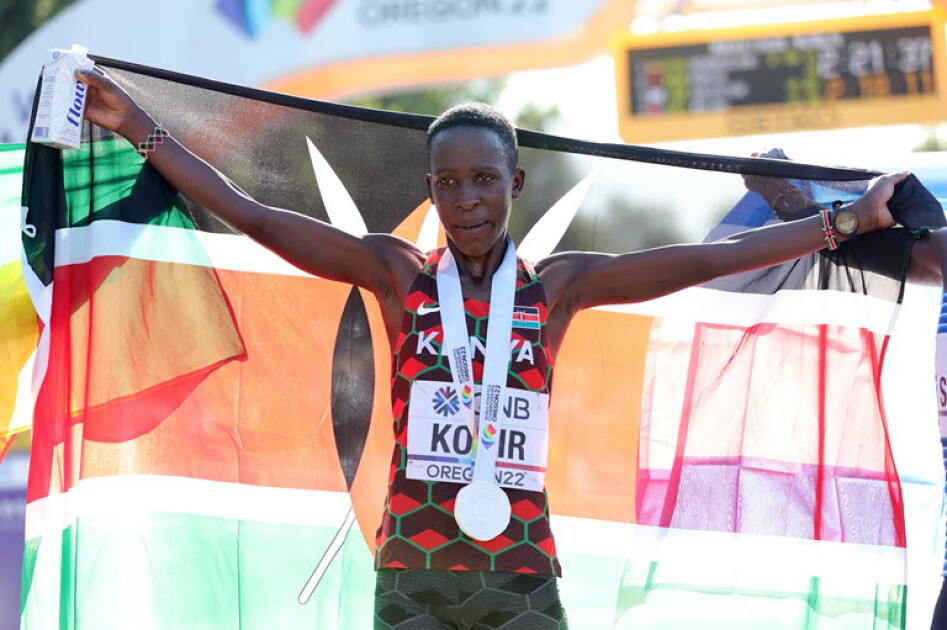
Last year, Korir who trains under the Italy-based Rosa Associati management, was initially entered in the London Marathon as a pacesetter but the last minute withdrawal of Brigid Kosgei saw her registered as a competitor.
She went on to finish fourth in a time of 2:18:43. This time she has been training in the full knowledge she is in the list of the elite women competitors.
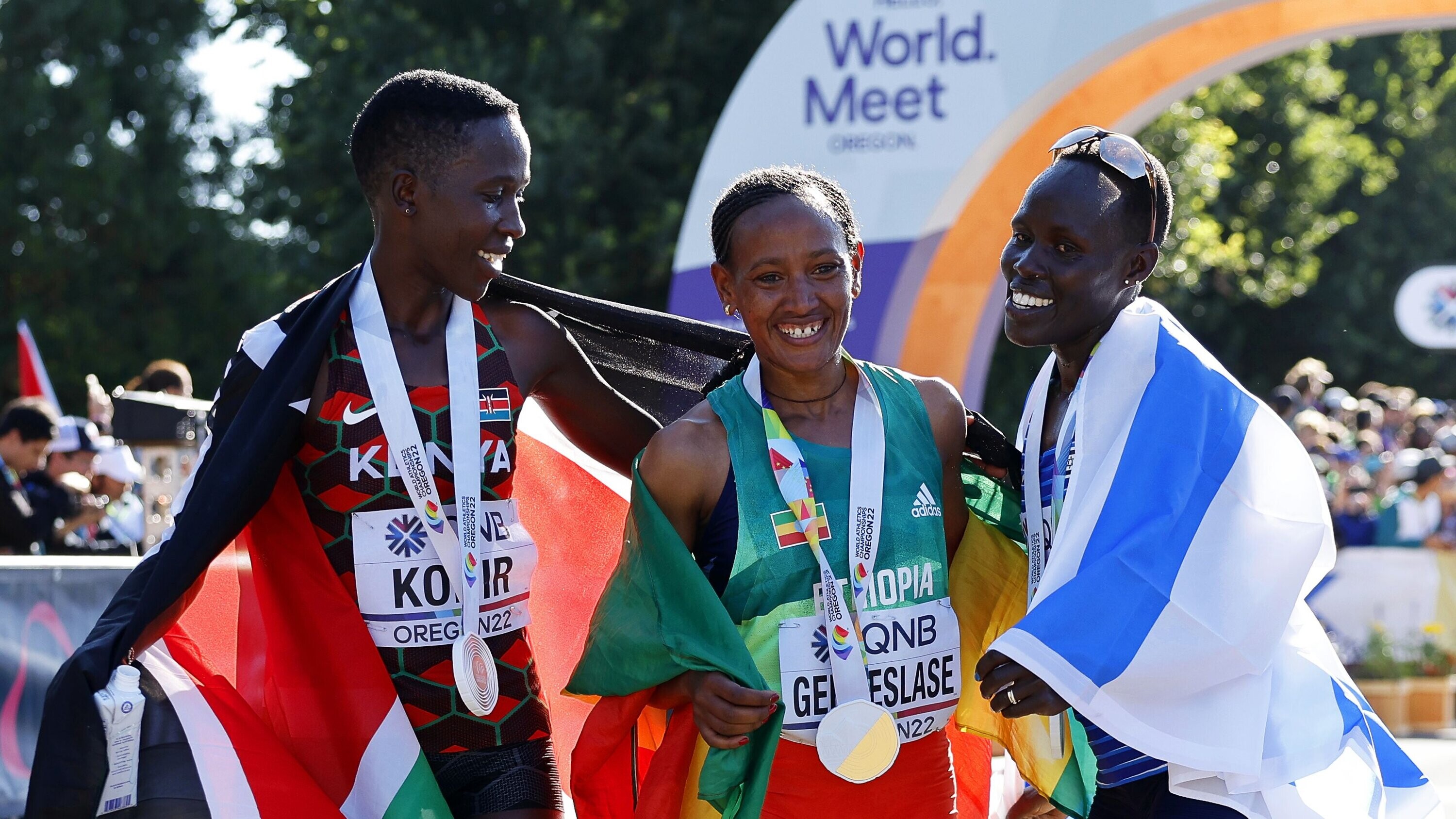
“The line-up is tough but I believe in my training. I can’t compare it with last year where I prepared for one month,” Kosgei said when Nation Sport caught up with her at the Ndura Sports Complex in Kitale, last week as she put the finishing touches to her training.
“Competing with some of the best athletes in the marathon like Jepchirchir and Kosgei motivates me to work extra hard,” she said.
“London Marathon line-up is tough and my target is just to run well because we have some of the best athletes in the world participating,” added Korir, who is the 2022 Paris Marathon champion.
Nation Media Group’s NTV will broadcast the race live. There will be a watch party in Eldoret, at the Uasin Gishu County big screen along Uganda Road, starting at 8am on race day.
(04/20/2023) ⚡AMPby Bernard Rotich
TCS London Marathon
The London Marathon was first run on March 29, 1981 and has been held in the spring of every year since 2010. It is sponsored by Virgin Money and was founded by the former Olympic champion and journalist Chris Brasher and Welsh athlete John Disley. It is organized by Hugh Brasher (son of Chris) as Race Director and Nick Bitel...
more...Eliud Kipchoge shed some light on what happened in his Boston Marathon debut
More than a day after he finished sixth in his first Boston Marathon, Eliud Kipchoge sat down to answer a few questions.
Kipchoge, the 38-year-old marathon world record holder, had only lost two of his 17 career marathons prior to Monday. So it was surprising to see him struggle to answer the acceleration of Gabriel Geay during Mile 18 of the race. He then fell to the back of the pack and was subsequently dropped by the race leaders by Mile 21.
Kipchoge acknowledged that he had an issue with his upper left leg that began during Mile 18.
“That’s where the problem is,” Kipchoge told reporters on Wednesday. “I tried to do what was necessary, but it was not working.”
“I’m not a doctor,” he later joked when asked for more specifics.
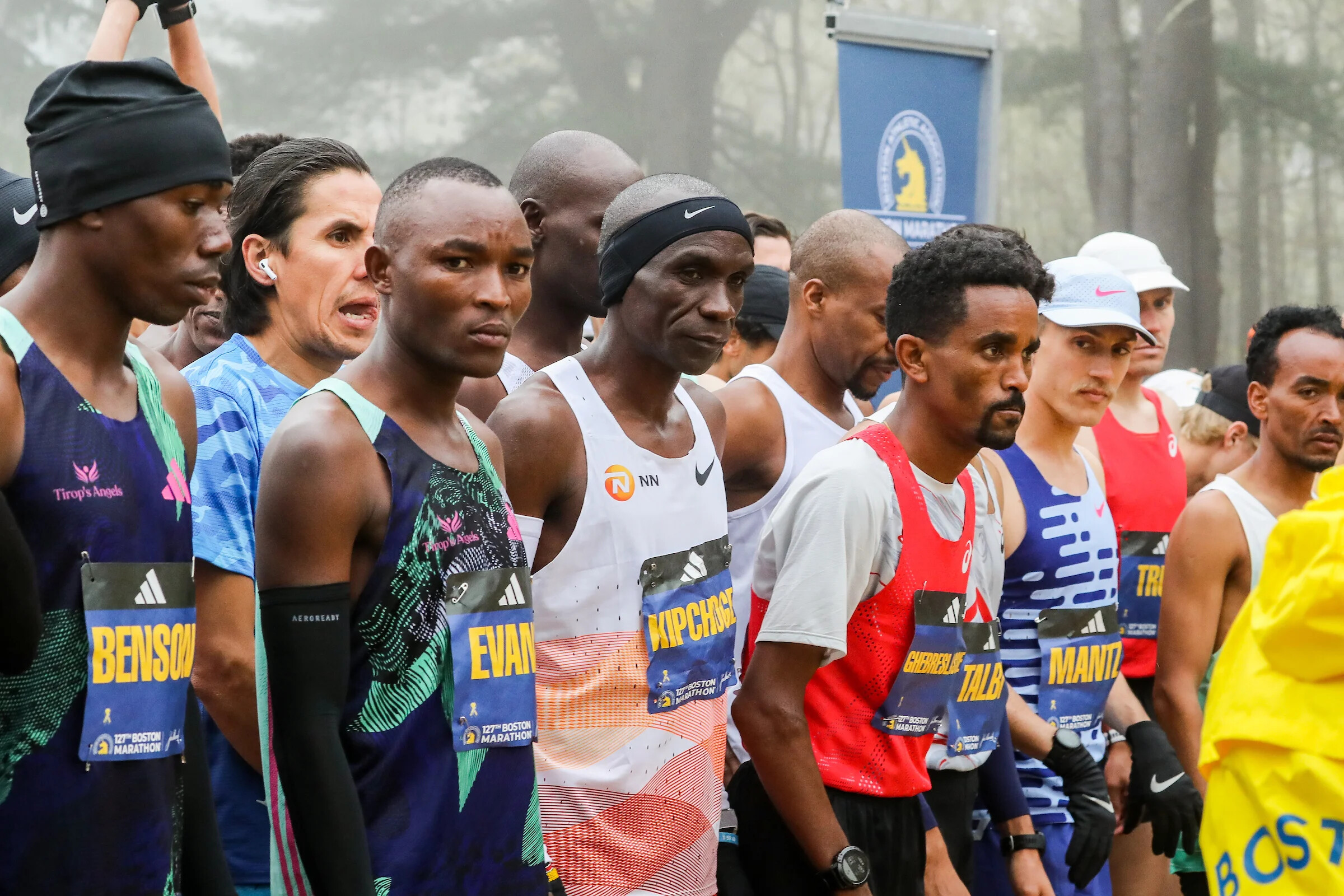
Having encountered the issue mid-race, he said that he simply “put my mind just to run in a comfortable pace to finish.”
Asked if he considered dropping out once he experienced an issue with his leg, Kipchoge admitted that “a lot of talking was going on in my mind.”
“But I said, ‘Hey, I can’t quit.’ They say it’s important to win, but it’s great to participate and finish.”
Given that he started confidently — leading the pack of elite runners for nearly all of the opening 17 miles — Kipchoge responded to a question about whether he had been tactically too aggressive in the early part of the race.
“This is sport, and you need to push,” he replied.
As for what’s next on his agenda, the Kenyan acknowledged that he will take some time to think things over. His main focus in the short term is to “recover, both mentally and physically.”
Despite the differences between Boston’s course — with its continuous elevation changes — and others that he’s run, which have generally been much more flat, Kipchoge also downplayed its effect on how he ran.

Though his debut in Boston didn’t go to plan, he said he would “absolutely” consider returning to run again. However, this will likely not be in 2024 since Kipchoge will probably aim to run in the Paris Olympics, which will take place too close to Boston’s April schedule for him to be at his fitness peak. He is the two-time defending Olympic gold medalist.
Kipchoge also released a statement following the race on Monday in which he congratulated eventual winner (and fellow Kenyan) Evans Chebet.
“I live for the moments where I get to challenge the limits. It’s never guaranteed, it’s never easy,” Kipchoge said. “Today was a tough day for me. I pushed myself as hard as I could but sometimes, we must accept that today wasn’t the day to push the barrier to a greater height.
“I want to congratulate my competitors and thank everyone in Boston and from home for the incredible support I am so humbled to receive,” he added. “In sports you win and you lose and there is always tomorrow to set a new challenge. Excited for what’s ahead.”
(04/19/2023) ⚡AMPby Hayden Bird
Boston Marathon
Among the nation’s oldest athletic clubs, the B.A.A. was established in 1887, and, in 1896, more than half of the U.S. Olympic Team at the first modern games was composed of B.A.A. club members. The Olympic Games provided the inspiration for the first Boston Marathon, which culminated the B.A.A. Games on April 19, 1897. John J. McDermott emerged from a...
more...Australian man runs marathon while pushing lawnmower
As runners tied up their shoelaces and stretched their calves for Sunday’s Newcastle Marathon in New South Wales, Australia, one local dad checked his wheels and made sure his catcher was secure, pushing a Victa Corvette 400 gas-powered lawnmower for 42.2 kilometres while raising money to help Australia’s Youth Mental Health Foundation.
The idea to do something special came to Daniel Robinson while he was mowing his lawn. He has previously done other challenges to raise money for the same foundation; for example, last year, he spent 12 hours running up and down Newcastle’s Mount Tomaree, doing 40 push-ups at the top, on every lap.
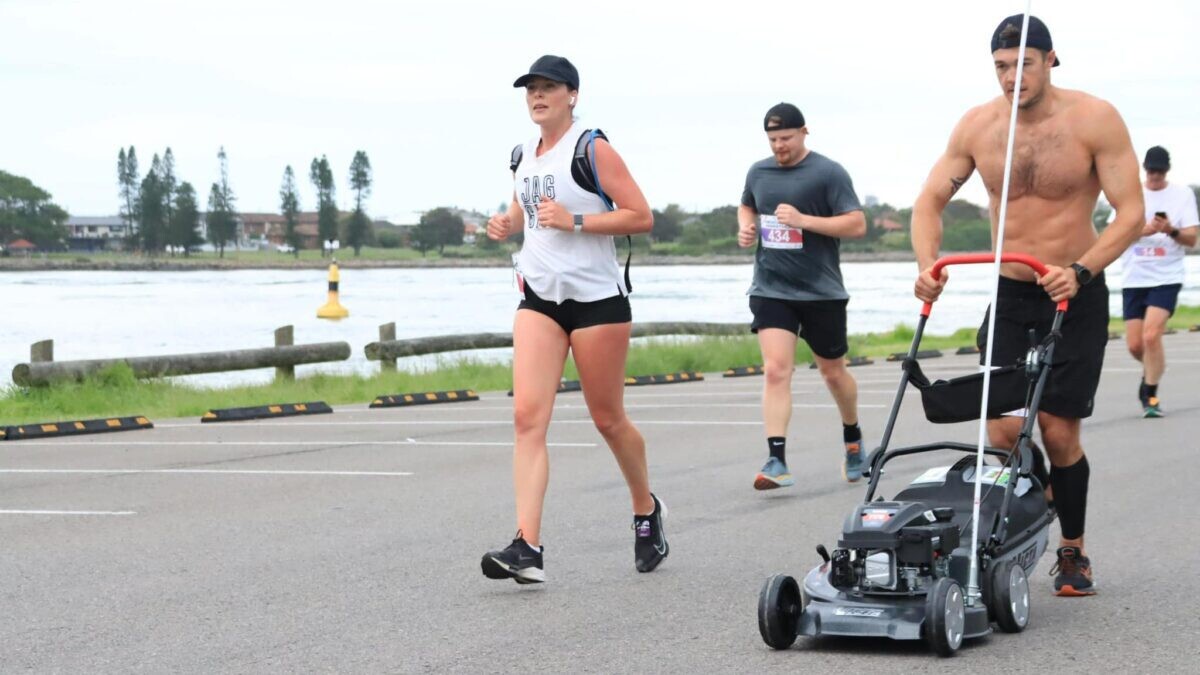
“I wanted to run a marathon while doing something that I haven’t seen before,” said Robinson to local news. “It took me a while to think it up, but I loved the idea of pushing myself and my lawnmower.”
Robinson finished the marathon in a time of 4:04:37, crossing the line in 198th place out of 500 runners. Robinson said the hardest part was making sure he didn’t trip or “mow” anyone down.
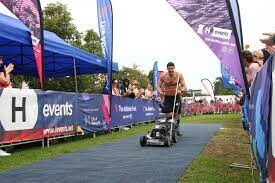
Youth mental health is an important cause close to Robinson’s heart. “Each year, one in four young people experience a mental health issue, and 75 per cent of mental health disorders emerge before a person turns 25,” said Robinson. “Sadly, suicide is still the leading cause of death for young people in Australia.”
Robinson’s goal is to raise $20,000 for Australia’s Youth Mental Health Foundation, he’s currently about half of the way there.
(04/19/2023) ⚡AMPby Marley Dickinson
Former world record holder disqualified for taking a car during 50-mile race
Scottish ultrarunning record holder Joasia Zakrzewski has been stripped of a recent third-place finish at a British 50-miler after it was discovered that she rode in a car for about two and a half miles mid-race. Zakrzewski told the BBC that while she did hitch a ride with a friend, her decision to do so “wasn’t malicious.” Zakrzewski is the owner of multiple Scottish and British ultrarunning records, and she ran the 48-hour world record in February (although her distance was bettered by Camille Herron in March).
Zakrzewski lives in Australia, and she reportedly travelled last-minute to the U.K. for the April 7 Manchester to Liverpool ultramarathon, arriving the night before the race. As she told the BBC, she got lost on the course halfway through the race, at which point she began dealing with leg pain that eventually became too much to handle. She saw a friend on the sidelines and decided to pull out of the run, hopping in his car and riding to tell the race marshals she was done for the day.

“When I got to the checkpoint I told them I was pulling out and that I had been in the car,” Zakrzewski said. “They said, ‘You will hate yourself if you stop.'” Zakrzewski agreed and carried on, later telling the BBC that she only planned to finish the race non-competitively.
After crossing the line in third place, however, Zakrzewski was given a medal, a trophy and she was asked to pose for podium pictures. She didn’t stop to let anyone know she had cut the course, but Zakrzewski said that was not intentional.
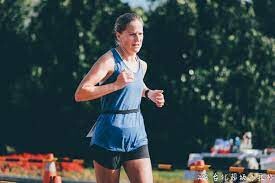
“I made a massive error accepting the trophy and should have handed it back,” she said. “I was tired and jet-lagged and … I was feeling unwell and spaced out and not thinking clearly.” Zakrzewski’s car ride blip was not noticed immediately, but race director Wayne Drinkwater was eventually tipped off that she had received an “unsporting, competitive advantage during a section of the event.”
Drinkwater and his team checked the race tracking data and took statements from other competitors, before moving forward with Zakrzewski’s disqualification. As The Guardian reported, a GPS file shows that Zakrzewski covered a mid-race mile in one minute and 40 seconds.
With Zakrzewski disqualified, a runner named Mel Sykes is the new third-place finisher at the race. “I’m an idiot and want to apologize to Mel,” Zakrzewski said. “I would never purposefully cheat.”
(04/19/2023) ⚡AMPby Ben Snider-McGrath
Peter Mwaniki again wins the 20th edition of the KATA monthly time trial in Thika Kenya clocking 29:17.5
The 20th edition of Kenyan Athletics Training Academy (KATA) time trial were held in Thika Kenya this Wednesday with on-form Peter Mwaniki and Fredrick Kiprotich retaining their titles.
Peter bettered his 29:42.6 attained in February to clock 29:17.5 on the 10Kilometres Course while Fredrick, who finished first in last month’s 5,000metres on the track, defended the 5Kilometres class after timing 15:34.7.
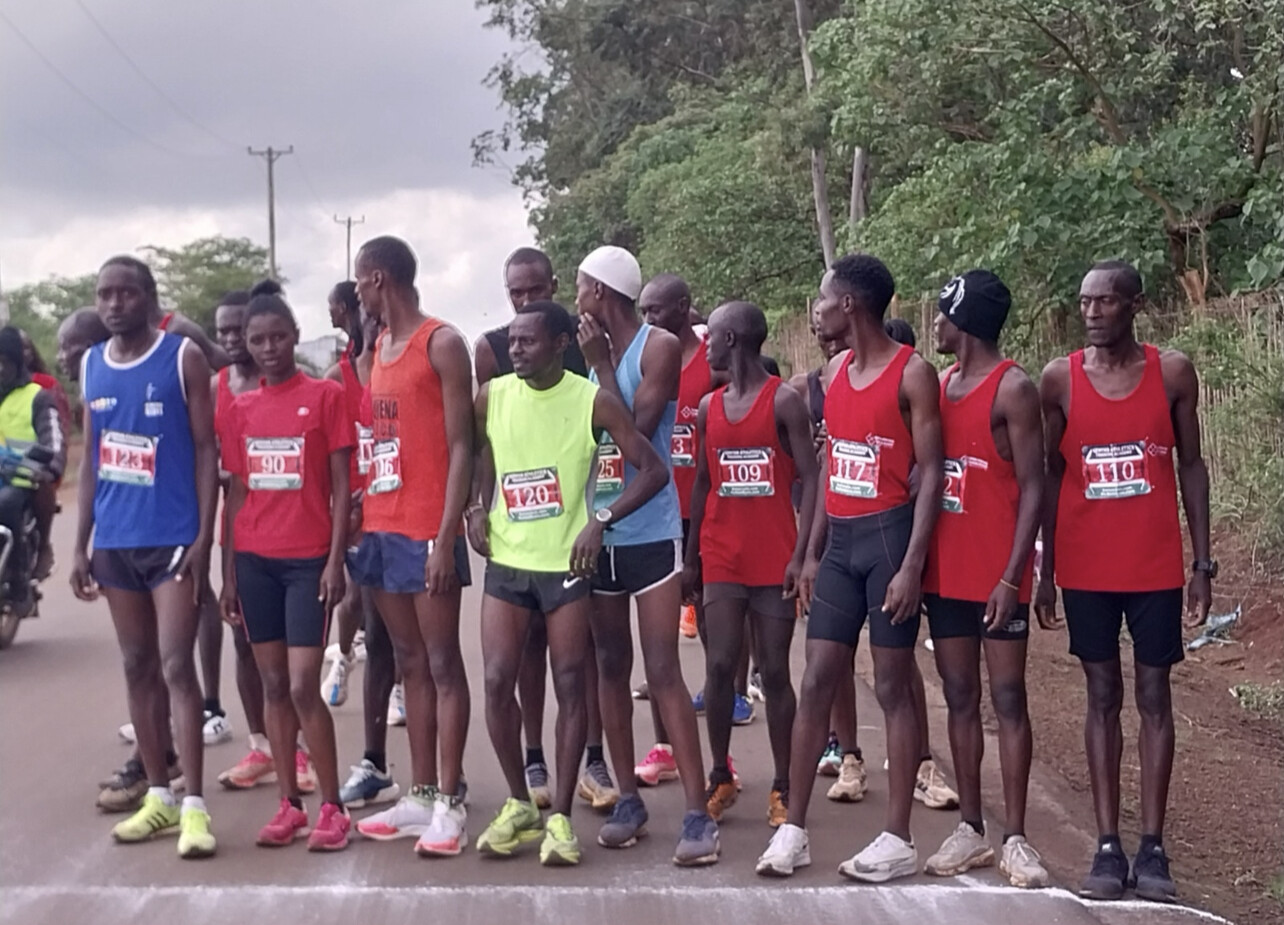
Zakaria Kirika followed the winner in the 10Km clocking 29:58.4 with 3rd-placed Raphael Gacheru clocking 30:54.2.
Peter Mburu and Evans Kiguru followed in 31:04.5 and 31:08.1.

In the 5Kilometres, visiting athlete Daniel Kishoyan from Narok came second in 15:48.5 while upcoming John Mutiso,19, clocked 16:49.0 during the trial held at the traditional Mang’u-Bob Harries Road, just 5Km from KATA.
In Ladies, Marathoner Kellen Waithera,36, improved her time from 36:38.3 to 34:36.3 while Caren Chepkemoi posted 38:08.2 for second place.
Paul Ng’ang’a clocked 35:21.1 to come first in the 40-44 master’s class while Charles Ndirangu, 60, clocked an excellent 36:26.9 to win his category.
20th KATA TIME-TRIAL
10Kilometres
1.Peter Mwaniki 106 24 29:17.5
2.Zakaria Kiriki 124 22 29:58.4
3. Raphael Gacheru 117 24 30:54.2
4. Peter Mburu 123 26 31:04.5
5. Evans Kiguru 115 27 31:08.1
6. Simon Mwangi 107 21 31:08.5
7. Simon Ngumbao 120 28 31:50.3
8. Boniface Mungai 111 24 32:06.8
9. Anthony Mukundi 84 35 32:12.9
10.Eliud Muthike 127 28 34:22.5
11. Kellen Waithera 121 36 34:36.3
12. Paul Ng’ang’a 110 42 35:21.1
13. Charles Ndirangu 118 60 36:26.9
14. Caren Chepkemoi 89 21 38:08.2
15. Chris Kamande 114 38 48:53.6
5Kilometres
1.Fredrick Kiprotich 108 23 15:34.6
2. Daniel Kishoyan 93 21 15:48.5
3. John Mutiso 119 19 16:49.0
4. Amos Chirchir 122 23 16:52.7
5. Lawrence Maina 112 24 18:14.3
6. Francis Kariuki 120 16 18:20.8
7. Lewis Mwangi 109 16 18:22.9
8. Paul Kariuki - 24 19:00.0
9. Virginia Wanjiru 126 21 25:12.5
10. Hannah Njeri 90 23 26:08.2
(04/19/2023) ⚡AMPby Coach Joseph Ngure
KATA Time Trial Series
The Kenyan Athletics Training Academy (KATA) in Thika Kenya stages a monthly time trial. Starting Sept 2021 this monthly event is open to anyone who would like to get an official time on a acurant course. Results will be published at My Best Runs so race directors and other interested people can see what kind of shape our participants are...
more...Leslie Sexton flies to second straight Vancouver Sun Run crown
A star-studded lineup of runners raced the 2023 Vancouver Sun Run on Sunday, producing a pair of exciting 10K races won by John Gay and Leslie Sexton. Gay won the men’s race in a tight battle with 2019 Sun Run champion Justin Kent, crossing the line in 29:40. Sexton successfully defended her title from 2022, winning in 32:22. The race was a massive success, as more than 30,000 runners took to the wet and rainy streets of Vancouver to test their limits.
Two in a row for Sexton
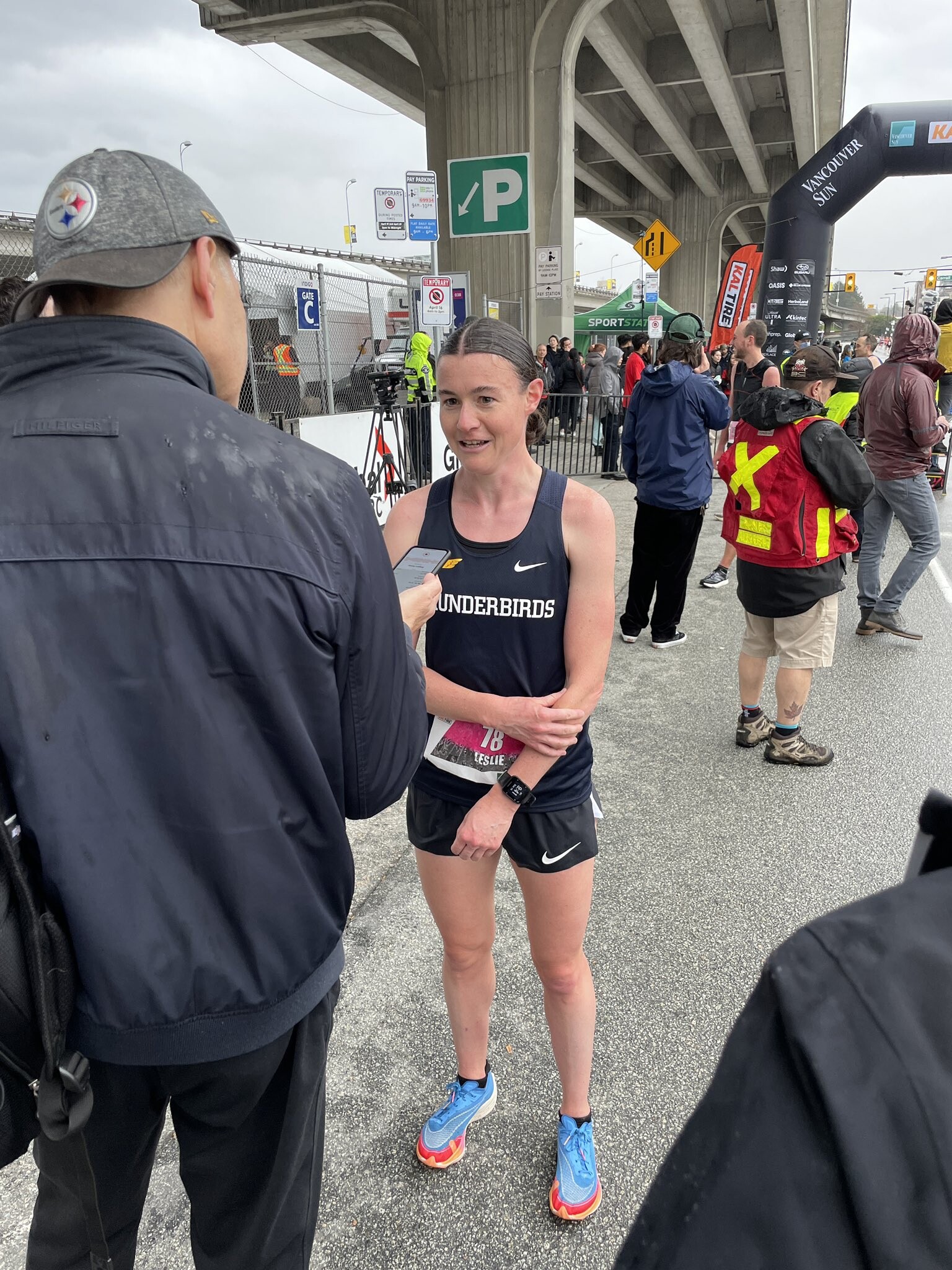
Sexton won the 2022 Vancouver Sun Run in 32:27, and this year she not only repeated as champion, but also improved on her previous winning time by 15 seconds. As she told the Vancouver Sun after the race, “I tend to run well in the rain. I saw the forecast and I knew this was a strength for me, and I’m just going to roll with it.”
Sexton ran near identical splits over the two halves of the race, running the first 5 km in 16:12 and the second in 16:10. This even pacing and negative split helped her catch Olympic marathoner Malindi Elmore, who got out to a hot start, passing through the 5 km checkpoint in 16:04. Over the closing 5 km, Sexton didn’t panic or force things as she attempted to draw Elmore back in, instead sticking to a regular pace and trusting in her fitness.
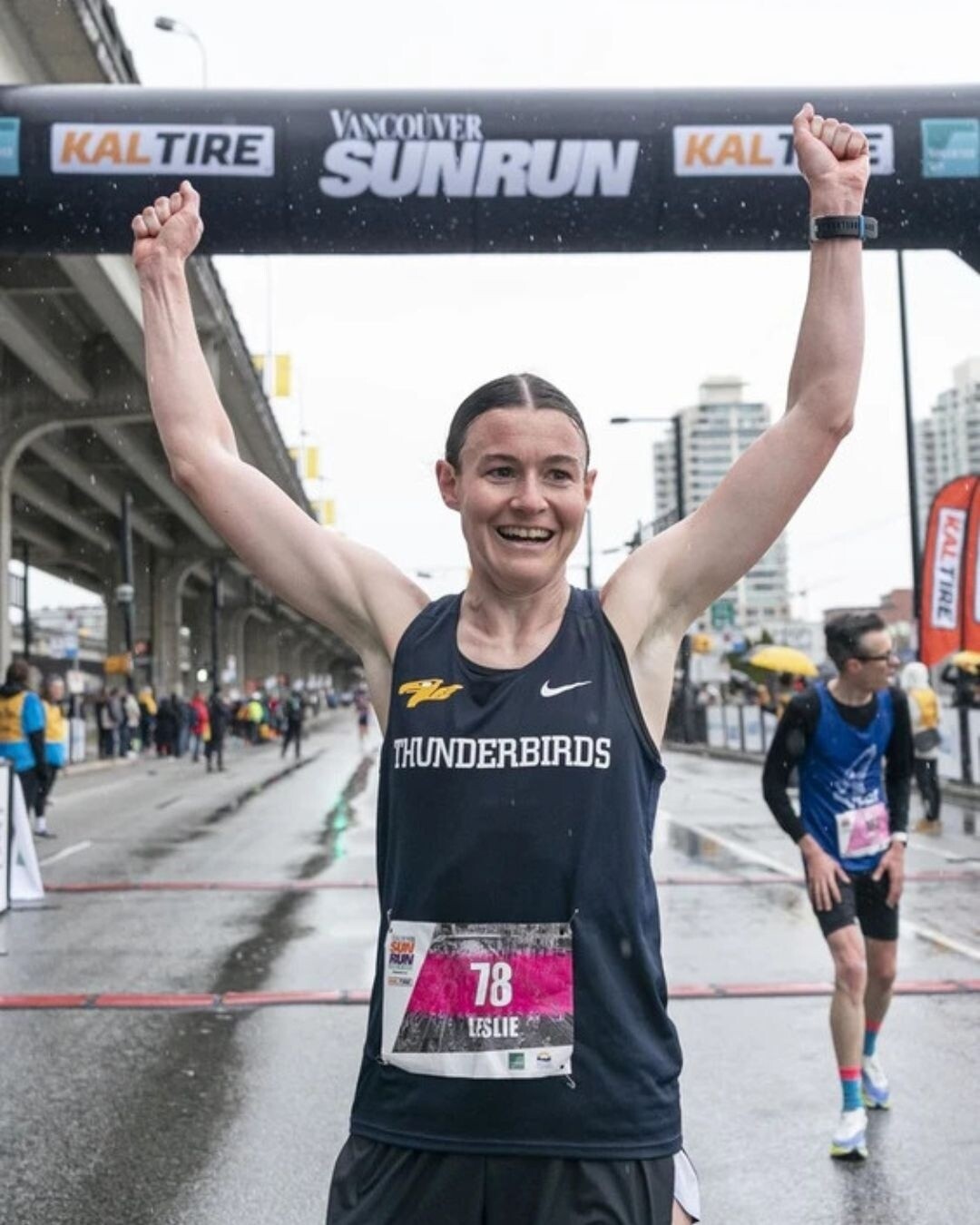
“Last year, I went out too fast,” Sexton told the Sun. “The course really chewed me up over the second half [in 2022] and, this year, I just let the top three go and they gapped me a bit. I just worked my way past people as it went on.” By 7 km, Sexton had caught Elmore, and she made her passing move on a slight uphill around a kilometre later.
Sexton continued to pull away in the final couple of kilometres, ultimately crossing the line in 32:22, 13 seconds in front of Elmore. Cleo Boyd rounded out the podium with a final time of 32:55.
(04/19/2023) ⚡AMP
by Running Magazine
Vancouver Sun Run
The Vancouver Sun Run has been Canada's largest 10K road race since its inception in 1985. Founded by former Canadian Olympians Dr. Doug and Diane Clement along with Dr. Jack Taunton, the run's purpose was to promote the benefits of running to improve health and fitness as well as support elite amateur athletics. The first run attracted 3,200 participants. Through...
more...Natasha Wodak withdraws from 2023 London Marathon
The Canadian women’s marathon record holder, Natasha Wodak, will not be racing at the 2023 London Marathon this Sunday. The 41-year-old announced on her Instagram Tuesday that she has been trying to train through injury and sickness but has not been 100 per cent, which has forced her to withdraw.
“I am absolutely gutted to announce I’ve pulled out of Sunday’s London Marathon,” wrote Wodak. “The last few days have been incredibly tough trying to decide what to do, but I am so grateful to all the people in my life that have reassured me that we have made the right decision.”
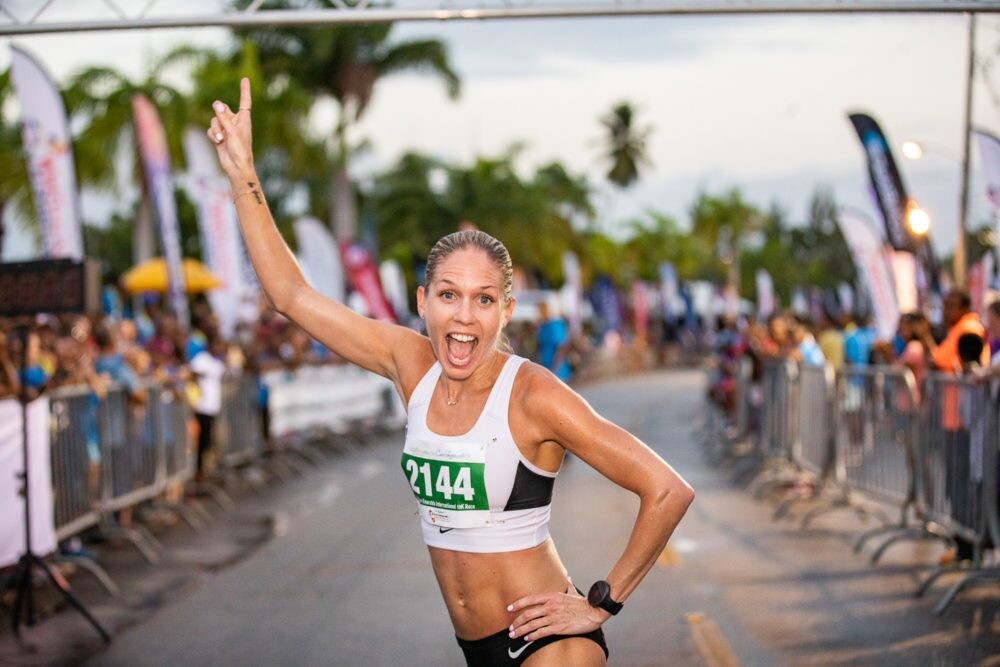
Earlier in her marathon training build, Wodak was dealing with two separate injuries, which resulted in her missing training. “We put up a great fight when injuries tried to derail us,” wrote Wodak. Two weeks before the marathon, I started having stomach issues, and I’ve unfortunately been sick since. I have not been able to eat much, and we all know you can’t race a marathon under-fuelled.”
Last year at the 2022 Berlin Marathon, Wodak set a new Canadian marathon record of 2:23:12 with her 12th-place finish.
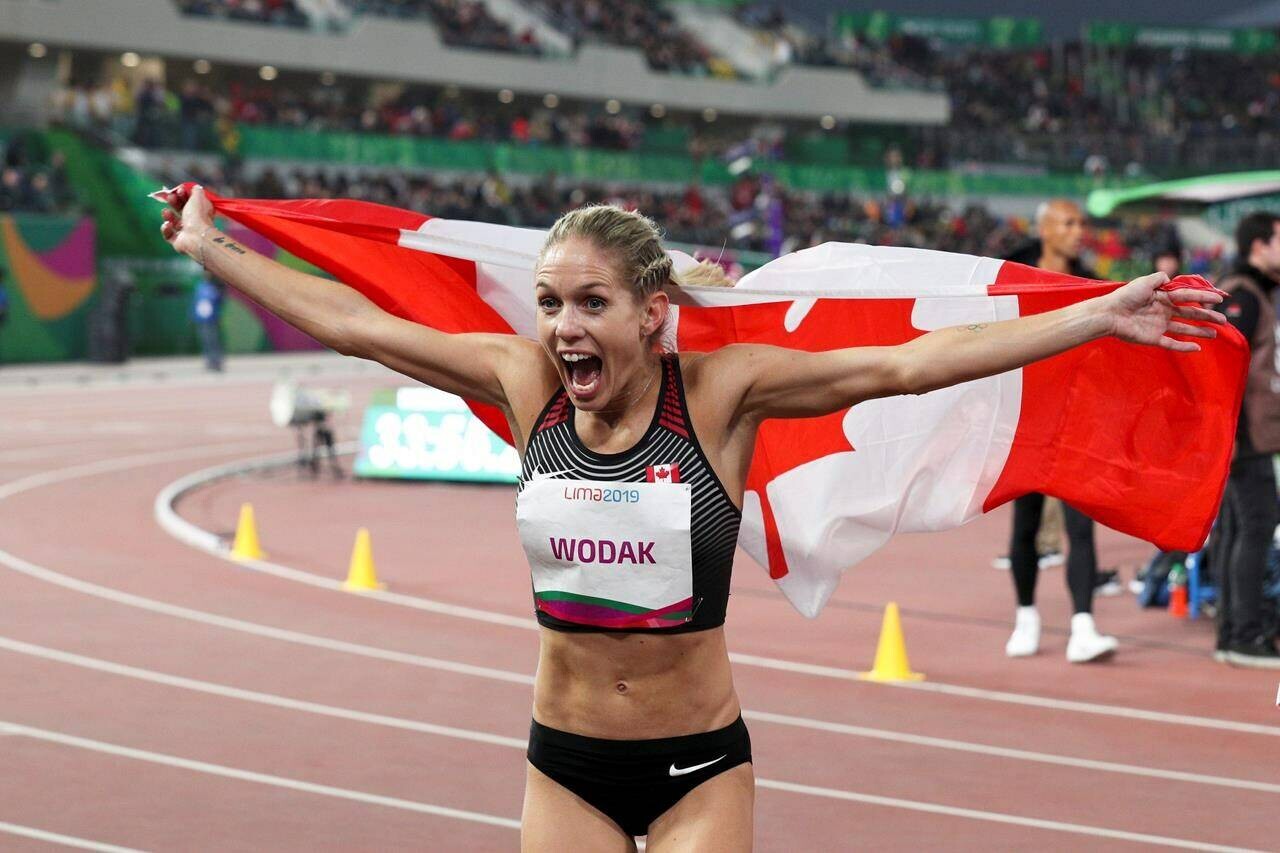
The two-time Canadian Olympian beat the previous record by a minute and 38 seconds, held by Malindi Elmore from the 2020 Houston Marathon (2:24:50).
Wodak was set to take on one of the greatest women’s marathon fields ever assembled, including Olympic champions Sifan Hassan and Peres Jepchirchir, plus the world record holder Brigid Kosgei and the marathon debut of Eilish McColgan.
Wodak remained optimistic about a return to the marathon, “Right now, I will take the time to rest and reset,” she said. “We have more races to come.”
With Wodak’s withdrawal, there will now be no Canadian elites at the 2023 London Marathon. Rory Linkletter was supposed to start in the men’s elite field but also had to withdraw from an IT band flare-up in late March.
(04/19/2023) ⚡AMPby Marley Dickinson
TCS London Marathon
The London Marathon was first run on March 29, 1981 and has been held in the spring of every year since 2010. It is sponsored by Virgin Money and was founded by the former Olympic champion and journalist Chris Brasher and Welsh athlete John Disley. It is organized by Hugh Brasher (son of Chris) as Race Director and Nick Bitel...
more...How quickly you can safely increase mileage?
There’s been a changing of the guard when it comes to injury-prevention metrics. The 10 per cent rule was once the predictor coaches used to assign programs and recommend the rate at which runners should increase their miles run.
However, there’s a new acronym in town. Introducing: ACWR (acute-to-chronic workload ratio), the new way to (successfully) up your mileage. As the weather gets nicer, many runners will be looking to up their mileage and get outside. While there are many factors that can have a bearing on likelihood of injury, mileage is certainly one of them–especially when mileage increases too quickly. Here’s how to up your mileage as safely as possible.

The 10 per cent rule
The 10 per cent rule was once known as the gold standard for increasing mileage and limiting the prevalence of injury. The basic principle was that a person’s training load shouldn’t increase by more than 10 per cent each week. So if someone was running 50K one week, the next week should be no more than 55K.

However, a recent paper out of the British Medical Journal, debunks the 10 per cent rule and suggests that novice runners can handle as much as a 20 to 25 per cent increase from one week to the next. Researchers also pointed out that the athlete really needs to be considered individually. For example, a runner who’s accustomed to high mileage can increase much faster than a new runner. Researchers suggested that, especially when it comes to well-trained runners, the 10 per cent rule is, at best, a guideline and not a rule.
Acute-to-chronic workload ratio
ACWR is the new rule, replacing the 10 per cent ‘guideline.’ The ACWR is an equation where the desired outcome is a score of 1.3 or under. Runners can divide their most recent week of mileage (or minutes run) by the average of their most recent four weeks of mileage (or minutes run).
Runners are identified as being higher-risk for injury if their score is 1.5 over or under 0.8 (with the sweet spot falling between those two figures). The 10 per cent rule only looks at the week before, whereas ACWR gives a slightly fuller picture and encourages runners to increase their miles at a reasonable rate.
While ACWR is an improvement on the 10 per cent rule, it’s not without its flaws as Alex Hutchinson points out in Outside Magazine, “In a new review in Sports Medicine, researchers from McGill University led by Ian Shrier sum up the case against it. In a way, the discussion reminds me of debates around the original ten-percent rule, where you have to weigh demonstrable flaws against the sense that this ratio really does tell you something useful in the real world.”
What’s your life looking like?
Neither the 10 per cent format nor ACWR are absolute rules, especially not without context of the runner’s background in the sport and life situation. It’s important to asses your circumstances when considering your training load. Things to think about are: your sleep habits, your previous training history, your work load in your professional life, your family demands and your general stress levels. All of these factors play into causing (or preventing) an injury.
A study out of The Institute for Scholastic Sport Science and Medicine found that in adolescent student-athletes (grades seven to 12), getting under eight hours of sleep led to a 70 per cent increase in the likelihood of injury. And runners who push through fatigue and life stress can easily develop symptoms of overtraining. If you find yourself planning a training block, make sure you factor your life into that plan–chances are you’ll find that training more rewarding if you do.
(04/18/2023) ⚡AMPby Running Magazine
Recovery Running: What’s the Point?
This blog discusses the reasons why recovery running is an important part of any athlete’s training program and reflects on insights that the author noticed during a training camp in Iten, Kenya.
A small village called Iten in rural Kenya has produced some of the finest distance runners in the history of the sport; Olympic champions, world record holders and professional athletes choose to make this their training ground. It’s not uncommon to bump into someone on the street who can casually talk about their marathon pb of 2.08 or below who are far from boasting, or see a group or 20 athletes training at the track, all of whom have sub 28 minute 10k’s to their name.

Would it then surprise you to see these same athletes jogging along the dirt trails at 9:00/mile pace?
We hear stories of top Kenyan athletes running well in excess of 100 miles per week but while that is indeed true for many individuals, there is still an overwhelming consensus that quality beats quantity. To train at ones best the body must be in good physical condition and the Kenyans are well aware of this fact. One aspect they believe is an important factor in this is recovery runs, and these are taken very seriously.
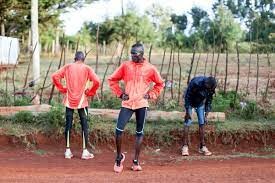
What is a recovery run?
When you train at a high intensity your muscles accumulate blood lactate, a by-product of anaerobic respiration. While we won’t delve into the science during this article it is important to understand that hard training takes its toll on the body and that without taking the time to recover it is extremely difficult to adapt to the stresses of exercise leading to fatigue, “burnout” and ultimately injury, not to mention that you won’t be getting the benefits of the hard training anyway.
A recovery run is a relatively short run at a very comfortable pace – typically under 60% of your maximum HR. These have a number of benefits but they may not be the ones you thought of. It is commonly taught that recovery runs will aid the removal of waste products from the body after hard training, however, there is in fact very little scientific evidence supporting this. Studies have shown that even after extremely taxing workouts, almost 100% of excess accumulated lactate is metabolised or removed from the body within 1 hour of the workout. Nor has there been any research indicating that recovery runs promote the repair of damaged tissues, restore glycogen reserves in the muscles or elicit any other physiological response that aids the recovery process…
So what’s the point?
At approximately 60% of maximum HR your heart reaches its maximum stroke volume. This means that despite running with a significantly reduced rate of energy expenditure, your heart muscle is contracting with as much force as it possibly can on each beat. Even at this easy pace you are training your heart muscle without fatiguing the rest of your body.
At a cellular level running at this pace stimulates growth of the mitochondria (the organelle responsible for energy production), increase capillary capacity and the ability to deliver oxygen to the muscles.
There are also several neuromuscular benefits. Although you may think of running as a task that you don’t need to “think” about, your brain is still in control of your limbs. Running at a slow pace allows you to develop neuromuscular pathways by focussing on correct running technique.
I think the third point above has particular relevance to Kenyan running culture. It is no coincidence that the Kenyans you see on TV look so fluent and graceful in the way they move. Take David Rudisha’s 800m world record for example; he front ran 2 laps of the track without breaking form, for sure he was working hard but he certainly didn’t look like it. Kenyans use their slow runs to work on their form. They are consciously thinking during the run; how their feet contact the ground, how it feels to breath, where their arms are positioned, how their heads are held etc. It’s very difficult to consider these things when running a hard track session, but when the time comes to run fast they don’t need to think about it, it’s been ingrained into their system.
So in fact, during a ‘recovery run’ you are still training your body; you are still stressing certain systems and certain parts of the body that will actually lead to improvement. But while doing so, since you are operating at an effort well below your max, your body can still continue it’s natural recovery process.
The Experts Viewpoint:
Last December, I joined a run with a group of athletes at St Patricks High School in Iten. I arrived not knowing what the workout would be. However having heard terrifying stories about how quick these guys were I was pretty nervous. What followed was very surprising. We did a warm up of some reaction games that involved jumping over a line painted on the ground and followed it with a 25 minute jog, in single file around a football field at approximately 10-12 minutes per mile pace. Legendary coach Brother Colm O’ Connell was leading the session and I asked what the point was. Otherwise I felt like I’d miss an opportunity to train hard amongst some of the worlds best runners. He replied “It’s so you can think”. I was able to think about where my feet were landing and how I was running compared to guy in front of me, how my breathing sounded compared to the guy behind me.
Of course these guys work incredibly hard when it’s time to do so, but they also take the time to think about their bodies, something that is often overlooked in the western training culture!
So the take home message may well be that these runs themselves may not directly influence ‘recovery’, but they allow you to continue to improve your fitness and work on your form, whilst you go through the natural recovery process. Which leads me to ask, if you can continue to get better whilst not compromising your recovery then why not?
(04/18/2023) ⚡AMPby Callum Jones
Dave McGillivray Completes 51st Consecutive Boston Marathon
After all other participants had long finished their Boston Marathon journeys, Dave McGillivray crossed the finish line at 7:28 p.m. yesterday evening. McGillivray oversaw the course throughout the race earlier in the day, taking runners across the starting line and helping to ensure their safe arrival on Boylston Street. This is McGillivray’s 51st consecutive completion of the Boston Marathon and the 36th of which he has completed at night after seeing to his race day duties.
“It doesn’t feel so long ago that I was 18 years old, sitting on the curb at mile 21, wondering if I would ever get a chance to finish the Boston Marathon. If I could go back and tell my younger self that he goes on to finish that day and 50 more editions, I can’t imagine his reaction,” said McGillivray. “I’m grateful for the more than a dozen friends and colleagues who joined me on the journey to the finish line today. I had to dream big to get to this moment, and I couldn’t do it without my community and my family that support me every step of the way.”
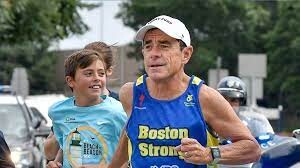
The weekend featured two other special moments for McGillivray. On Saturday, Team With A Vision inducted McGillivray into their hall of fame during a dinner at the Westin Copley Place. Team With A Vision pairs blind and sighted runners together to complete endurance races across the country. Their efforts support the Massachusetts Association for the Blind and Visually Impaired, which delivers professional, peer, and volunteer support to over 1,200 individuals each year, giving them the support they need to live with dignity and independence. All funds raised support MABVI’s statewide vision rehabilitation services, including 34 low-vision support groups, Assistive Technology and Training Centers, and 400 volunteers matched 1:1 with blind individuals.
In addition, McGillivray was a featured speaker during the Boston Marathon Expo, where World Marathon Challenge champion Becca Pizzi interviewed him about his long history with the race. He shared photos, videos and stories with the crowd, and signed copies of his books for attendees at the Dave McGillivray Finish Strong Foundation booth following the presentation.
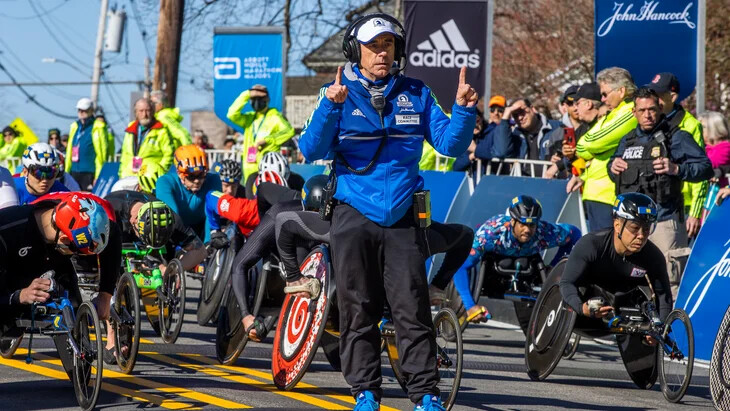
McGillivray is one of just a handful of runners who have marked half a century or more of completing the world’s most famous marathon. Alongside his rich connection to this race, his running resume includes completing the World Marathon Challenge (seven marathons in seven days on seven continents,) nine Ironman Triathlon World Championships, a 1,250-mile run along the U.S. East Coast in 1980 to again benefit the Jimmy Fund, a 24-hour run (120 miles,) a 24-hour bike (385 miles,) and a 24-hour swim (27 miles.) He triathloned around the six New England states by swimming one mile, biking 80 miles and running 20 miles every day for 32 consecutive days. Over the span of his life, he estimates he’s run more than 150,000 miles.
For more information on Dave McGillivray, visit www.davemcgillivray.com and follow him on Facebook, Instagram, LinkedIn and Twitter.
ABOUT DAVE MCGILLIVRAY
Running legend Dave McGillivray has increased the self-esteem of millions of people through his work as an entrepreneur, philanthropist, motivational speaker, author, and athlete. Dave is best known for his athletic feats including his 80-day trek across the United States, running the 3,452 miles from Medford, Ore., to Medford, Mass. in the summer of 1978 to benefit the Jimmy Fund. In addition, he’s received great acclaim for directing or consulting on more than 1,400 events throughout the world including the Boston Marathon, the Olympic Marathon trials, and the Olympic Games. For more information on Dave McGillivray, visit www.davemcgillivray.com and follow him on Facebook, Instagram, LinkedIn and Twitter.
(04/18/2023) ⚡AMPby Running USA
Boston Marathon
Among the nation’s oldest athletic clubs, the B.A.A. was established in 1887, and, in 1896, more than half of the U.S. Olympic Team at the first modern games was composed of B.A.A. club members. The Olympic Games provided the inspiration for the first Boston Marathon, which culminated the B.A.A. Games on April 19, 1897. John J. McDermott emerged from a...
more...Sara Hall set a new American master record in Boston
Sara Hall just set a new American Record in the Marathon for the Masters division.
Hall now 40 years old finished the Boston Marathon in 17th place in 2:25:48.She of course won her division.Old American record was 2:27:47 by Deena Kastor in 2015.


Boston Marathon
Among the nation’s oldest athletic clubs, the B.A.A. was established in 1887, and, in 1896, more than half of the U.S. Olympic Team at the first modern games was composed of B.A.A. club members. The Olympic Games provided the inspiration for the first Boston Marathon, which culminated the B.A.A. Games on April 19, 1897. John J. McDermott emerged from a...
more...How to set and achieve your running goals
If you want to improve in anything, you have to have an idea of where you’re going. Hence, the importance of setting goals. This is especially true with running. Without goals, it can be easy to avoid workouts, miles, and progress. Set a clear idea of what you want to accomplish, and you’re much more likely to get there.
In this article, we’ll cover everything that you need to know about goal setting as it relates to running, including why you should set goals, how to do it, and ways to achieve your running goals.
WHY YOU SHOULD SET RUNNING GOALS
What do you want out of running? For some, just getting out and running is enough. And that’s a 100% acceptable approach to running. For others, though, progress is a key motivator. If you are clear with yourself about what you want from running, it will be easier to stay on that path. Undertaking running mindlessly, without intention, is a recipe for finding yourself in a motivation-killing rut. This is why you should make goals.

First, goals give you something to achieve. Goals don’t have to be outlandish or newspaper-worthy. Set small, achievable goals. It could be as simple as you want to get outside and run at least a mile every day. It could be that you want to run three times a week. These are not ambitious, long-term goals like running a sub-3-hour marathon. But they still express why you run.
Second, goals will guide your training. If you want to run a mile every day, that’s a pretty clear training plan. However, you’ll have a completely different training plan if you want to run a sub-3-hour marathon.
Finally, goals can help motivate you to get out of your comfort zone. If you want to do something big, you have to change things up. Goals can help you do that because you now have an end in mind, and you just have to figure out the means to do it.
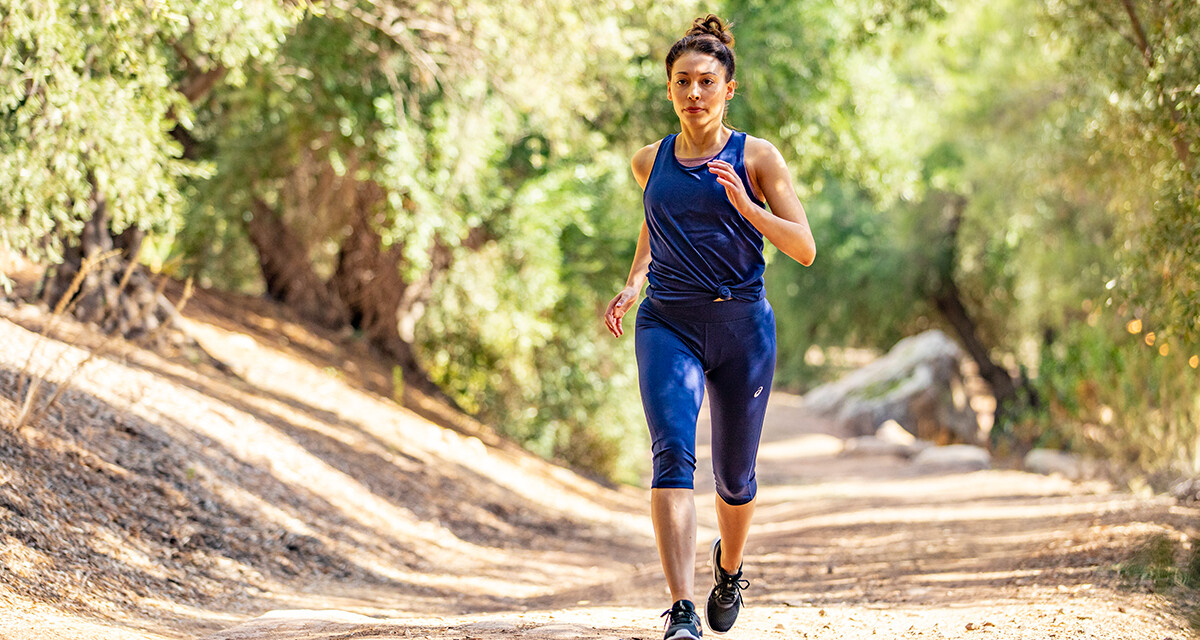
TYPES OF RUNNING GOALS
The most typical running goal is a race. So many people have decided that they want to get off the couch and run a 5k. Or they decide to hunt bigger game and commit to something that seems impossible at the time, like a marathon.
Sometimes it happens that people set a goal, sign up for a race, and then don’t follow through. But if you have support from friends and family, you’ll end up running the race like you planned.
The problem with this type of goal, though, is what about after the race is done? Now that you’ve run a marathon, are you going to keep running? That is something that you have to figure out for yourself.
I set a goal of running a half marathon. And I was successful! Afterwards, one of my friends encouraged me to not stop running there. He guided me to set new running goals as a new part of my lifestyle. His advice was sound.
If you don’t want to build goals around completing races, focus on something else that makes sense to your fitness journey. Set an ambitious pace goal. Try running for a longer distance, improving your running form, getting stronger running up hills. Goals can be as diverse as runner are. Even just being an overall more healthy person is an admirable goal to set.
Many experts suggest that process goals are better than outcome goals. In other words, running at least a mile every day is better than trying to run a 5:00 mile, for example.
The reason why is that you subconsciously tell yourself that you won’t be happy until you reach your outcome. Process goals are easy to reach as a matter of habit. Pretty much anyone can run a mile every day for a month, so success is very likely. Running a 5:00 mile on the other hand, while admirable, is very difficult to achieve. You might get all your workouts in, run everyday, and create a new habit in the process, while never actually reaching that performance mark.
But try running a mile every day and within several weeks, you’ll likely drop your mile time significantly. Plus, you’ll be putting less pressure on yourself to perform, and it will be more enjoyable. Win-win.
HOW TO MAKE SUCCESSFUL GOALS
If you want to be successful with your goals, you need to set SMART goals—SMART meaning specific, measurable, achievable, realistic/relevant, and time-bound. Many companies use this paradigm, and it works for running too.
SPECIFIC
Numbers are always a good way to be specific. For example, you could aim for running a 5k in under 30 minutes or running 10 miles in four weeks. If you want to do a process goal, you could say that you’ll run outside three times a week for at least 20 minutes each time.
You don’t have to use numbers, but you do want to make sure that you know when you have achieved your goal. For example, saying that you’ll run up a steep hill without walking is specific because you know when you have achieved it.
MEASURABLE
Just like being specific, a measurable goal helps you understand your goal, how to get there, and when you’ve achieved it. This means your goal should be linked to something tangible you can measure: a race, a distance, a time, a pace, a certain number of days, etc. Less effective are goals like “Get faster” or “Get healthier.” It’s hard to say when these goals have been achieved.
You should also come up with metrics to evaluate your goal because you need to be able to track your progress. If you want to run three days a week, are you running three days a week?
If you want to reach a certain pace, are you getting faster during your runs? It doesn’t have to be huge differences, but you need to know that you’re making progress. If you want to reach a certain distance, are you able to run farther?
ACHIEVABLE
This is probably the hardest aspect of goal-setting for runners. Make sure that you can reach your goal. It can be a stretch goal, but you don’t want to set the bar too high. If it’s too hard, you won’t achieve it. You might get frustrated and quit. If you can only run one mile right now, setting a goal to run 20 miles is likely to be frustrating. If you are running 12:00 miles, setting a goal to run a 5:00 mile is not the best next step. You may very well get to these points down the road. But you need some easier signposts along the way. Start with goals for running three miles, or a 10:00 mile, and then go from there.
This is the idea of breaking a longer-term goal down into smaller, less intimidating steps. If you’re a new runner and eventually want to run a marathon, start with other benchmarks that will set you on your way to the larger goal. For example:
Two-month goal: I want to run a sub-30 minute 5k. Four month goal: I want to run a sub-one hour 10k. Six month goal: I want to be able to run 10 miles. Eight month goal: I want to run a sub-2:30 half marathon. In ten months, I want to be able to run 20 miles. And in one year, I will run a marathon!
REALISTIC/RELEVANT
Your running goals need to be specific to you. Make sure that they match where you honestly are or could get. Aiming to join the U.S. Olympic team to run the marathon when your fastest pace is a 10:00-minute-mile is likely not realistic for you.
On the other hand, you don’t want to make it something too easy either. If you’ve already run a sub-2 hour half marathon, set a different goal this time like beating your previous record by PRing or feeling stronger at the end of the race.
It’s so easy to see race results, or statistics on social media and Strava that make you believe your goals should be set by other people’s performances. But ignore the noise. Run your own race, set your own goals, achieve your own results.
TIME-BOUND
You need to set a deadline. You could say that you want to run a 5k in less than 30 minutes, which you plan to achieve in two months. This gives you an end date—eight weeks—to know if you’ve met your goal.
Without a time frame, you may get distracted, lose motivation, or set new records for procrastination. Definitely give yourself the time you need to achieve your goals, especially reach ones, but don’t drag it out too long either.
HOW TO ACHIEVE YOUR GOALS
While having clear goals is extremely helpful in knowing the way forward, you do also have to take the next step. You won’t be able to reach your goals without work. Make sure that you’re willing to put in the work for your goal.
If you don’t really want to, then maybe consider setting a different goal that is better-suited to you. Just because other people want to run a marathon doesn’t mean that has to be your goal.
STAY CONSISTENT
The best thing you can do to meet your goals is to stay consistent. Write your runs into your calendar and keep them like you would a business meeting. They are important! Taking the time to write down what you’re going to do does make people more likely to achieve their goals.
Getting better at running is about doing it on a regular basis. This is why training plans are good. They lay out exactly what to do and when.
If you don’t have a training plan now, take the time to come up with one. Easier yet, find one. Garmin, Stava, MapMyRun, and other services all offer basic training plans for athletes of all levels. There’s a wide range of books on training out there as well. A plan will save you from doing it on the fly and being more likely to skip.
FOCUS ON THE PROCESS, NOT THE GOAL
Although this sounds counter-intuitive, it works like we hinted at above. If you focus on the steps to achieve your goal, meaning how you get to your goal, instead of the goal itself, you are more likely to reach it.
It’s about enjoying the journey and being grateful that you get to run and meet whatever goal you ultimately set for yourself. Whenever you do well at a race, it’s the race itself and the training leading up to it that makes crossing the finish line so exciting!
HOW TO DEAL WITH INJURIES
While it’s important not to slack off in working toward your goals, injuries are a different story. You need to be in tune with your body and pay attention to its needs. Cut back on training if you feel too fatigued or are experiencing unusual body pains—anything that may lead to injury.
It’s always a bummer to take a day or two off to rest, but you’re much better off doing it now as opposed to overexerting yourself and making the injury even worse, requiring you to take a week or more off of your training.
DON’T BE AFRAID TO FAIL
Finally, it’s important to get started. Even partially completing a big goal is doing more than just sitting on the couch. While setting a realistic goal is key, it’s also okay to set a goal that will be hard to achieve and come up slightly shy of meeting it.
If you fail, you can always try again. But at least you hit the ground running. Failure is how you can get better, because you can learn from your mistakes. Many new runners start off too quickly in the first mile of their races until they learn not to.
There’s a lot to be said for trying and failing. At least you were brave enough to try. You might want to set two goals. One that is your reach goal and one that is your still-hard-to-achieve-but-possible goal.
That’s what I did for running my first half marathon. I wanted a super-fast time for a beginner, but I gave myself a range of 15 minutes for a finish time. I got closer to the slower time than the faster time, but by pushing myself to the faster time, I was faster than I would have been otherwise.
CONCLUSION
Running is an amazing sport, and when you combine it with goal-setting, you can truly change your life. By setting realistic, but big goals, you’ll be able to give yourself a sense of accomplishment when you meet these goals and even exceed them!
I’d encourage you to get a pen and paper and write down some running goals as well as a training plan of how to get there, and then start. As they say, there is no better day than today! Good luck!
(04/18/2023) ⚡AMPby Rachel Basinger
Recovering Vincent Kipchumba out of London Marathon
Vincent Kipchumba may be down but certainly not out.
It has always been his dream to finally win the world's most prestigious marathon, but the 32-year-old distance runner will once again miss this year’s London Marathon scheduled for Sunday.
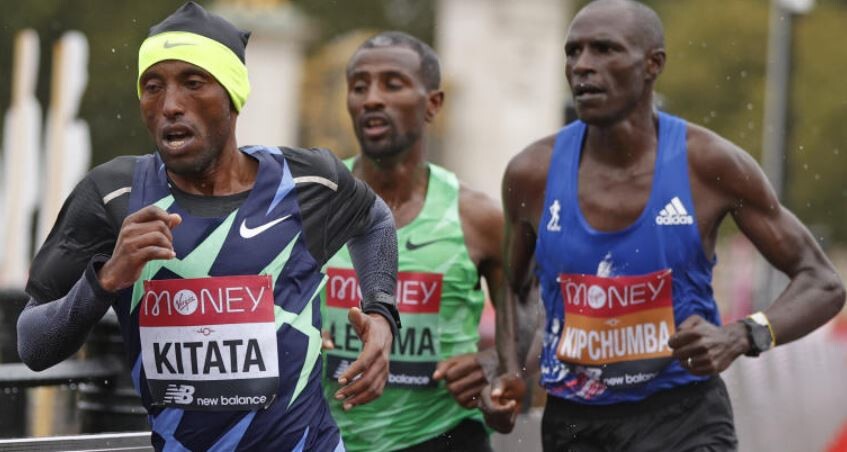
Kipchumba, who has finished second twice in the British capital, has revealed that he has just recovered from a knee injury, hence not ready for the grueling marathon.
This will be the second time Kipchumba is missing the London Marathon after a recurring leg frame injury knocked him out last year’s race.

It’s the same injury that also saw the Kapsabet-based distance runner withdraw from the delayed 2020 Tokyo Olympic Games held in August, 2021.
“I was preparing so well, having completely healed from the frame injury only to go down again with a knee injury this time round,” said Kipchumba.
“I was really determined not to finish second again in London but this is so frustrating.”
Kipchumba had made a return after 17 months to finish 14th at the Ras Al Khaimah Half Marathon on February 18 this year before the knee injury crept in.
Kipchumba made his World Marathon Majors (WMM) debut in London in 2020 where he clocked two hours, five minutes and 42 seconds to finish second, losing to Ethiopia’s Shura Kitala by 16 seconds in 2:05:58.
Kipchumba, 2019 Amsterdam and Vienna Marathon champion, would return to the British capital the following year where he improved his personal best to 2:04:28, but still settled second again behind another Ethiopian Sisay Lemma, who clocked 2:04:01.
It would be his last marathon race as he stayed out of action for the better part of last year, only making his first appearance at Ras Al Khaimah in February this year.
"I will not lose hope and I believe my time will come. I will one day win in London and also get to represent Kenya for the first time too. I want to heal properly first before I can plan my next race,"said Kipchumba, who is handled by Claudio Berardelli.
Kipchumba’s exit now leaves three Kenyan men in the race- defending champion Amos Kipruto, Kelvin Kiptum and Geoffrey Kamworor.
The race will for the first time in history have two men, who have run inside two hours and two minutes- Ethiopia’s Kenenisa Bekele, who is the second fastest man in marathon history with 2:01:41 and Kiptum (2:01:53).
(04/18/2023) ⚡AMPby Ayumba Ayodi
TCS London Marathon
The London Marathon was first run on March 29, 1981 and has been held in the spring of every year since 2010. It is sponsored by Virgin Money and was founded by the former Olympic champion and journalist Chris Brasher and Welsh athlete John Disley. It is organized by Hugh Brasher (son of Chris) as Race Director and Nick Bitel...
more...Eliud Kipchoge is human afterall
Eliud Kipchoge came to Boston seeking to add the world’s most storied annual marathon to his unrivaled trophy case. He will leave with a sixth-place result and questions about whether he can achieve two outstanding, unprecedented goals.
“I live for the moments where I get to challenge the limits,” was posted on Kipchoge’s social media four hours after he finished. “It’s never guaranteed, it’s never easy. Today was a tough day for me. I pushed myself as hard as I could but sometimes, we must accept that today wasn’t the day to push the barrier to a greater height.”

Kipchoge was dropped in the 19th mile in his Boston Marathon debut in the middle of the race’s famed hills. He finished 3 minutes, 29 seconds behind fellow Kenyan Evans Chebet, who clocked 2:05:54 and became the first male runner to repeat as Boston champion since 2008.
“I did not observe Kipchoge,” Chebet said of what happened, according to the Boston Athletic Association. “Eliud was not so much of a threat because the bottom line was that we trained well.”
It marked just Kipchoge’s third defeat in 18 career marathons, a decade-long career at 26.2 miles that’s included two world record-breaking runs and two Olympic gold medals.

Kipchoge, 38, hopes next year to become the first person to win three Olympic marathons, but major doubt was thrown on that Monday, along with his goal to win all six annual World Marathon Majors. Kipchoge has won four of the six, just missing Boston and New York City, a November marathon that he has never raced.He skipped his traditional spring marathon plan of racing London to go for the win in Boston, the world’s oldest annual marathon dating to 1897.
Kipchoge has yet to speak to media, but may be asked whether a failed water bottle grab just before he lost contact with a leading pack of five contributed to his first defeat since he placed eighth at the 2020 London Marathon. Boston’s weather on Monday, rainy, was similar to London in 2020.
Kipchoge’s only other 26.2-mile loss was when he was runner-up at his second career marathon in Berlin in 2013.
He is expected to race two more marathons before the Paris Games. Kipchoge will be nearly 40 come Paris, more than one year older than the oldest Olympic champion in any running event, according to Olympedia.org. Kenya has yet to name its three-man Olympic marathon team.
“In sports you win and you lose and there is always tomorrow to set a new challenge,” was posted on Kipchoge’s social media. “Excited for what’s ahead.”
Kenyan Hellen Obiri won Monday’s women’s race in 2:21:38, pulling away from Ethiopian Amane Beriso in the last mile.
Obiri, a two-time world champion and two-time Olympic medalist in the 5000m on the track, made her marathon debut in New York City last November with a sixth-place finish. She was a late add to the Boston field three weeks ago after initially eschewing a spring marathon.
“I didn’t want to come here, because my heart was somewhere else,” said Obiri, who is coached in Colorado by three-time U.S. Olympian Dathan Ritzenhein. “But, my coach said I should try and go to Boston.”
Emma Bates was the top American in fifth in the second-fastest Boston time for an American woman ever, consolidating her status as a favorite to make the three-woman Olympic team at next February’s trials in Orlando. Emily Sisson and Keira D’Amato, who traded the American marathon record last year, didn’t enter Boston.
“I expected myself to be in the top five,” said the 30-year-old Bates, who feels she can challenge Sisson’s American record of 2:18:29, if and when she next races on a flat course.
The next major marathon is London on Sunday, headlined by women’s world record holder Brigid Kosgei of Kenya, Tokyo Olympic champion Peres Jepchirchir of Kenya and Olympic 5000m and 10,000m champion Sifan Hassan of the Netherlands in her 26.2-mile debut.
(04/17/2023) ⚡AMPby Olympic Talk
Boston Marathon
Among the nation’s oldest athletic clubs, the B.A.A. was established in 1887, and, in 1896, more than half of the U.S. Olympic Team at the first modern games was composed of B.A.A. club members. The Olympic Games provided the inspiration for the first Boston Marathon, which culminated the B.A.A. Games on April 19, 1897. John J. McDermott emerged from a...
more...Evans Chebet successfully defended his title at the Boston Marathon and fellow Kenyan Hellen Obiri triumphed in the women’s race at the World Athletics Platinum Label road race on Monday
The big sub-plot of the race, however, was the performance of Eliud Kipchoge, who headed to Boston in the hopes of taking one step closer to completing his set of World Marathon Majors victories but trailed home in sixth place in 2:09:23, the slowest time of his glittering career and more than three minutes behind the winner.
But the day belonged to Chebet and Obiri, both of whom dropped their final opponents in the last few minutes of the race, winning in 2:05:54 and 2:21:38 respectively. Chebet’s mark is the third-fastest winning time ever recorded in the men’s race in Boston and Obiri’s performance is the fourth-fastest women’s winning mark.
Kipchoge looked comfortable in the early stages and was part of a lead pack of 11 men that passed through 10km in 28:52 before reaching the half-way point in 1:02:19.
Chebet and Kipchoge were still together in the lead group through 30km, reached in 1:29:23, but the double Olympic champion and world record-holder started to lose contact with the leaders just a minute or two later, having missed picking up his bottle at a water station.
At 35km, with 1:44:19 on the clock, the lead pack was down to five men – Chebet, 2021 Boston winner Benson Kipruto, Tanzanian record-holder Gabriel Geay, Kenya’s John Korir and Ethiopia’s Andualem Belay. Kipchoge, meanwhile, was more than a minute behind the leaders and no longer in contention for a podium spot.
Evans Chebet wins the 2023 Boston Marathon (© Getty Images)
With three miles to go, and Korir and Belay no longer in the running, the race was down to three men: Geay, Chebet and Kipruto. They ran together as a trio for the best part of two miles before Geay’s challenge eventually faded, leaving the Kenyan duo out in front. Chebet then gradually pulled ahead of his compatriot and training partner Kipruto, going on to cross the finish line in 2:05:54.
Geay recovered enough to pass Kipruto in the closing stages, claiming the runner-up spot in 2:06:04, two seconds ahead of Kipruto. 2021 New York winner Albert Korir finished strongly to take fourth place in 2:08:01 and Morocco’s Zouhair Talbi was fifth (2:08:35). Kipchoge followed a further 48 seconds in arrears.
“I train with Benson; he’s my friend and like a brother to me,” said Chebet, who became the sixth man to win back-to-back Boston titles. “With one kilometre to go, I said to him, ‘let’s go’.”Obiri wins in final mile thriller
Five months after making her marathon debut with a sixth-place finish in New York, two-time world 5000m champion Hellen Obiri triumphed in her second race over the classic distance.
In an incredibly close race that wasn’t decided until the final few minutes, Obiri disposed of one of the strongest women’s fields ever assembled for the Boston Marathon.
In contrast to the men’s race, the women’s contest started off at a cautiously steady pace and gradually picked up as the race went on. A large lead pack of more than 20 runners passed through 10km in 34:46, but they had been whittled down to 11 contenders by the half-way mark, reached in 1:11:29.
By this point, the lead pack still included Obiri, world marathon champion Gotytom Gebreslase, Ethiopian record-holder Amane Beriso, Amsterdam course record-holder Angela Tanui, 2020 Tokyo champion Lonah Salpeter, Eritrean record-holder Nazret Weldu and 2021 London champion Joyciline Jepkosgei.
Gebreslase and Weldu had fallen out of the pack with five miles to go, and the lead pack was reduced further to just six women at 23 miles: Obiri, Salpeter, Beriso, Jepkosgei, Ethiopia’s Ababel Yeshaneh and USA’s Emma Bates.
Jepkosgei and Bates started to fade in the last few miles, while Yeshaneh tripped and fell, only to rejoin the lead pack soon after. Salpeter was the next to fade, leaving just Obiri, Beriso and Yeshaneh to battle it out for the victory.
Hellen Obiri wins the 2023 Boston Marathon (© Getty Images)
With 2:17 on the clock, Obiri and Beriso had broken free from Yeshaneh. About 90 seconds later, Obiri embarked on a long drive for the finish line. With occasional glances over her shoulder, the Olympic silver medallist maintained a healthy gap ahead of Beriso and went on to finish in 2:21:38.
Beriso took second place in 2:21:50 and Salpeter overtook Yeshaneh in the closing stages to claim third place in 2:21:57, three seconds ahead of the Ethiopian. Bates was fifth in 2:22:10, making her the top US finisher in either of the races.
“I’m so happy,” said Obiri. “I was undecided about which marathon to do this year, but eventually I decided to do Boston. My coach (Dathen Ritzenhein) told me, ‘you have trained well, you’re ready to do Boston’. I’m very, very happy I chose to do it.”
Leading results
Women1 Hellen Obiri (KEN) 2:21:382 Amane Beriso (ETH) 2:21:503 Lonah Salpeter (ISR) 2:21:574 Ababel Yeshaneh (ETH) 2:22:005 Emma Bates (USA) 2:22:106 Nazret Weldu (ERI) 2:23:257 Angela Tanui (KEN) 2:24:128 Hiwot Gebremaryam (ETH) 2:24:30
Men1 Evans Chebet (KEN) 2:05:542 Gabriel Geay (TAN) 2:06:043 Benson Kipruto (KEN) 2:06:064 Albert Korir (KEN) 2:08:015 Zouhair Talbi (MAR) 2:08:356 Eliud Kipchoge (KEN) 2:09:237 Scott Fauble (USA) 2:09:448 Hassan Chahdi (FRA) 2:09:46
(04/17/2023) ⚡AMPby World Athletics
Boston Marathon
Among the nation’s oldest athletic clubs, the B.A.A. was established in 1887, and, in 1896, more than half of the U.S. Olympic Team at the first modern games was composed of B.A.A. club members. The Olympic Games provided the inspiration for the first Boston Marathon, which culminated the B.A.A. Games on April 19, 1897. John J. McDermott emerged from a...
more...Six Smart Pre-Workout Snacks
It can be tough to find the perfect pre-exercise food. You want something that’ll fuel your workout, but it also needs to be light enough that it won’t weigh you down. The ideal workout food is something that is low in calories, contains quality carbs, and is high in protein. Also, as you eat closer to your workout, you also want to have a lower fat and fiber intake. It's best to be consistent with the time between when you snack and then when you workout.
1.- Greek yogurt

Fat-free plain Greek yogurt is the ultimate exercise snack: tons of protein (twice as much as regular yogurt), super filling without being heavy, and it's easy to eat on-the-go. There are plenty of brands that make perfectly portioned 100-calorie containers.
If you find the taste of plain Greek yogurt a little too tart, mix in a packet of natural no-calorie sweetener (like Truvia), some raspberries and blueberries, or some low-sugar preserves. For some healthy fats that’ll kick your workout into high gear, add a few almonds!

2.- Banana
One perfect pre-workout food comes straight from Mother Nature: the banana.
A medium-sized banana has just about 100 calories, 27g carbs, and almost no fat.1 It is best to consume a banana 30-60 minutes before a workout.
Bananas have enough calories to quiet your hungry stomach for the duration of a workout, and just enough carbs to keep you energized. Plus, it comes in its own container. Can't beat that! (And no, bananas themselves won't cause weight gain).
3.- Delicious Style smoothie
Smoothies definitely have the potential to be a nutritious light snack, but you should be extra careful with them—they can be packed with way too many sugary calories. Your best bet is to DIY your own low-calorie smoothie. Stick with skim cow's milk (or your favorite unsweetened soy milk), unsweetened frozen fruits, and fat-free Greek yogurt.
Aim for 150 calories. This way, the smoothie will energize you for your workout without leading to a sugar crash later in the day. If you are planning a harder workout lasting more than 60-90 minutes, more carbohydrates may be needed, especially if it is a cardio workout.
4.- Oatmeal
Oatmeal is chock-full of quality carbs and it’s so satisfying. It’s an especially good choice if you want to eat a full breakfast before a mid-morning workout. A popular way to cook oatmeal is to make a bowl of “growing oatmeal.” That's one serving of old-fashioned oats cooked for twice as long and with double the liquid. The result? A super-sized portion! Just give yourself some time to digest it before you lace up your sneakers.
5.- Snack Bars With Protein
Need something fast, easy, and shelf-stable? Snack bars are for you. But not so fast! Not all snack bars are created equal. For pre-workout purposes, you want a carbohydrate and protein bar with less than 200 calories and a fair amount of protein that will help rebuild muscles as you work out. And watch out for fat. Certain snack bars pack are surprisingly high in fat.
6.- Apple With Light Cheese
An all-time favorite snacks is a Fuji apple with a wheel of Mini Babybel cheese, and it just so happens that it’s also the perfect fuel for exercise.
Apples have just enough calories and carbs to keep your energy up, and Mini Babybel cheese adds a bit of protein and extra flavor.
Together, apples and cheese add up to a satisfying snack with under 200 calories. Sweet!
(04/17/2023) ⚡AMPby Lisa Lillien
Bashir Abdi regains Rotterdam Marathon title
World and Olympic bronze medalist Bashir Abdi notched up his second Rotterdam Marathon victory, winning the World Athletics Gold Label road race in 2:03:47 on Sunday (16).
The Belgian’s winning time was just 11 seconds shy of the European and course record he set when winning in the Dutch city two years ago. He was pushed all the way by Kenya’s Timothy Kiplagat, who finished second in 2:03:50, a PB by 90 seconds.
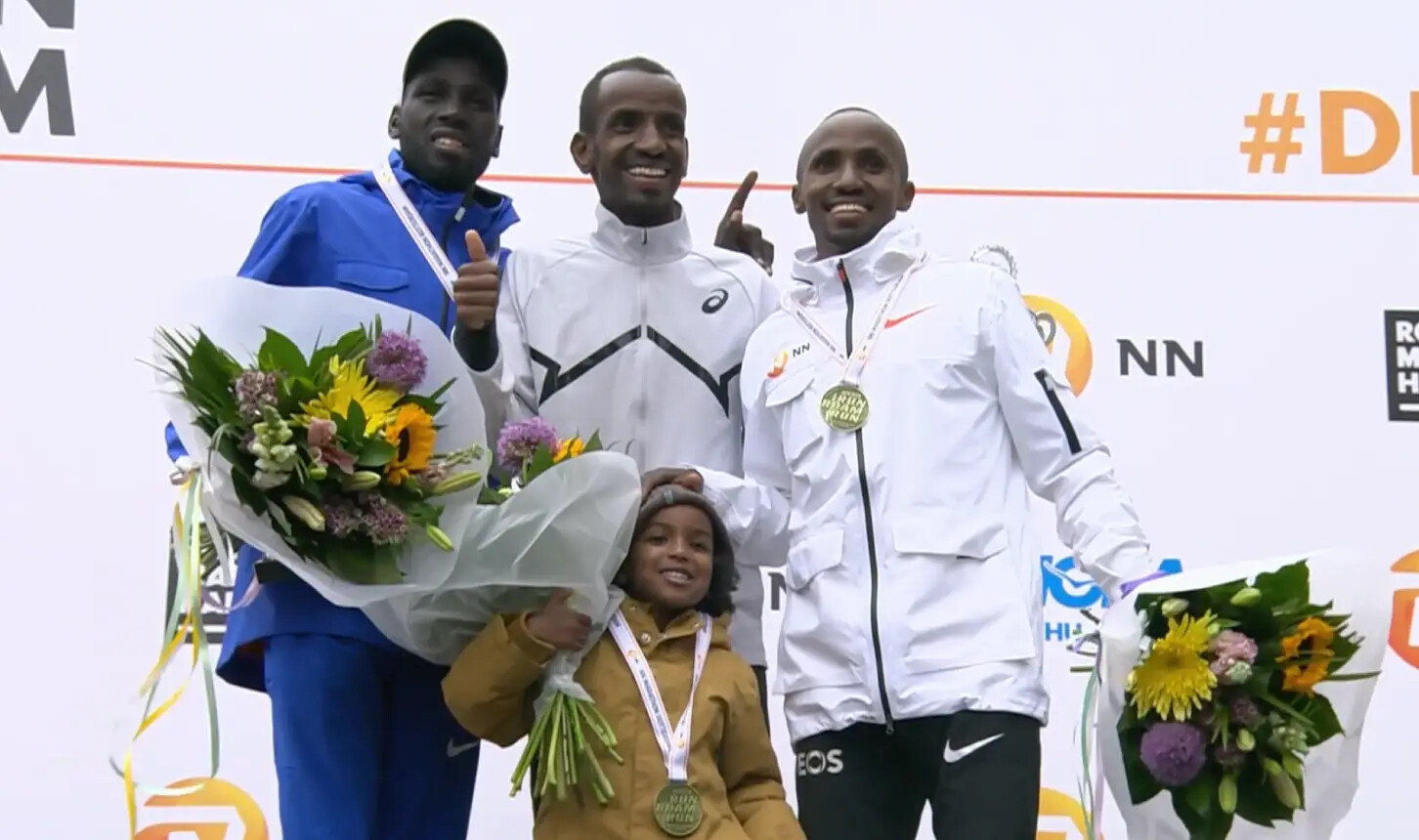
Eunice Chumba, meanwhile, won the women’s race by more than a minute in 2:20:31 – the second-fastest time ever recorded in the women’s race in Rotterdam. She also became the first athlete from Bahrain to win this race.
In the men’s race, a large group passed through 10km in a steady 29:29 before reaching the half-way point in 1:02:15. Abdi and Kiplagat were among the leading pack, as was defending champion Abdi Nageeye and Ethiopian duo Dawit Wolde and Chala Regasa.
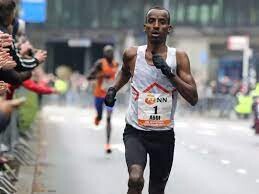
The pace picked up between 25km and 30km, with that segment covered in 14:38, and the lead pack had been reduced to five men, which still included Kiplagat, Wolde and Abdi. Kiplagat and Abdi continued to push the pace and they broke away from the last of their pursuers with just under 10km remaining.
In the closing stages, Abdi finally opened up a gap on Kiplagat and went on to cross the line in 2:03:47 with Kipagat following three seconds later. Olympic silver medalist Nageeye was third in 2:05:32 and Wolde was fourth (2:05:46).
“I’m very happy that I won again in Rotterdam," said Abdi. "The weather conditions were not ideal and the pace changed quite a bit, but I ran my second fastest time ever.”
In the women’s race, Chumba had just three other women for company – Kenya’s Pascalia Jepkosgei, Ethiopia’s Meseret Gebre and Eritrea’s Dolshi Tesfu – as she passed through 10km in 32:33.
Chumba, Gebre and Tesfu reached the half-way point in 1:08:43, well inside the pace required to break the course record of 2:18:58 set 11 years ago by 2012 Olympic champion Tiki Gelana, who was also in this race.
Tesfu and Chumba continued to run together up until 35km, reached in 1:55:50, but Chumba then started to open up a bit of a gap on her rival in the final few kilometers. The Bahraini record-holder went on to win in 2:20:31, just 29 seconds shy of her PB and her third sub-2:21 clocking within 12 months. Tesfu was second in 2:21:35.
Chumba’s compatriot Rose Chelimo, the 2017 world champion, made her way through the field in the second half of the race to place third in 2:26:21. Gelana, meanwhile, finished sixth in 2:27:19, her fastest time in eight years.
Over on the other side of the Netherlands, Alfred Barkach and Shyline Toroitich scored a Kenyan double at the Enschede Marathon, a World Athletics Label road race.
Barkach, who was making his marathon debut, won the men’s race in 2:08:50 from compatriot Bernard Kipyego (2:09:13). Toroitich, meanwhile, was a comfortable winner of the women’s race in 2:22:43 from Uganda’s Mercyline Chelangat (2:24:09).
(04/17/2023) ⚡AMPby World Athletics
NN Rotterdam Marathon
The marathon has been the biggest one-day sporting event in the Netherlands for many years in a row with over 35000 athletes professionals inclusive. The world's top athletes will at the start on the bustling coolsingel, alongside thousands of other runners who will also triumph,each in their own way.The marathon weekend is a wonderful blend of top sport and festival. ...
more...Ben Flanagan shatters Canadian record at B.A.A. 5K
For the second year in a row, the men’s Canadian 5K record was shattered at the B.A.A. 5K in Boston. Ben Flanagan of Kitchener, Ont., placed second in the race and broke the previous Canadian record by ten seconds in 13:26.
There was a lot of buzz around the Canadian 5K record heading into Saturday’s race, with Charles Philibert-Thiboutot of Quebec City coming in as the national record holder and defending B.A.A. 5K champion, while Flanagan came into the race as the reigning Canadian 5K champion, holding the second-fastest 5K time in Canadian history.
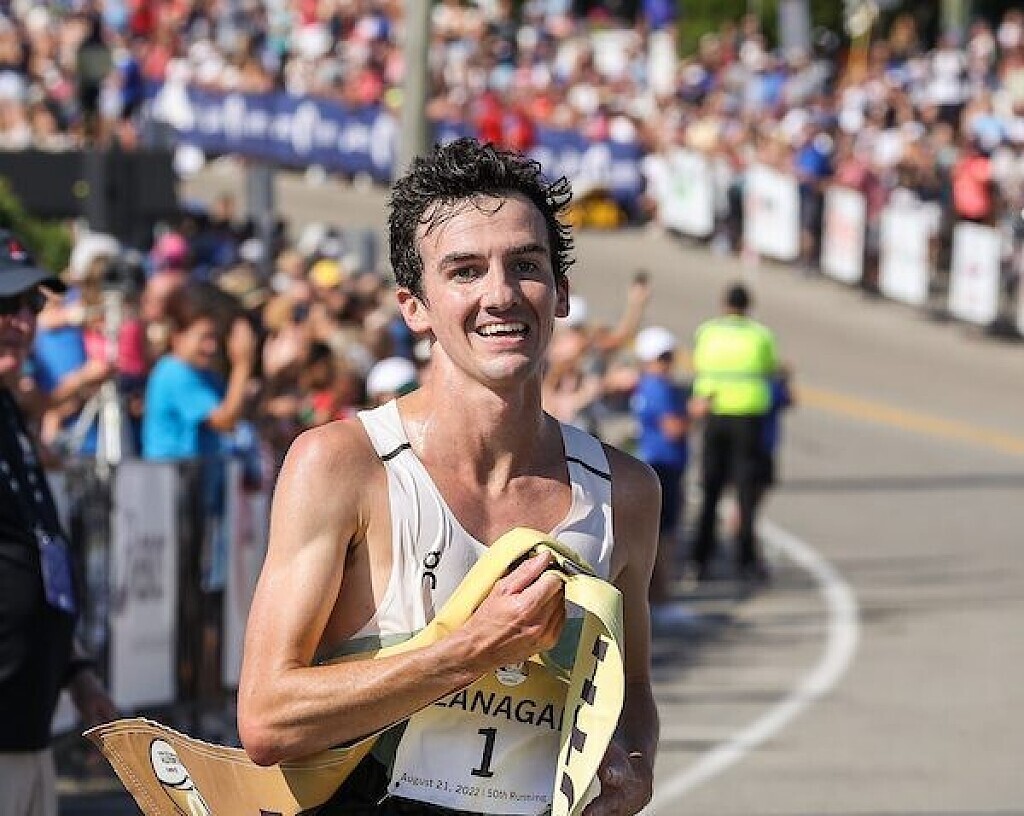
The men’s elite race got out quickly, going through the first mile in four minutes and 12 seconds (13:00-flat pace). Flanagan and Philibert-Thiboutot found themselves in the chase pack after Ethiopia’s Tsegay Kidanu was off to an early lead. Philibert-Thiboutot drove the chase pack to catch Kidanu at the 3K point.
In the final mile, a large pack of 15 runners was still in contention, lining up for a sprint finish on Charles St. through the Boston Common. Flanagan made a move with his Very Nice Track Club training partner, U.S. miler Morgan Beadlescomb,with 300 metres to go, and held on to finish second behind Beadlescomb in 13:26. Kenya’s Edwin Kurgat finished third in 13:27.

Flanagan took a glance over his shoulder with one mile to go and couldn’t believe how many guys were in the lead group. “When Morgan made his move, I knew I had to keep myself close to him,” says Flanagan. “He and Charles are 1,500m guys, so you know they are explosive.”
“The race was awesome,” says Flanagan. “Even though I ran there four years ago, it well exceeded my expectations.”
This 5K record is the third Canadian road record Flanagan has broken in the last 12 months. Last June, he broke the long-standing Canadian 10K record at the B.A.A. 10K in Boston, finishing fourth in 28:11. Four months later, he ran the Canadian half-marathon record of 61-flat, beating Cam Levins by four seconds at the Valencia Half Marathon. Levins later took the half-marathon record back, running 60:18 at the Vancouver First Half in February.
“My goal is to make a world’s team,” says Flanagan. “It annoys me that I haven’t been able to do it yet.”
Flanagan and Philibert-Thiboutot will head back to the track to chase the 2023 world championships 5,000m standard of 13:07:00 at the Sound Running Invitational in Los Angeles on May 6.
Canada’s Julie-Anne Staehli finished 13th in the women’s 5K, in 15:50. The 2022 world championship steeplechase bronze medallist, Mekides Abebe of Ethiopia, won the women’s race in a sprint finish ahead of Kenya’s Agnes Ngetich, in 15:01. American Annie Rodenfels of Boston finished third in 15:12.
(04/17/2023) ⚡AMPB.A.A. 5K
The B.A.A. 5K began in 2009, and became an instant hit among runners from far and wide. Viewed by many as the “calm before the storm,” the Sunday of Marathon weekend traditionally was for shopping, loading up on carbohydrates at the pasta dinner, and most importantly- resting. But now, runners of shorter distances, and even a few marathoners looking for...
more...Eilish McColgan has had a spectacular year and now she has her sights set on competing at the Olympics in the marathon but she has not run a marathon yet
After three decades immersed in athletics, there are not too many times now when Eilish McColgan is stepping into the unknown.
Next Sunday, however, will be one of those unusual occasions when she stands on the start line not knowing quite what to expect as she will make her marathon debut in London.

For all the thousands upon thousands of miles she has run in training over the years, she is treading new ground.
“I’ve never run 26 miles,” she says. “I don’t actually know many athletes who do the full distance in training.
“We coach amateur runners and we advise not to do more than 22 miles in training and that’s what I’ve been doing myself. There is the mental aspect of can you actually get round 26 miles? But I’ve done 22-mile runs and I had no doubt at the end of them I could have run another four-mile loop. So it’s not so much the distance for me that will be tough, it’s going to be the pace of it.
“There’s a big difference between a long run and a hard, hard effort for that long. So for me, that’s what’s unknown and not something I’ve particularly tested in training.
“I think that’s something that only comes with the experience of racing.”
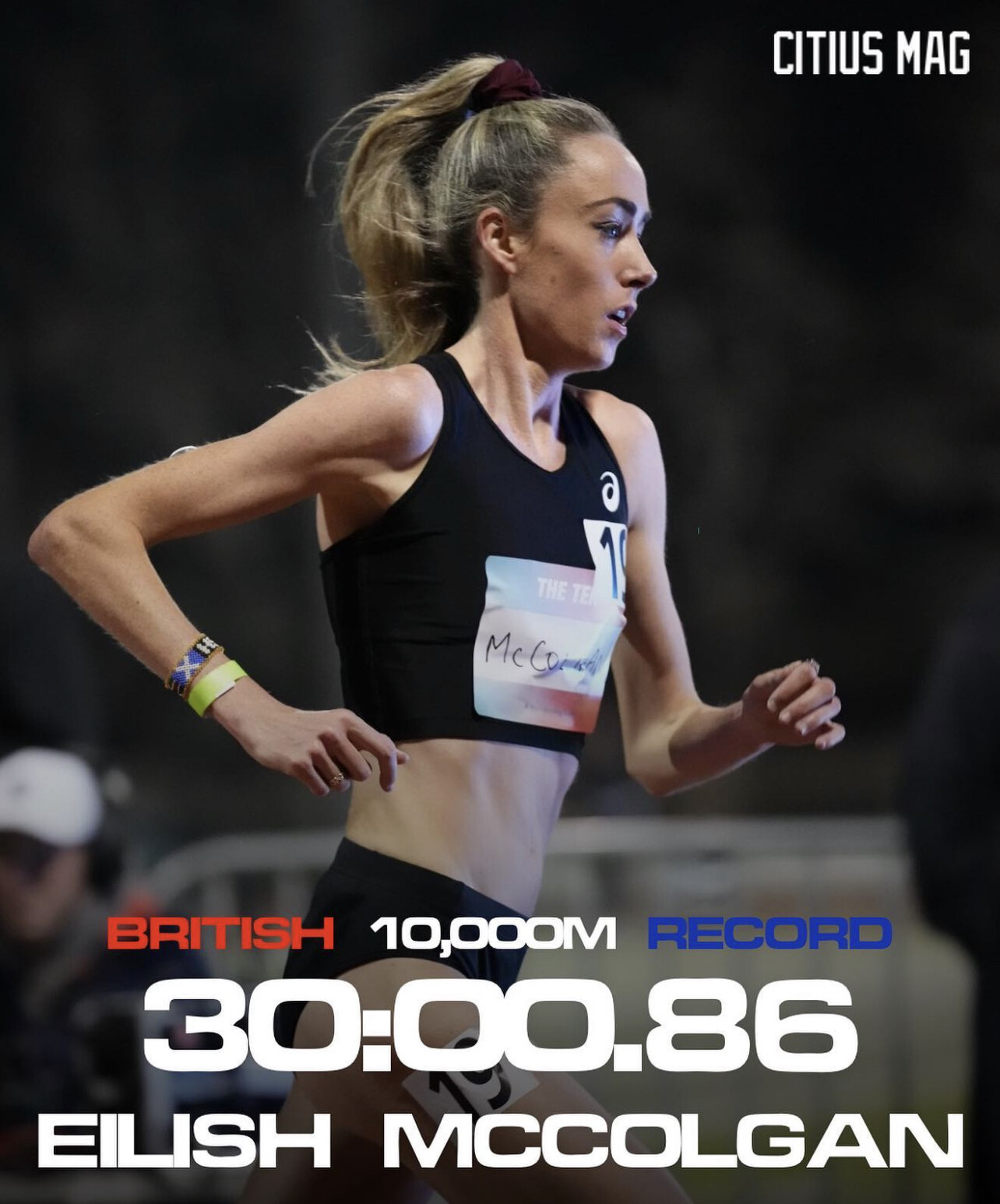
McColgan is certainly not easing herself in gently. London boasts the strongest women’s marathon field ever assembled with defending champion and world 10k record holder Yalemzerf Yehualaw, marathon world record holder Brigid Kosgei and Olympic champion Peres Jepchirchir all going to be on the start line.
However, with the 32-year-old from Dundee having had the year of her life over the past 12 months, she could not be in a better frame of mind.
McColgan has been on the international scene since 2012, when she competed in her first Olympic Games, but it was in 2022 that she really grabbed the spotlight.
Commonwealth gold in the 10,000m in Birmingham was the most memorable of her performances, but that win was accompanied by a raft of Scottish, British and European records both on the track and on the road.
McColgan has continued her sparkling form into 2023, with her opening appearance of the year a run over 10,000m of 30 minutes 0.86 seconds, breaking Paula Radcliffe’s long-standing national record and smashing her own personal best by 19 seconds.
That was followed by a win at the Berlin Half Marathon two weeks ago in yet another British record and McColgan admits that despite the trepidation that is certainly present about running her first marathon, she is in a confident mood.
“I’m really pleased with my runs. To have come away with British records and such big PBs, I was really happy,” she says. “It’s given me quite a lot of confidence knowing that the training I’m doing is really suited to me.
“I know for sure I can run a good 5k, a good 10k and a good half marathon so now the question is whether or not I can run a good marathon because it’s something I’ve never done. I’m certainly in a better place to run the marathon now than I ever have been but how I actually cope with it, we won’t know till race day.”
The one, and perhaps only, down side of McColgan’s spectacular year is that expectations from observers are now sky-high regarding what she is likely to achieve in London.
However, McColgan is far too pragmatic and too experienced to expect anything spectacular and instead, she sees next weekend’s race as the start of her marathon journey which will, she hopes, lead to the start line of the Olympic marathon in Paris next summer.
“This first marathon is about getting the experience of it,” she says. “I’m in a much stronger position than I’ve ever been and so I’ve given myself the best opportunity to run a good marathon but there’s a lot of things that come into play on the day with regard to the mental side of it, the physical side of covering that sort of distance at that fast pace and the fuelling side of things to make sure I don’t hit the wall.
“There’s a lot more elements that come into a marathon than do on the track or on the shorter road races.
“I know other people maybe expect me to go to London and be competitive but that’s not realistic.
“I’m going into the best marathon field that’s ever been assembled so I have to be realistic with what I can achieve within that. I’m certainly not going in there to win.”
McColgan may not be targeting a podium place but she is not lacking goals for the race.
With the 2024 Olympic Games already in her mind, qualification for Paris is of primary importance – and ideally sooner rather than later – but she also has her mum, Liz’s, one remaining time that is faster than her in her sights over those 26.1 miles in London.
“I have a few goals for London,” she says. “Firstly, I want to get round in one piece. That’s my No.1 goal – to get round and feel like yes, I want to do the marathon at the Paris Olympics,” she says.
“Secondly, this is the final PB that my mum still has of 2 hours 26 mins. Steph Twell took her Scottish record a couple of years ago when she ran 2:25 so I have that in my head as a time target.
“I do feel I’m capable of running faster than my mum and getting that Scottish record and it’d be a triple-whammy because it’d be a qualifying time for the Paris Olympics too.
“I’d like to be competitive against the British girls and if I can do that, I think I can knock those three goals off in the process.
“If I can achieve all my personal goals, that’d be a good day for me.”
(04/16/2023) ⚡AMPby Susan Egelstaff
TCS London Marathon
The London Marathon was first run on March 29, 1981 and has been held in the spring of every year since 2010. It is sponsored by Virgin Money and was founded by the former Olympic champion and journalist Chris Brasher and Welsh athlete John Disley. It is organized by Hugh Brasher (son of Chris) as Race Director and Nick Bitel...
more...Most People Get Slower with Age. But Is That Inevitable?
Recently, while sifting through some of the excruciatingly detailed performance data he'd collected over decades as a Colorado-based triathlon coach, Alan Couzens noticed a pleasing symmetry. All else being equal, the amount of aerobic fitness his athletes lost by getting a year older was almost identical to the amount they gained by adding an hour per month of training time. Want to freeze the biological clock from one birthday to the next? Find a spare 15 minutes per week and fill it with running.
The long-haul practicality of this approach is debatable: after a decade, that additional training time would total 2.5 hours a week. But the underlying premise of what we might call the Couzens Immortality Quotient taps into a fertile area of debate. How much of the aging process is an inevitable slide into decrepitude, and how much is a result of not getting enough exercise?

That's the question Johannes Burtscher of the University of Lausanne, along with colleagues in Switzerland and Austria, posed recently in the International Journal of Environmental Research and Public Health. By pooling the results of more than a dozen studies, the group reached an encouraging, quantifiable conclusion: only about half of the fitness losses suffered by endurance athletes as they get older are attributable to the passage of time. The other half can be chalked up to reduced training.
The standard gauge of aerobic fitness is VO2 max, which measures how quickly you're able to breathe oxygen into your lungs, pump it through your arteries, and use it to help fuel muscle contraction. It's expressed in milliliters of oxygen per kilogram of body weight per minute, and in young adults it typically hovers somewhere in the forties. After age 25, it declines by about 10 percent each decade, dropping more quickly in your sixties and seventies. Among endurance athletes, the numbers aren't so predictable. Some studies find losses of 5 percent per decade; others as much as 46 percent. What accounts for the difference? The extent to which you continue training as you get older. After all, the fitter you are, the more you stand to lose.
The effects of ceasing training entirely seem to be similar in athletes of all ages. Your VO2 max begins to plummet within a few days of stopping exercise, and you might lose as much as 20 percent after 12 weeks. These losses are explained mostly by changes in how much blood your heart can pump with each beat; the good news is that the trend can be reversed fairly quickly when training is resumed. Other age-related changes, such as stiffening arteries, occur more slowly and are harder to undo.
How much of aging is an inevitable slide into decrepitude, and how much is a result of not getting enough exercise?
When Burtscher and his colleagues ran the numbers, they found that 54 percent of the variation in fitness loss by male endurance athletes was explained by differences in how much they trained. That number in women was 39 percent, but the scarcity of data for female subjects makes it impossible to tell whether there's a real physiological difference between the sexes. Overall, the data fits with the observation that athletes who keep training at a fairly constant level over the years lose about 5 percent per decade-half as much as the typical nonathlete.
There are a couple of key questions raised by these findings. The first one: If you miss a year, or a decade, can you get back to where you were? Or is some of that fitness lost forever? There's no research to suggest a solid answer, according to Gregoire Millet, one of Burtscher's colleagues at the University of Lausanne. It probably depends to some degree on how much you trained prior to stopping, and for how long. The risk upon resuming would be that your bones and connective tissue are no longer prepared to handle a heavy load, making you more susceptible to injury.
Still, there are some encouraging hints in the literature. In 2020, researchers published lab data on Tommy Hughes, an Irish man who'd recently run an eye-popping 2:27 marathon at age 59. Hughes's VO2 max was 65.4, more than twice what you'd expect from a largely sedentary man his age. Not surprisingly, Hughes was a former elite marathoner; he competed at the Barcelona Olympics in 1992. But he'd taken a 16-year break from running, starting again at the age of 48. We can't know for sure if that pause hurt him-if it did, it couldn't have been by much, given that he currently holds the world marathon record for the 60-to-64 age group, at 2:30:02.
The other question is how to maintain your training level as the years pass. We all have good intentions, but real life rarely resembles the smooth aging curve that results from graphing the average data from large groups of people. Instead, there are plateaus and gentle declines punctuated by steep drops-you break a leg, your first kid is born, you become addicted to social media, and so on. Avoiding periods of rapid decline goes a long way toward slowing the overall slide.
Another superstar case study, this one published in 2022 by a team led by Bas Van Hooren of Maastricht University in the Netherlands, illustrates the benefits of consistency. A 75-year-old middle-distance runner named Hans Smeets, who holds multiple European and world age-group records, had clocked a VO2 max of 50.5, equal to the highest known measurement for his age. Smeets only began running at 50, further evidence that it's never too late to start (or start again). And once he'd begun, he kept going. Over the next 25 years, he never missed more than a week of training. Initially, he ran more than 85 miles per week, and at 75 he was still logging as many as 50. He attributed his ability to handle all that mileage without injury to doing most of his runs at, in his words, "an easy pace."
That, as it turns out, aligns perfectly with Couzens's view about what's required for long-term athletic success: lots of low-intensity exercise. To be sure, the idea of adding an hour of training per month every year to ward off the effects of aging sounds suspiciously like an endurance version of the legend of Milo of Croton, the ancient Olympian wrestler said to have lifted a calf over his head every day until it was a full-grown bull. In both cases, each step in the process seems simple, but the result is nonetheless improbable, let's call it.
Yet, as an aspiration, or simply as a formulation of what's possible, the Couzens Immortality Quotient tells us the same thing as the examples of Tommy Hughes and Hans Smeets, and as Johannes Burtscher's meta-analysis. You don't train less because you're getting old; you get old, to a surprising extent, because skipping that long Sunday run with your pals becomes a habit instead of a rare exception. Don't do it.
(04/16/2023) ⚡AMPYoga for staying calm
Embrace the present moment & stay present in the storm. Acceptance fosters wellbeing & mindfulness. Here are 6 Yoga tools to help you stay present!
If there’s anything we have learned from the past few years, it’s that life is going to continue to provide us with challenges. Just when we think the storm has passed and we are ready to sail in optimal conditions, the weather seems to turn and keep us on our toes. The relentlessness of the continually changing weather and stormy skies can be overwhelming and exhausting. It’s understandable why we begin to check out, close our eyes and just want to wake up when it’s all over.
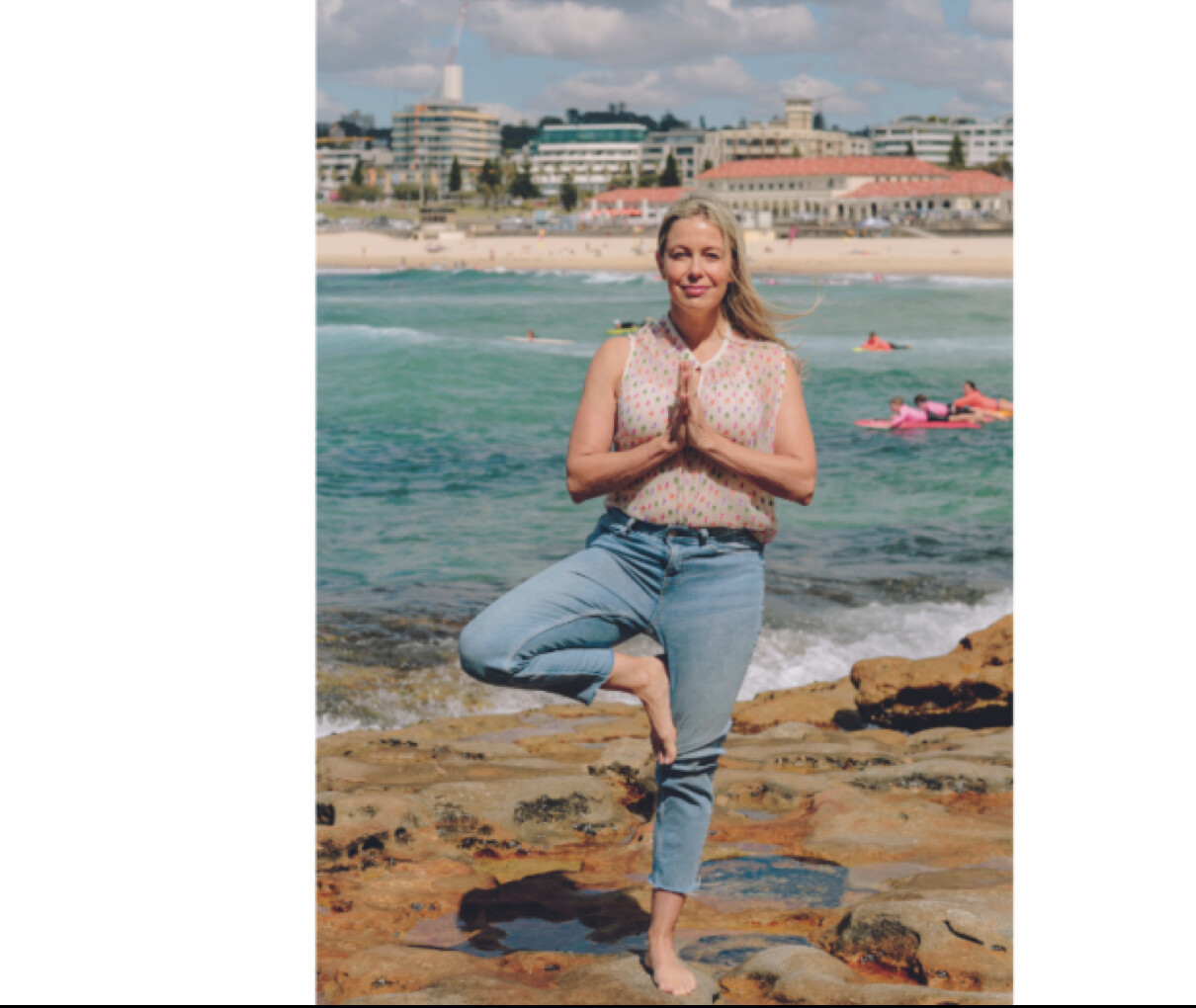
This approach can offer us short-term peace by escaping the discomfort of what is. However, in the longer run, there are benefits in staying completely present in the storm as we learn acceptance and embrace the opportunity to grow from every experience.
The power of atha
The first word of Patanjali’s Yoga Sutras is “atha” or now. It is an auspicious word, with some teachers suggesting that if you really understood what atha means, you would understand everything and reach a state of yoga or liberation. Practising mindfulness, which Jon Kabat Zinn defines as “paying attention, on purpose, in the present moment, non-judgementally”, is the key to staying in the “now”, no matter what is going on.
The non-judgement part can be particularly tricky to practise. Seeing our experiences as they are, without putting any kind of lens on them, framing them as good or bad, allows us to foster more acceptance in our lives.
The power of acceptance
“Accept, then act. Whatever the present moment contains, accept it as if you had chosen it. Always work with it, not against it.” ~ Eckhart Tolle
Acceptance of all our experiences, regardless of how stormy or calm they are, has been shown to positively affect our overall wellbeing. In one particular study, individuals who accepted rather than judged their mental experiences appeared to attain better psychological health, and less reactivity to stressors. Other studies suggested acceptance reduced feelings of shame, guilt, anxiety and distress.
Acceptance allows us to get on with the task at hand, and do what we need to do, instead of putting energy into worry and fear. As my teacher David Life used to say, “So what, now what?”
Escaping the storm
Most of us are constantly trying to avoid our current experience. We walk into a room that is too cold, and we turn the heat on; when it gets too warm, we open the windows and take our coat off, forever trying to escape whatever discomfort we feel. Inevitably, though, at some point we will be thrust into a situation where we can no longer control the temperature or the weather, and there is no escape. As the storm rages, without any skills to keep us awake, to simply be in the experience, we struggle to stay afloat.
All manner of addictions arise from this moment, of grasping and craving, clinging to something that helps us evade the reality of the battering of our boats in the tempest.
How to stay present
The yoga practice provides us with many tools to help us stay present and observe whatever is arising.
The asana shows us how to dive into poses and stay steady regardless of discomfort and strong sensation. It allows us to practise breathing calmly and being steady, staying in a posture, when we’d really prefer to run.
Concentration on the breath, in pranayama practices, is very powerful at quietening the mind and bringing us directly into the present. It also teaches us the transient nature of our experience, how it is ever-moving, in motion, traversing the cycles of beginning, middle and end, over and over.
We learn through pranayama, watching, controlling and freeing the breath about the changing nature of things at a very primal, cellular level. And it shows us how every new breath is a chance to start again, that the newness, the freshness of each inhale and exhale is a different experience. Whatever storms we are in will pass at some point, giving way to something new.
Meditation shows us how our thoughts come and go, jumping around and as changeable as the weather. Being reminded of the physical and mental layers that this too shall pass, for better or worse, is a great way to practically work with stepping into the present, accepting what is and trusting it will pass eventually.
Drishti, or a focus point, is another tool we can use to train the mind to concentrate. It is through concentration, or dharana, we place the mind at one thing at a time, which allows us to be present and available to see what’s in front of us.
Non-attachment
In the Yoga Sutra 1.2, “Yogash [union] citta [mind] vritti [whirlings] nirodha [to cease/get rid of]” is sometimes translated as “Yoga is when the mind stops.” But in that case, the party is over. When our minds stop, we don’t get to experience anything, let alone yoga. My teacher Manorama D’Alvia speaks to it from the perspective of not attaching to the rotational movements of the mind, or the vrittis. If nirodha is to stop or cease, and we think of citta as the ocean of the mind with the vrittis as the waves or thought patterns, yoga is when we stop attaching the chaos of the surf. We identify less with the individual waves, and see that we are the ocean, vast and deep.
Then no matter what storm is raging, we are always connected to that deeper oceanic part of ourselves, which isn’t so affected by the individual movements and tides; after all, the weather changes, but the ocean is always there, seemingly limitless and rich.
Pratyahara
Because the nature of the world is designed to steal our attention, our energy constantly moves outwards through the senses. As we practise withdrawal of the senses, pulling them back inwards towards us in times of crisis and challenge, we preserve our energy which will be required to take skilful action in whatever stormy situation we are in. We cannot steer the boat across immense waves if we are not paying attention, concentrating, making intelligent choices, and have the energy to do so. Using our practice to harness our ability to draw the senses inwards will make it easier in those moments that feel tougher to do so, when the lightning and thunder feel overpowering. As D’Alvia says, you don’t need to practise every day, but there will come a time when you will be grateful you practised every day.
The more we practise when the skies are calm, the more we will be prepared and ready when we need a yogic mind in those turbulent times.
What being present does for us
When we pay attention to what is happening in front of us, with acceptance, a calm mind, free from judgement, we see things as they really are. Instead of operating from a place of fear, or projecting into the past or future, we wipe the lenses clean and can see clearly — not from
a place of denial or overwhelm, rather the stance of a warrior on the battlefield, like Arjuna in the Bhagavadgita. Just as he had to accept his role in fighting a battle he didn’t want, we may find ourselves in blustery conditions we don’t want to be part of. When we have a yogic mind, we can face those moments; we can do what must be done with a clear mind and steady hand.
Turbulent times as a teacher
The greatest gift of all, however, from staying with eyes wide open in the tempest, is that we can use the experience as a teacher. Moments of great joy are bolstering and fortify our spirit. But the obstacles and storms of life are where the greatest learning is. Use those moments as a teacher and no experience shall go to waste; rather they will enhance our life, showing where we are stuck, where we need to grow and how much further we can travel in terms of kindness, compassion and empathy for self and others.
Chaos to calm yoga practice
This practice is designed to foster presence through some of the tools suggested above, as well as some balancing poses which require our steadiness, drishti and concentration.
Pratyahara
Choose a comfortable seat and listen to the sounds around you. Start to pull your senses inwards. Close the eyes. Relax the jaw and let the tongue drop away from the palate. Observe any taste on your tongue. Take in the smells around you.
Feel what sensations you can especially on the hands and fingers. Listen to the sounds around you. Keep your awareness on the senses in this way, not letting them move out, gathering stimulation
or escaping this present moment.
Meditation
Keep sitting. Notice any thoughts that start to arise. Let them bubble up, feel them, experience them, accept them and let them move on. Keep noticing your senses, physical sensations, taste, the dark behind the eyelids, the sounds, the smells. As you do, keep allowing thoughts and feelings to come up, accepting them and letting them go. Stay aware, completely in the present moment.
(04/16/2023) ⚡AMPAlfred, Wilson and Lyles secure double success in Florida
Julien Alfred, Britton Wilson and Noah Lyles each started their seasons with winning doubles at the Tom Jones Memorial in Gainesville, Florida.
Commonwealth 100m silver medallist Alfred improved to a 21.91 (1.8m/s) Saint Lucian 200m record, while two-time world 200m champion Lyles ran 20.16 (-1.2m/s) on Friday (14). They also won their 100m races the following day, Alfred clocking a wind-assisted 10.72 (2.4m/s) and Lyles running 9.95 (1.6m/s) ahead of Joseph Fahnbulleh (9.98).
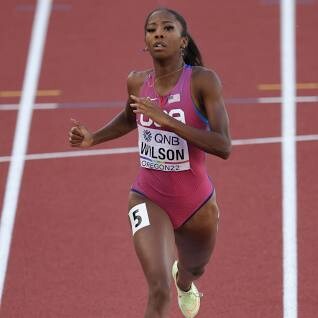
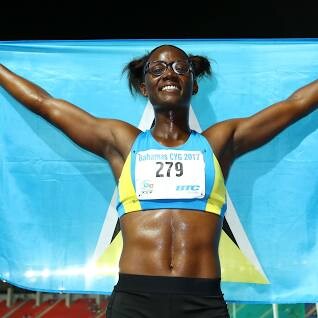
Alfred picked up from where she left off following an indoor season that included PBs of 6.94 for the 60m and 22.01 in the 200m set at the NCAA Indoor Championships for the best ever one-day indoor sprints double. That 6.94 places her joint second on the world indoor 60m all-time list.
After some relay performances to open her outdoor campaign, the 21-year-old improved her previous 200m PB of 22.46 set last May, taking it to 21.91 in her first individual race of the season.
Finishing second in that collegiate race was McKenzie Long in a PB of 22.31, while Alfred’s Texas teammate Rhasidat Adeleke improved her Irish record to 22.34 in third.
In another race, world finalist Melissa Jefferson ran 23.02 (1.8m/s) to win ahead of five-time Olympic gold medallist Elaine Thompson-Herah (23.23). Kiara Grant won the pro 100m race, clocking 10.99 (1.6m/s).
Also getting his outdoor season under way, Lyles ran 20.16 into a headwind (-1.2m/s) to dominate his 200m race. In one of the collegiate races, Alabama’s Tarsis Orogot ran a wind-assisted 19.60 (2.9m/s), while Terrence Jones went quickest in the collegiate 100m races, clocking 9.91 (1.0m/s) to match the Bahamian record.
Like Alfred, Wilson also threatened a world record at the NCAA Indoor Championships when she ran 49.48 to win the 400m. She achieved another fast time on Saturday (15), running a collegiate record of 49.51 to win her 400m race, the day after she claimed a 400m hurdles win in 53.23 when making her individual season debut. Anna Hall finished second in that hurdles race in 54.48 and Masai Russell was third in 55.39. Adeleke ran another Irish record to finish second behind Wilson in the 400m, clocking 49.90.
In the sprint hurdles, two-time world champion Grant Holloway won his 110m hurdles heat in 13.03 (1.1m/s) ahead of Rasheed Broadbell (13.12). Holloway then won the final in 13.05 (0.5m/s). After a wind-assisted 100m hurdles heat win of 12.55 (2.8m/s), 2019 world champion Nia Ali won the pro final in 12.53 (1.4m/s) ahead of world champion and world record-holder Tobi Amusan (12.59), who won her heat in 12.74 (1.1m/s). World indoor 60m hurdles silver medallist Devynne Charlton was third in the final in 12.64.
World indoor champion Jereem Richards got things off to a fast start as he won his first 400m race of the season in a PB of 44.68. Alonzo Russell also ran a PB of 44.73 for the runner-up spot.
Will Claye and Christian Taylor were separated by a single centimetre in the men's triple jump, respectively leaping 16.90m and 16.89m. Thea LaFond recorded 14.13m to win the women's contest.
At the Mt. SAC Relays in Walnut, California, on Saturday (15), Olympic and world silver medallist Rai Benjamin made his 400m hurdles season debut and clocked 47.74 for a dominant victory.
Cravont Charleston won the elite men’s 100m race in a wind-assisted 9.87 (3.0m/s) ahead of Kyree King (9.98) and world 400m champion Michael Norman (10.02).
Juliette Whittaker topped the 1500m in 4:12.49 on Friday and the following day won the 800m in 2:01.79 ahead of her Stanford teammate Roisin Willis in 2:01.97.
Talie Bonds improved her PB to 12.65 (1.2m/s) to win the 100m hurdles.
At the Bryan Clay Invitational in Azusa, California, Nikki Hiltz pipped Michaela Rose in a close 800m race, 1:59.03 to 1:59.08, as both athletes dipped under two minutes for the first time on Friday (14). Claire Seymour (2:00.04), Elise Cranny (2:00.25) and Valery Tobias (2:00.31) also went sub-2:01.
On Saturday (15), Cooper Teare opened his season with a near 1500m PB of 3:34.96 ahead of Fouad Messaoudi (3:35.16).
Australian 15-year-old Gout Gout made a statement on the third day of the Australian Junior Athletics Championships in Brisbane on Saturday (15), clocking 20.87 (-0.1m/s) to win the 200m by almost half a second.
“It means a lot because I’ve been training so much for this. I was really nervous. The gun went, and I was good and I just kept pushing," he told Athletics Australia.
(04/16/2023) ⚡AMP
by World Athletics
Simon Boch wins the Linz marathon
The German Simon Boch won the 21st Linz Donau Marathon, the unofficial winning time: 2:09:25 hours. A course record was set again for the women. Best Austrian was Matthias Maldet.21st Oberbank Linz Donau Marathon is Simon Boch. He is from Germany. With a time of 2:09:25 hours, he remained well below the course record from the previous year by Ethiopian Fikre Bekele (2:06:13).Four Kenyans landed behind him: Evans Kimtai Kiprono (2:09:25) was second, Kemboi Jackson Rutto (2:12:02) third, Luke Kibet Cheruiyot (2:12:15) fourth, Cornelius Chepkok (2:12: 26) Fifth. Best Austrian was Matthias Maldet in 2:31:04 as seventh.
Course record for women
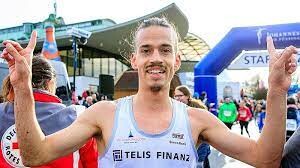
For the third time in a row, the organizers of the Oberbank Linz Donau Marathon were able to celebrate a course record. The Kenyan Teclah Chebet stayed more than three minutes under the previous record in 2:27:18 hours. The German favorite Domenika Mayer from Regensburg (2:28:47) took second place after surviving the corona infection.
(04/16/2023) ⚡AMPLinz Donau Marathon
The Linz Marathon is one since 2002 taking place in April each year marathon in Linz . Besides the classic route over 42.195 km, there is a half marathon , quarter marathon 10.5 km, a relay marathon and competitions for hand cyclists and inline skaters (since 2005).The marathon route starts on the VÖEST bridge the A 7 runs in the...
more...Former Canadian record holder Malindi Elmore will run her first Tartan Ottawa International Marathon
Malindi Elmore will be making her first appearance in the Tartan Ottawa International Marathon leading a star-studded field as part of the Tamarack Ottawa Race Weekend on 27–28 May.
Elmore, 43, debuted in the Athens Olympics in 2004 and returned to the Olympics Games in 2021 in Tokyo. In between, Elmore has won Canadian Championships, competed in triathlon, and had two children.

In her 1500m career Elmore won a bronze at the Pan American Games and at the World University Games. She is also 4x Canadian Champion over 1500m.
But Elmore found her stride in the marathon after her debut in Houston in 2019. She proceeded to break the Canadian record in 2020, running her personal best of 2:24:50. In another outstanding run, Elmore was 9th in the 2021 Olympic Games Marathon, the second highest-ever placing for a Canadian woman. She is also the defending Canadian Marathon Champion.

Elmore is running the Tartan Ottawa International Marathon as a stepping stone to a hopeful return to the Olympic Games next year in Paris.
“I can’t wait to see what Canada’s capital has in store for me,” said Elmore. “My goals for the race are to run competitively and finish strong! The marathon is a race that requires a lot of respect so if I can achieve those two goals, I will run fast!”
“We cannot wait to host Malindi in the nation’s capital for Tamarack Ottawa Race Weekend,” said Dylan Wykes, Elite Athlete Coordinator. “Malindi is such a great role model in our sport as a mom, a coach, and world class marathon runner.”
Tamarack Ottawa Race Weekend is Canada’s biggest race weekend and will run on May 27–28, 2023. You can learn more and register by visiting runottawa.ca.
(04/15/2023) ⚡AMPby AIMS
Ottawa Marathon
As one of two IAAF Gold Label marathon events in Canada, the race attracts Canada’s largest marathon field (7,000 participants) as well as a world-class contingent of elite athletes every year. Featuring the beautiful scenery of Canada’s capital, the top-notch organization of an IAAF event, the atmosphere of hundreds of thousands of spectators, and a fast course perfect both...
more...Boston Marathon preview: will Kipchoge break the course record?
The 127th Boston Marathon is bound to be historic, for two main reasons: it’s the 10-year anniversary of the 2013 Boston bombing. And the men’s marathon will host the world’s fastest marathoner, Eliud Kipchoge, for the first time. Kipchoge is obviously the favourite to win, as he furthers his quest for all six Abbott World Marathon Majors. But nothing comes easy, and here’s why Boston might be Kipchoge’s toughest test yet.
The course and weather
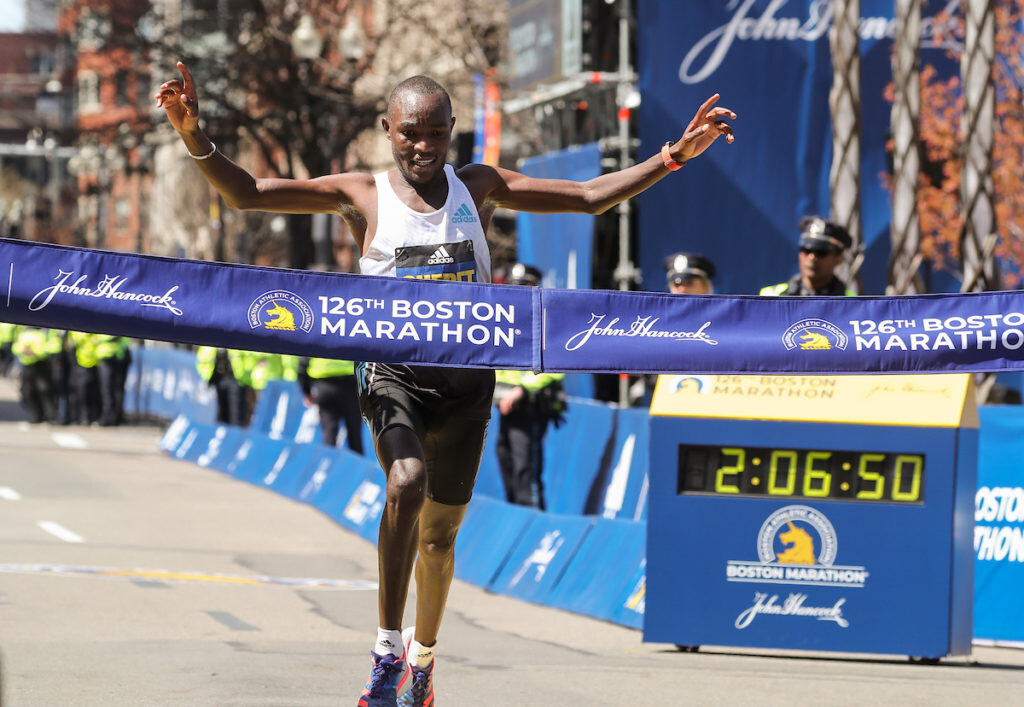
The Boston Marathon course looks like it should be fast, but it isn’t. You start out in the distant suburb of Hopkinton, 150 m above sea level, and cruise downhill for the first eight miles before heading back uphill to finish at sea level in downtown Boston. The course runs almost entirely from west to east, meaning the wind will either be with or against you, which adds variability to the results.
Earlier this month, Kipchoge told Nation that he’s ready for any challenges the Boston course throws at him. “The weather can be unpredictable, but I am trying to be an all-weather man,” said the reigning back-to-back Olympic marathon champion. Kipchoge also said he and his training partners designed a hilly long-run route in Kaptagat, Kenya to emulate the Boston hills, involving 40+ kilometres of rolling hills at 2,500 metres above sea level.

Kenya‘s Geoffrey Mutai holds the course record of 2:03:02 from the 2011 Boston Marathon, when there was a 20 km/h tailwind. Unlike at other marathon majors, pacers are not allowed at Boston, meaning Kipchoge will have to set a 2:02 pace from the get-go if he wants the course record.
Kipchoge’s competition
The 2023 Boston Marathon features of five of the last six marathon majors winners (the only one missing is Amos Kipruto, who will attempt to defend his London Marathon crown on April 23).
Usually, the former Boston champion is the favourite heading into race week, but that isn’t the case when you have the world record holder making his first appearance.
Last year, reigning Boston champion Evans Chebet had a season to remember, becoming the first marathoner to win Boston and NYC in the same year since Mutai did it in 2011. Chebet is fast, and he’s a bit of a tactician, which can work in his favour if Kipchoge mistimes his move. Chebet’s best performance is from the 2020 Valencia Marathon, where he took the win in 2:03:00 (the eighth fastest time in history).
Chebet’s training partner and Kenyan compatriot, Benson Kipruto, is one of the best tactical marathoners in the world. He’s a two-time major marathon champion (Chicago 2022 and Boston 2021) and in both wins he has showcased his ridiculous speed, dropping a 13-high 5K split between kilometres 35 and 40. Kipchoge will need to find a strategy to manage the two-headed dragon of Kipruto and Chebet, who are both familiar with the course and know what it takes to win.
Kipchoge, Kipruto and Chebet will be the main contenders to watch, but there are a few other candidates who could either pull off an upset or get dropped by Kipchoge around kilometre 35, starting with Tanzania’s Gabriel Geay. Geay has always been the bridesmaid but never the bride–he was second in Valencia last December, fourth at Boston in 2022 and seventh at the 2022 World Championships. The 2:03-flat runner ranks inside the top 10 for all-time in the marathon but has yet to win a major–will he get his first win in Boston?
Shura Kitata of Ethiopia was the last man to beat Kipchoge in a marathon major, which happened on a wet day at the 2020 London Marathon. Kitata’s results have been up and down since his 2020 win, but he bounced back last fall, placing second at the 2022 NYC Marathon. Like Kipruto, Kitata is much more of a tactical racer than a speedy one. His personal best of 2:04:49 was set as a 21-year-old at the 2018 London Marathon.
A dark horse who might be a familiar name to many Canadians is the 2022 Ottawa Marathon champion, Adualem Shiferaw of Ethiopia. Shiferaw won Ottawa in a course record 2:06:04 on a warm and windy day in the nation’s capital last year, and has only lost one marathon since 2018 (he was 2nd at the 2022 Riyadh Marathon). This is Shiferaw’s first marathon major, and he has little to lose. If you are looking for a sleeper pick, Shiferaw could certainly catch a few people by surprise.
Prediction
Kipchoge will win this race, but he won’t do it in course record time. The conditions won’t be perfect, and there’s too much uncertainty and variability around the Boston course for him to go out at a 2:01 or 2:02 pace. If I had to guess, Kipchoge will execute a similar race strategy as he did in the Tokyo Olympic marathon, where he sat with the lead group for 25 km and then took matters into his own hands, winning by a minute and a half.
Although he may not have the Boston experience, he is the fastest athlete in the field. What matters to Kipchoge first and foremost is getting the victory, and he’ll execute whatever race strategy it takes to get the job done. Look for him to sit on former champions Chebet and Kipruto early on, and make his move around the 25- to 27-kilometre mark before the Newton Hills, then ride the roar of the crowd home to Boylston Street.
Canadian Running pick: Eliud Kipchoge (Kenya) – 2:05-mid
Stay tuned for our women’s marathon preview.
How to watch
The 2023 Boston Marathon will be broadcasted on TSN 5 beginning at 8:30 a.m. E.T. on Monday, April 17. The men’s open race will begin at 9:37 a.m. E.T. and will likely conclude around noon E.T.
Canadian Running will be your home for the 127th Boston Marathon, featuring live-tweeting for April 15th’s B.A.A 5K and the Boston Marathon. Follow us on Twitter and Instagram for news and updates.
(04/15/2023) ⚡AMPby Marley Dickinson
Boston Marathon
Among the nation’s oldest athletic clubs, the B.A.A. was established in 1887, and, in 1896, more than half of the U.S. Olympic Team at the first modern games was composed of B.A.A. club members. The Olympic Games provided the inspiration for the first Boston Marathon, which culminated the B.A.A. Games on April 19, 1897. John J. McDermott emerged from a...
more...Norway’s Sondre Moen and Visiline Jepkesho of Kenya head the start lists of Vienna Marathon 2023
Fine elite fields have been assembled for the Vienna City Marathon, which will be staged for the 40th time on 23rd April.
Norway’s Sondre Moen and Visiline Jepkesho of Kenya head the start lists of the jubilee edition. The Vienna City Marathon is Austria’s biggest one-day sporting event and the only road race in the country that features a World Athletics Elite Label. Including races at shorter distances organisers have now registered more than 38,000 entries. Over 9,000 of them will run the classic distance.
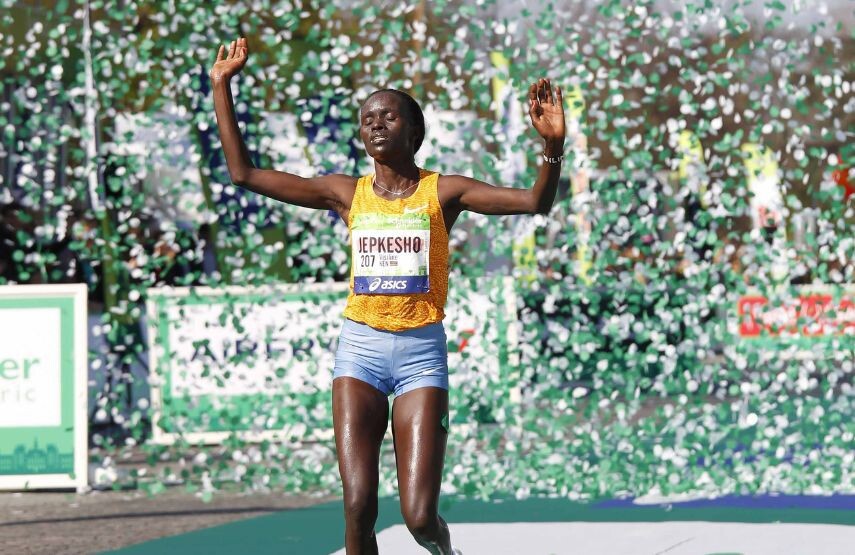
The men’s field includes eleven athletes with personal bests of sub 2:10. While Sondre Moen features the fastest personal best with a time of 2.05:48 the Norwegian former European record holder will concentrate on running a solid sub 2:10 race to come back from a less successful period. Therefore Abdi Fufa and Bethwel Yegon, who have both been added to the field in recent days, as well as Samwel Mailu and Titus Kimutai are more likely regarded as favorites.
Ethiopia’s Fufa has a PB of 2:05:57 from 2021 and knows the Vienna City Marathon well. He placed tenth here a year ago with 2:10:32. Bethwel Yegon is the fastest Kenyan on the start list and is said to be in fine form. He ran 2:06:14 in 2021 when he surprised with a second place in Berlin. Samwel Mailu looks well placed for a personal best. The Kenyan ran 2:07:19 in Frankfurt for the runner-up position last October. It was an unexpected marathon debut by Mailu since he was originally entered as a pacemaker. Fellow-Kenyan Titus Kimutai ran his marathon debut last autumn as well. He clocked 2:08:31 and was seventh in Linz, Austria. Germany’s Sebastian Hendel is among those athletes looking to break 2:10 for the first time. Andreas Vojta of Austria might also target such a result.
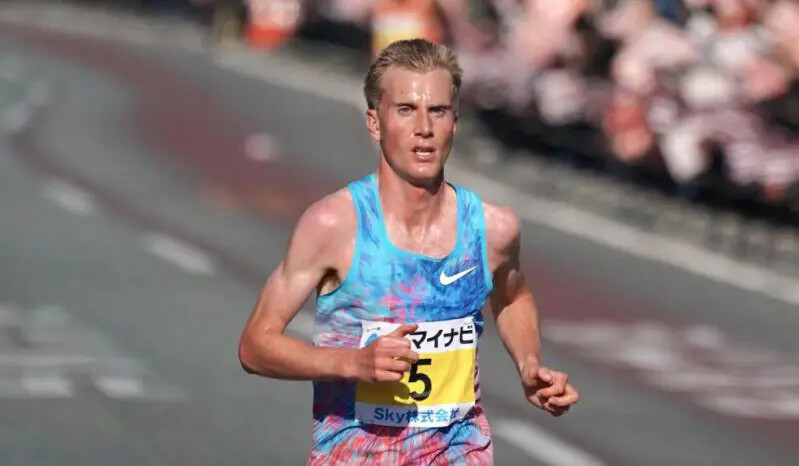
Kenya’s Charles Ndiema and Ser-Od Bat-Ochir of Mongolia as well as Ethiopia’s women only 5k world record holder Senbere Teferi had to withdraw from the race recently. However the women’s elite field of the Vienna City Marathon looks strong. Ten athletes have personal bests of sub 2:30 and four of them have already run faster than 2:23:30.
The former Paris and Rotterdam Marathon champion Visiline Jepkesho is the fastest woman in the field with a PB of 2:21:37. It looks likely that a Kenyan women will win the Vienna City Marathon for a sixth time in a row since the next couple of athletes on the entry list are also from Kenya. Magdalyne Masai (PB: 2:22:16), Rebecca Tanui (2:23:09) and Agnes Keino (2:23:26) should be among the contenders in Vienna. Fellow-Kenyan Caroline Jepchirchir hopes to improve her PB of 2:26:11 and could be among the top finishers. Poland’s Angelika Mach and Branna MacDougall of Canada are the fastest non-African runners on the list with PBs of 2:27:48 and 2:28:36 respectively. Julia Mayer of Austria is expected to perform well and might achieve a time of around 2:30:00.
(04/15/2023) ⚡AMPby AIMS
Vienna City Marathon
More than 41,000 runners from over 110 nations take part in the Vienna City Marathon, cheered on by hundreds of thousands of spectators. From the start at UN City to the magnificent finish on the Heldenplatz, the excitement will never miss a beat. In recent years the Vienna City Marathon has succeeded in creating a unique position as a marathon...
more...New unbelievable Netflix documentary unpacks 2013 Boston Marathon bombing
This year marks the 10th anniversary of the 2013 Boston Marathon bombing, which shook the world and the running community, killing three and injuring more than 200 people. On Wednesday, April 12, Netflix will release a three-part documentary series, American Manhunt: The Boston Marathon Bombing, which looks back on the attack and its aftermath, but also on the past 10 years and the events that have transpired since the bombing.
The documentary looks at the four days after the bombing and the 101-hour search for 19-year-old Dzhokhar Tsarnaev and his 26-year-old brother Tamerlan. Tamerlan Tsarnaev died on April 19 (four days after the marathon), following a confrontation with Boston police, and after his brother accidentally hit him with a stolen SUV while trying to escape. Dzhokhar Tsarnaev was convicted of the bombing and sentenced to death in 2015. He remains on death row.
American Manhunt also features never-seen interviews with members of law enforcement, such as then-Boston Police Department superintendent William Evans and then-Boston Police commissioner Ed Davis; survivors including Karen McWatters, whose friend Krystle Campbell died in the attack and who lost her leg as a result of the bombing; and Youssef Eddafali, who had been a friend of Dzokhar’s before the bombing, and more.
“It took a very long time for us to be able to contextualize and understand what happened in such an unbelievable manhunt, but also emotionally, in terms of what happened to the victims and to the entire city,” said director Floyd Russ in an interview to The Independent. “There are so many different types of trauma in the story.”
The city of Boston will observe the 10th anniversary of the attacks on Saturday, April 14, with One Boston Day: a day for volunteer events and acts of kindness. There will be a shoe drive, a donation drive for food, baby supplies, and clothing, and a blood drive, plus many other initiatives to honour the city’s “spirit of care for one another in response to the tragic events from 2013.”
The documentary will be released on Netflix U.S. and Canada on April 12.
(04/15/2023) ⚡AMPby Running Magazine
Unlock the Benefits of Kinesiology Tape
How to use this stretchy, therapeutic tape to effectively reduce pain and support muscles, tendons, and ligaments (almost) anywhere on your bodyWhatever your sport, avoiding or mitigating injuries is as important as logging miles or sessions. But if you find yourself toeing the line between pushing it too far or sitting on the sidelines, one preventative measure can help support your body so you can keep training: kinesiology therapeutic tape. Utilizing this elastic tape to reduce injuries and boost performance isn’t a revolutionary idea in exercise science—especially when integrated with other body maintenance and recovery best practices. Using the right tape effectively, however? Now that’s another story.
And it’s not just elite athletes who can benefit, either. You don’t need to resemble the colorfully taped Olympic beach volleyball champs who come to mind. When applied correctly, kinesiology tape can ease pain, mitigate injuries, and reduce post-workout muscle soreness in mortal athletes engaged in any type of outdoor exertion or active venture. Here’s how.

Not surprisingly, not all kinesiology tapes are created equally. When you compare options, look for one that offers non-restrictive movement so you can continue to train comfortably. High-quality adhesives help tape to last longer, offering more support to the target area before, during, and after a workout. KT Tape Pro stands up to your toughest workouts. Made from synthetic fibers featuring an elastic core, this performance tape provides more support than cotton kinesiology tape without restricting movement. The adhesive also lasts four to seven days through sweat, swims, and showers—meaning it’s an easy addition to a daily, or even weekly, routine. Plus, rounded corners on each strip reduce snags and peeling. Sure, your old-school gym trainer’s tape can provide support in a pinch. And modernizing to a kinesiology tape can address a number of common athletic injuries. But creating the perfect balance of support and flexibility is an art. One of the most common errors? Applying the tape right before activity. It needs an hour to adhere; proper advance application time helps it last for days (vs. hours) of continuous use. Strips should also be sized long enough to cover the affected area without stretching 1.5 inches at either end. KT Tape Pro comes in pre-cut strips that take the guesswork out of taping. But before you even take the backing off the tape, watch a video to learn the proper taping technique for the target area (or areas) you’re experiencing pain. KT Tape has a library of 35+ video tutorials to help you utilize the tape like a pro. Seriously, you’ll feel like you just walked out of your PT’s office.
Once you have a game plan, it’s time to prep your skin before applying the tape. Remove any lotions, body oils, or sunscreen. You may want to trim excess body hair. Then, wipe down your skin with rubbing alcohol and let the area dry before applying the tape directly to your skin. For best results, apply KT Tape at least an hour before training. Removal is painless and simple even with body hair, where first applying some baby or mineral oil to the tape, or peeling off in the shower, can also help.Kinesiology tape isn’t just helpful for supporting muscle groups and injuries during training. If soreness affects your ability to stick to a movement routine, KT Tape can help your body recover by supporting sore muscles and joints before, during, and after your workout. Studies have shown kinesiology tape helps to aid recovery and reduce soreness by up to 50 percent when worn during and at least 48 hours after exercise. Integrate it into your routine as general preventative (eg. tape before, foam-roll after) and as a key body-maintenance tool to keep you out there performing with less pain and risk of injury.
KT Tape moves with you so you can crush every moment and unleash your potential. The product provides long-lasting support and pain relief for muscles, tendons, and ligaments for anyone who loves to move, wherever your adventures take you.
(04/15/2023) ⚡AMPby Outside
Hundreds of dogs to run at Boston Marathon to honour late pups
On April 16, hundreds of furry friends will take to the 127th Boston Marathon course to honour Spencer and Penny, the official Boston Marathon dogs who died of cancer in February.
More than 100 golden retrievers and their owners are expected to attend and walk to the finish line in a special one-mile event organized by a regional group called MA Golden Meetups. The doggo parade will be the day before the world’s most prestigious marathon on Patriots Day, April 17.

In 2018, Spencer went viral after he was seen in a video holding “Boston Strong” flags in his mouth, cheering on the marathoners racing past him in the rain. Since 2014, Spencer has watched the marathon near Ashland State Park (around the five-mile mark on the Boston course), and Penny, who was three years younger, was often seen by his side.
This year’s race will be the first marathon Spencer and Penny will not attend since 2013. The two golden retrievers will also be commemorated on a billboard in Ashland, Mass., with the slogan “Forever Boston Strong.”
Boston Strong was a slogan created to empower the community after the 2013 Boston Marathon bombing. This year marks 10 years since the catastrophic event.
“We miss you and are proud to call you a friend and forever the ‘Official Dog’ of the Boston Marathon,” the Boston Athletic Association (B.A.A.) said in a tweet.
The dog walk will start at 10 a.m. outside the Boston Common and end at the Boston Marathon finish line on Boylston St. “In memory of Spencer and Penny, the Boston Marathon Goldens, and so many of our beloved furry members who have battled canine cancer,” the website states.
(04/15/2023) ⚡AMPStrava adds Spotify integration in new update
After years of having to switch back and forth between apps, Strava has finally introduced music integration with Spotify. The world’s most popular fitness tracking app for runners will release a new update on April 20, launching Spotify integration to help all users easily access music, podcasts and audiobooks from the Strava app.Users can now play, pause, resume, skip and browse songs from the record screen on the fitness tracker app.
There is no longer a need for Spotify users to switch between the two apps while running to put on their favourite song or podcast. This new integration easily allows users to connect to their favourite tunes and sounds with a tap of a button.

This new integration works for premium and free Strava users.
“We are excited to partner with a global leader like Spotify to seamlessly integrate music and movement on Strava,” said Mateo Ortega, Strava’s VP of connected partnerships. “This new feature further solidifies Strava’s position at the center of connected fitness and continues to demonstrate the power of the global community of active people on the app.”
"One of our biggest goals at Spotify is to be everywhere our listeners are–whether that’s on a run, in the gym, or any place in between,” said Ian Geller, VP of development at Spotify. “The integration with Strava is another way we are moving with our listeners and helping them connect to the music and audio they love.”
To celebrate their new integration, Strava has taken over the popular Spotify “Workout” playlist. Therefore users can listen to the top curated workout songs to help them get moving on April 20. You can check out the Spotify playlist here.
(04/15/2023) ⚡AMP
by Running Magazine
Evans Chebet will be facing the fastest man in the world to defend his Boston Marathon title
Boston Marathon champion Evans Chebet relishing clash with the real ‘G.O.A.T’ .
Evans Chebet will be facing the fastest man in the world over the distance when he steps on the road on Monday to defend his Boston Marathon title.
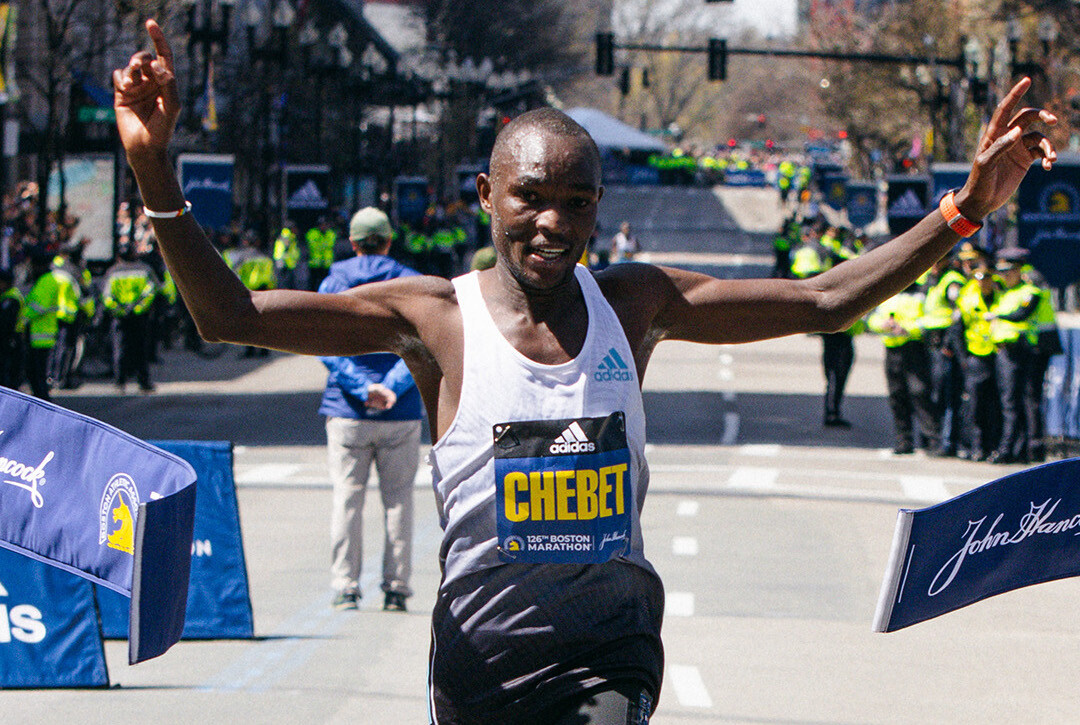
Chebet cannot wait to clash with marathon record holder Eliud Kipchoge whom he will be racing against for the first time in his career.
The Kapsabet-based Chebet says he is highly motived to compete against Kipchoge considered the Greatest of All Time (G.O.A.T) in marathon racing.
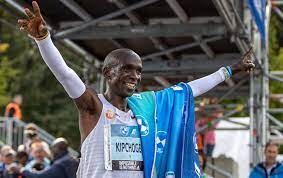
“I have never competed against the fastest man over the distance. We are finally meeting in Boston and I believe the race will be faster and that will help me improve on my personal best. My target is to be on the podium. Expect an exciting race on Monday,” said Chebet who trains under 2Running Athletics Club in Kapsabet, Nandi County.
Chebet, will also be competing against his compatriot and training mate Benson Kipruto.
The reigning Boston Marathon champion said that his preparations for the race have gone on well, he is injury free and wants to show what he has got on the road on Monday.
“I love the Boston Marathon course and given that we shall be competing with other Kenyans, it will be a tough affair but a race normally starts after 35km and that is where you can know if you will finish as a winner,” said Chebet.
In last year’s race, Chebet pulled away from a loaded field in the last few kilometres to surge to victory in 2:06:51. Compatriot Lawrence Cherono finished second in 2:07:21 while Benson Kipruto was third in 2:07:27.
Kipruto, Chebet's training partner, won the 2021 Boston Marathon champion.
He will be coming up against Kipchoge for the second time on Monday after the 2021 London Marathon where he emerged seventh while Kipchoge settled for eighth position.
“In 2021, I competed against Kipchoge though we both finished outside the podium. I believe that we'll have a good race this year. I will be eyeing a podium position despite the stiff competition. It's a rich field but I will do my best and apply what I have been working on in training,” said Kipruto, the 2022 Chicago Marathon champion.
Other Kenyan athletes who will be competing in the race include John Korir who was third in last year’s Chicago Marathon, Nobert Kigen, Mark Korir, who was second in 2022 Berlin Marathon, Michael Githae, and the 2021 New York Marathon champion Albert Korir.
(04/14/2023) ⚡AMPby Bernard Rotich
Boston Marathon
Among the nation’s oldest athletic clubs, the B.A.A. was established in 1887, and, in 1896, more than half of the U.S. Olympic Team at the first modern games was composed of B.A.A. club members. The Olympic Games provided the inspiration for the first Boston Marathon, which culminated the B.A.A. Games on April 19, 1897. John J. McDermott emerged from a...
more...Australian YouTuber Beau Miles runs marathon in a hotel
Australian YouTuber Beau Miles was looking for a change of scenery on his morning run in Seattle, so he decided to run a marathon inside the Hyatt Hotel, where he was staying.
Miles’s goal was to run every inch of the hotel, including hallways, stairwells, conference rooms, lobby, pool deck and bar, and anywhere else that was remotely runnable.

“When I asked for permission from the hotel manager, I was shocked when she said yes,” said Miles. “I even asked: Are you sure about that?, and she replied, “Yes, that’ll be fine.”
In the video, Miles (an ideal last name for a runner), jogs around the hotel and is seen even making pit stops at the continental breakfast, referring to it as his “unsanctioned aid station.”
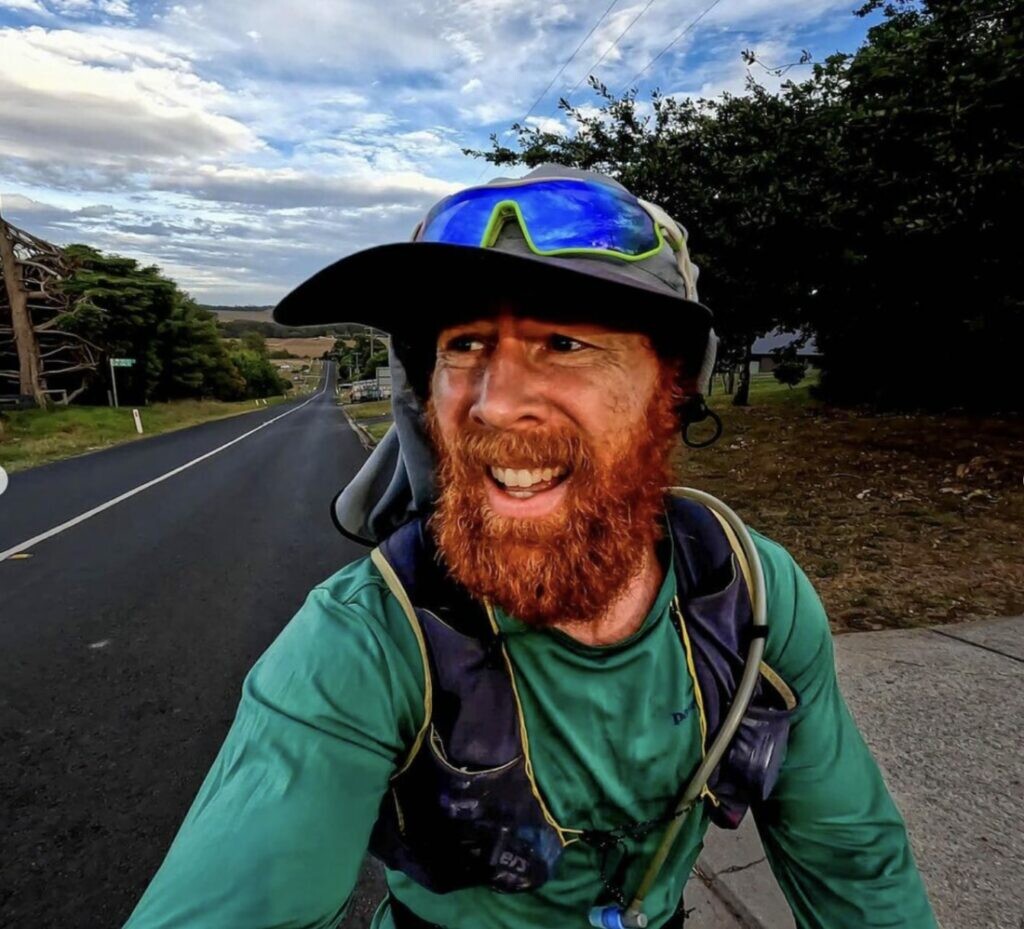
Running around in the same building may seem a little tedious, but according to Miles’ calculations, each lap (every floor and room) was around 10 kilometres. “The novelty of running a marathon in a hotel did not wear off,” said Miles. “I had a bloody good time, and I got to run in a place I normally wouldn’t get the chance.”
Miles is an Australian outdoorsman and YouTuber with over 500,000 subscribers, who does quirky outdoor challenges around two activities that usually don’t go together, like running a marathon in a hotel. He’s also done other outlandish running challenges on YouTube, such as running a mile an hour for 24 hours, and a 90-kilometre work commute.
(04/14/2023) ⚡AMPby Running Magazine
Running 900 km to the Boston Marathon2
On Tuesday night in Toronto’s Parkdale neighborhood, it was business as usual for community builder Quinton Jacobs. Jacobs and his team of 13 runners departed on their four-day, 904.5-kilometer journey from Toronto to the historic Boston Marathon finish line on Boylston St.
The team left Toronto on April 11, at 8 p.m. and plan to arrive in Boston on Saturday–two days before the start of the 127th Boston Marathon.
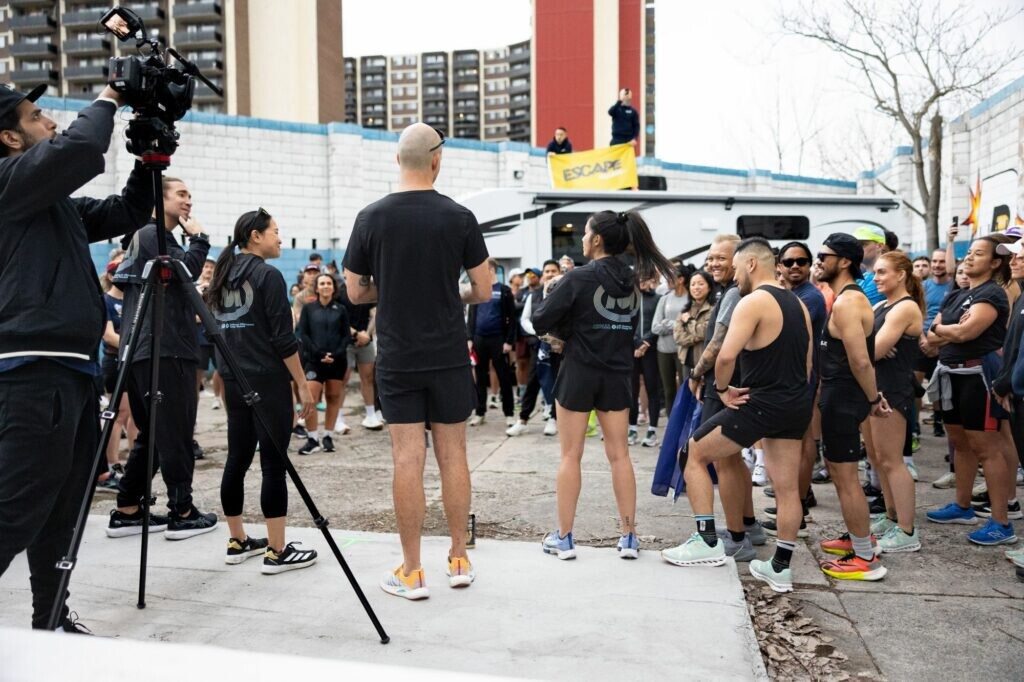
Jacobs’s Escape project started out as a ridiculous idea with his friend Anoke Dunston on a 2019 trip to New York. “We saw the first Escape to NYC as a challenge,” he says. But Jacobs ended up tearing his Achilles playing basketball before the journey started, so he did not get to run in New York City.
After Escape to NYC, Jacobs and Dunston knew that the project had the potential to turn into something extraordinary. In 2021, the two men ran to Chicago for the Chicago Marathon with a team of 12 runners from different backgrounds. “We decided that Chicago was our canvas, and we wanted to create something entirely new,” says Jacobs.

Their past two destination ultras to New York and Chicago have been done in the fall, and Boston is their final major, facing their hardest Escape route to date, encountering the Appalachian Mountains of upstate New York and western Massachusetts.
“Escape is about celebrating the diversity of our running community,” says Dunston. “Our goal is to bring people together, no matter their background.”
The team aspect is special for Jacobs, who met his teammates through volunteering in the running community. “We have a team of people from Toronto, Montreal, New Orleans and Chicago,” says Jacobs. “People are all tapped into our ground for all different reasons–it’s special.”
Jacobs is a familiar face to many in the Toronto running scene, as he has been giving back to the city as a volunteer for seven years. He was named community builder of the year by Canadian Running in 2021.
This year Jacobs, Dunston and Hamilton’s Andre Morgan launched their own not-for-profit charity, Ubuntu, which gives back to underprivileged communities in Toronto. Ubuntu is a Zulu word meaning that we are all connected and that one’s sense of self is shaped by relationships with others. “I love to bring people together, where they can enjoy each other’s company.”
Toronto filmmaker and videographer Jason Dam of Tenfold Productions will accompany Jacobs, Dunston and the 11 other runners, capturing all the emotions and moments from their Boston journey into a documentary.
“Running isn’t the hard part,” says Dunston. “The hardest part is battling your body on sleep deprivation and trying to be the best version of yourself for the team.”
“There’s a beauty and a struggle to all our Escape challenges,” Dunston says. “But I think the triumph to battle through means everything.”
You can follow their journey from Toronto to Boston via their Instagram page, @escape_to___. The Escape to Boston team is projected to arrive in Boston on the morning of April 15, and is hosting a panel discussion at the Boston Marathon expo on Saturday at 4 p.m. on how ultra running is changing.
(04/14/2023) ⚡AMPby Marley Dickinson
Boston Marathon
Among the nation’s oldest athletic clubs, the B.A.A. was established in 1887, and, in 1896, more than half of the U.S. Olympic Team at the first modern games was composed of B.A.A. club members. The Olympic Games provided the inspiration for the first Boston Marathon, which culminated the B.A.A. Games on April 19, 1897. John J. McDermott emerged from a...
more...No Time to Run? Five Creative Ways to Find Time
Our lives are busier than ever.
We are all frantically juggling family life and long working hours; some statistics showing the average working week in the US to be close to 36 hours, with some professions working 40 or more.
That’s before we even include cooking, housework, gardening and DIY, social engagements, study and additional commitments.

With so many demands placed on us, it’s no wonder that training slips down the list of priorities.
But lets look at things a little more closely.
Are we really that busy? Or are we just poor at time management or just making excuses?

Today we are going to dive into where our time goes, and how we can make sure running remains enough of a priority to consistently keep up with training. We will share things to think about when it comes to being creative with your training, and then 5 helpful ways to fit training in when life gets hectic.
Why Is There No Time For Running?
This chart is from The Bureau of Labor Statistics 2014 showing average leisure time of Americans (over the age of 15). A typical American has 5 hours of leisure time a day.
Take a look at the blue section of the chart. Imagine how much time we’d have for running if we didn’t spend nearly 3 hours of it watching TV? So if you’re spending a bit too much time in the blue segment of this chart, then the answer to the ‘How do I find time to run?’ question is quite easy.
Turn off the TV! And work on spending a bit more time in the purple section.
But lets say you don’t spend 3 hours a day watching TV.
Lets say you work long hours but on top of that, you might have children to care for, dogs to walk, housework, cooking, washing, ironing and admin to take care of. Finding time to run can be really tough.
Make running a priority using creative runner friendly hacks
The busier we get, the more creative we have to be about how we spend our time.
It’s easy to waste many hours on the internet, watching TV, on your mobile phone or just frittering time away. You have to get tough with yourself and become incredibly efficient – don’t get distracted by things are less important.
In our frantic, busy lives, if you really want to find time to run, you have to find a way to make it work and get organized.
According to Tony Phillips, aka ‘A Mile A Day’ from the UK, the main thing that stops us finding time to exercise is not giving it a high enough priority in our lives.
‘When we have enough time, we usually manage to fit exercise in’ he explains ‘but when we get busy, exercise is the thing that gets pushed aside, because it’s not deemed as important. But running is one of the best ways to help us deal with stress and overwhelm. Yet the time when we need it most, is the time we tend to short-change ourselves’.
We all know intrinsically that exercise is one of the most important things we can do for our health and we need to make it a top priority, but it’s easier said than done.
‘People who make exercise high in their list of priorities are generally the ones who manage to fit it in’ explains Tony, ‘They understand the connection between physical fitness, health and mental wellbeing’.
That is certainly true for me.
I’ve learned over the years that running is a vital part of my life. It’s like medication, and without it I feel physically sick, grumpy and can’t function well.
That doesn’t mean I’m always joyful about going for a run, it just means that I need it in my life and on the days I run I ALWAYS feel better.
So I’ve learned to prioritize. It might mean I go to bed early, or it might mean I miss out on a social event or a TV show, so I can get up early the next day to run.
Rather than going out for dinner too often with my husband, we choose to have a ‘date run’ instead. We get to spend time together and catch up, but we’re doing it at the same time as running, rather than over a bottle of Rioja. Same goes for catching up with girlfriends for a coffee. Instead, we meet for a run or at the very least a dog walk.
It’s not an obsession; it’s just a choice. And in our busy lives, we can’t have it all. We have to make choices.
Schedule your run into your day for a guaranteed win
According to Tony, there are two other behaviors that set successful runners apart from the ‘excuse makers’. ‘The other thing they do is schedule it into the day’ says Tony ‘they know it’s high priority, and they don’t immediately move it when something else comes up.
They also recognize that a short run is better than none at all. Even just one mile a day is easier to fit into gaps in your schedule, and keeps you in the routine of regular exercise’.
Little and often is the key.
It’s better to be consistent, but do regular short runs, rather than overwhelm yourself with big mileage goals.
On that note, I find standard training plans for busy people often don’t work. You need to devise your own flexible plan to fit in around your own lifestyle or work with a coach who understands you and can tailor your training to your life conflicts. This is where Runners Connect individualized training comes in!
Learn HOW to train, what you need to do to meet your goals and work with your schedule to make it happen. A strict training plan (which isn’t personalized to you) can add more stress and the sense of failure when you don’t manage to follow it.
Make it a challenge to find creative ways to get your run in
Developing a ‘growth’ mindset is a vital tool to helping you become more efficient at prioritizing your running.
The ‘growth’ mindset is a concept developed by Carol Dwerk, a Professor of Psychology at Standford University.
Now:
It’s much more than having a ‘positive attitude’.
It teaches us that we can change the way we think; finding solutions to problems rather than seeing barriers. Becoming more resilient and resourceful.
Someone in the fixed mindset (which is bad) might say ‘I have a long commute to work I don’t have time to train’.
Whereas someone in the growth mindset would think ‘I have a long commute, could I spend some of that running, change my stop on the train or run part of the way home? How can I make that happen? What do I need to do to make it work?’
It’s about looking for creative solutions and finding ways around barriers.
Don’t ‘go hard’ all the time
There is no scientific evidence for this (you heard it here first), but it’s something I’ve noticed over the last 20 years of my coaching work.
Running hard every single time you go out could be making it difficult for you to stay on track with your training.
Runners Connect often posts about the importance of easy running, how 80% of your runs should be easy, even if you are only running a few times per week.
”If your brain always associates running with pain, eventually it’ll persuade you to stop.”
If on the other hand, your brain associates running with pleasure and enjoyment (perhaps a slower pace and gradual increase of miles) then it’s far more likely you’ll continue and WANT to go running, rather than dread it. Try it and see what happens.
5 Ways To Fit Your Training Into A Busy Schedule
‘Get your training done as early in the day as you can’ advises Tony. ‘Go to bed early, get up early and get it done. It sets you up for the day and makes your more productive. There will ALWAYS be something else to do, so get your run done first’.
‘Make it a habit’ continues Tony ‘Habits are easy to form when you do them every day. Even if you don’t run every day, try to make it the same TIME each day you run. It helps to have a trigger. For example, you run immediately after getting up, or always at lunchtime at work. The idea is that you embed it as something you do automatically’.
Don’t underestimate the power of a training partner. Training with someone else at least once a week is a great way to make sure you get out there and run. Book in with a friend or group session. The commitment of meeting someone else will mean you’ll be less likely to let them down and you’re more likely to train. If you do not have anyone else in your area to run with, get many of the same benefits by joining a running community like Coach Jamie Dodge talked about in the podcast Do I Need a Running Coach?
‘Make sure your training schedule works for everyone else in the household’ advises Tony. ‘If you’re finding it tough to get out, and the people around you are complaining or encouraging you stay at home, it makes it doubly difficult’. Perhaps get them to join you? Or at least make sure they know your plans and how important it is to you. Don’t allow anyone else to derail you or your enthusiasm.
And finally, leave some gaps in your schedule. Life has a habit of disrupting plans and things always take longer than you think. ‘All time management systems work best when you build some spaces in for contingency’ says Tony. ‘It reduces stress and gives you another window to run when things go off schedule’
And if you’re still struggling, here’s a final piece of advice from Life Coach and time management guru Tony Philips:
“You have 168 hours each and every week. If you work a 40-hour week and sleep 8 hours every night, that leaves 72 hours or just over 10 hours per day.
Of the remaining time how much of it do you spend doing things that benefit you less than training, such as watching television, wasting time on your computer, playing video games or on your mobile phone?
(04/13/2023) ⚡AMPby Sarah Russell
Indefatigable Edna Kiplagat to tackle Boston course again, at 43
It is commonly said that age is nothing but a number.
At 43 years old, two-time world marathon champion Edna Kiplagat will be out to prove that when she lines up among the elite athletes for the 127th Boston Marathon race on April 17 in the USA.
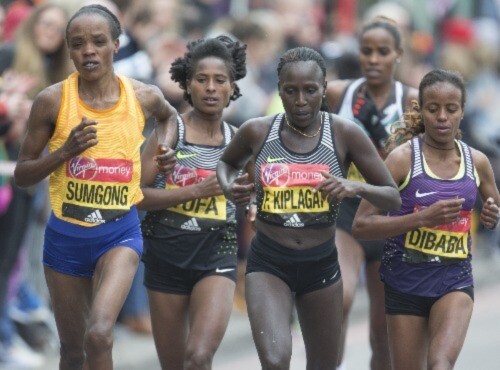
She will be heading to Boston for the sixth time where she is optimistic of good results after training for the last four months.
Nation Sport caught up with her at Kipchoge Keino Stadium in Eldoret, Uasin Gishu County while she was doing her speed session in readiness for the race.
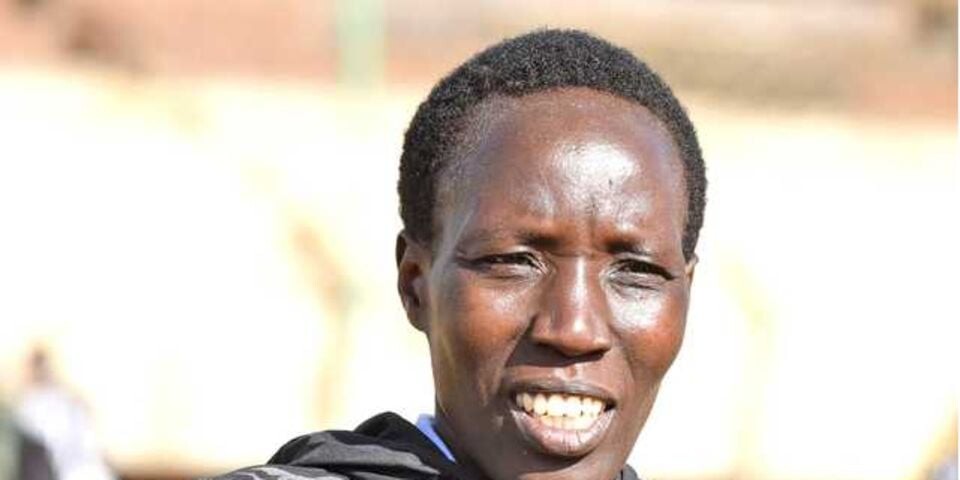
Maiden win
Kiplagat won the title at her first attempt in Boston in 2017. She returned the following year but finished ninth, in 2019 she was second. The 2020 edition was postponed due to the Covid-19 pandemic.
She went back in 2021, finishing second behind Diana Kipyokei, but was later declared the winner after Kipyokei was banned for using a banned substance.
Kiplagat was fourth last year.
Kiplagat who lives and trains in Colorado, USA said she shifted her training to Kenya which has favourable weather conditions.
“I started training in December last year when I learned that I will be racing in Boston. But in January and February, it was so cold in the US, I decided to come to Kenya because the weather is favourable,” said Kiplagat.
She will be competing against Kericho-based Sheila Chepkirui, former New York Marathon champion Joyciline Jepkosgei, 2021 Amsterdam Marathon Angela Tanui and Fancy Chemutai.
Also in the elite field are Maurine Chepkemoi, Mary Ngugi, Viola Cheptoo, Vibian Chepkirui and Hellen Obiri.
(04/13/2023) ⚡AMPby Bernard Rotich
Boston Marathon
Among the nation’s oldest athletic clubs, the B.A.A. was established in 1887, and, in 1896, more than half of the U.S. Olympic Team at the first modern games was composed of B.A.A. club members. The Olympic Games provided the inspiration for the first Boston Marathon, which culminated the B.A.A. Games on April 19, 1897. John J. McDermott emerged from a...
more...Runners chase popular Strava segment in Denver airport
Here's an idea of how to kill time waiting for your next flight.
Strava segments are an athlete’s best friend, and there is nothing more infuriating when you get an email about someone who took one of your crowns or local legends, especially if it’s in a place you can’t get to. This 150-meter Strava segment in Terminal B of the Denver International Airport has gained popularity online after a few runners posted TikTok videos of them sprinting through the airport, trying to beat the record.

By the looks of it, the segment named “gate change gnar” is a 150-meter sprint in Terminal B at Denver International Airport. The record time is 19 seconds and is held by Jared Murphy of Provo, Utah, and Elsa Westenfelder of Missoula, Mon., who has the women’s CR of 26 seconds.
Segments are one of Strava’s most popular features, as it gives everyday runners a glimpse of how their times stack up against their friends and other runners. Segments are portions of popular running and cycling routes created by Strava members where athletes can compare times and see where they stack up on a leaderboard.
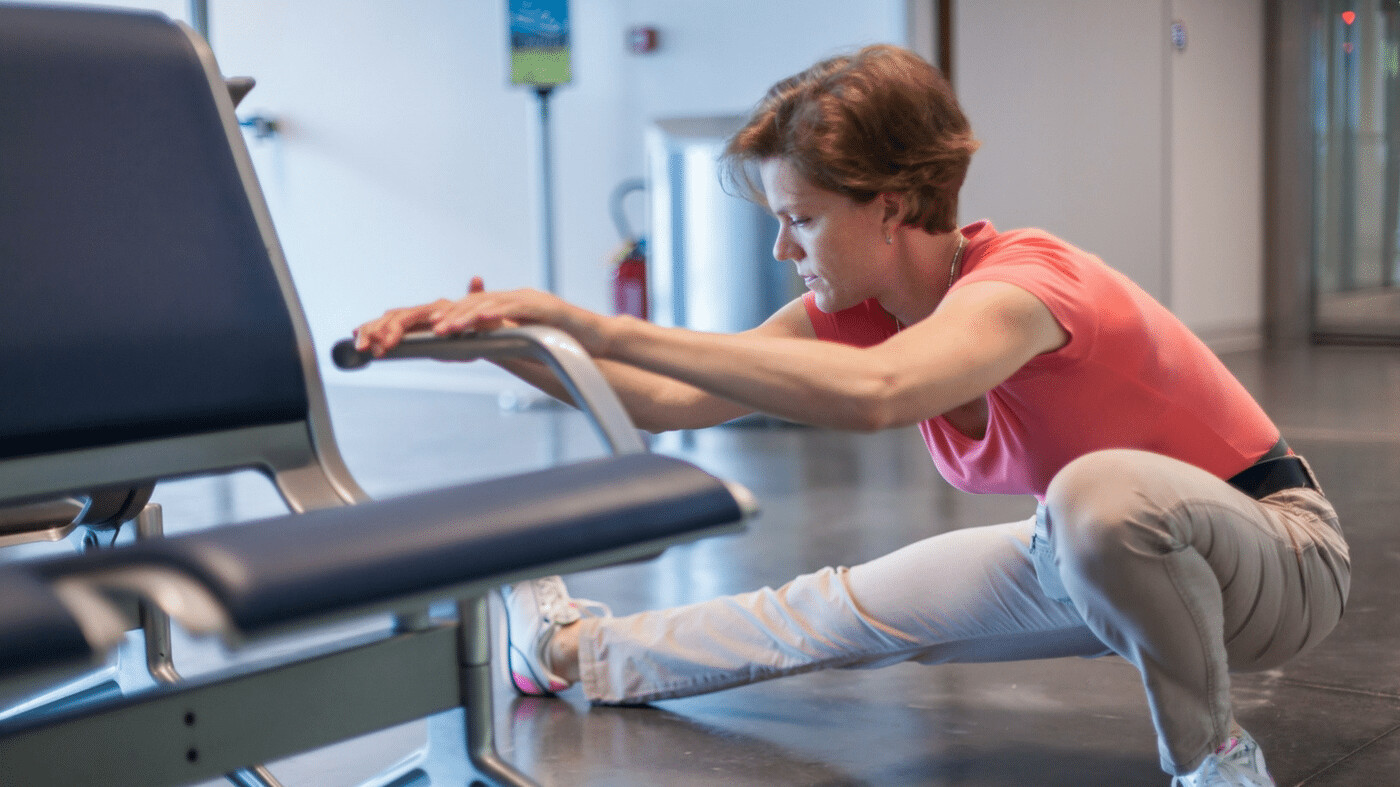
Most people will kill time waiting for their flight at a restaurant, bar or shop–you truly know you’re a runner (or addicted to Strava) when you’re thinking about how you can become the local legend in ‘Terminal A Sprint’ in the two hour time window before your flight to Miami.
In a few videos, the runners received a few strange looks from security and airport patrons, which I don’t blame them for. An airport can be a great place for segment chasing because if you do get stopped by security, you could say you were trying to catch your flight.
(04/13/2023) ⚡AMPby Running Magazine





